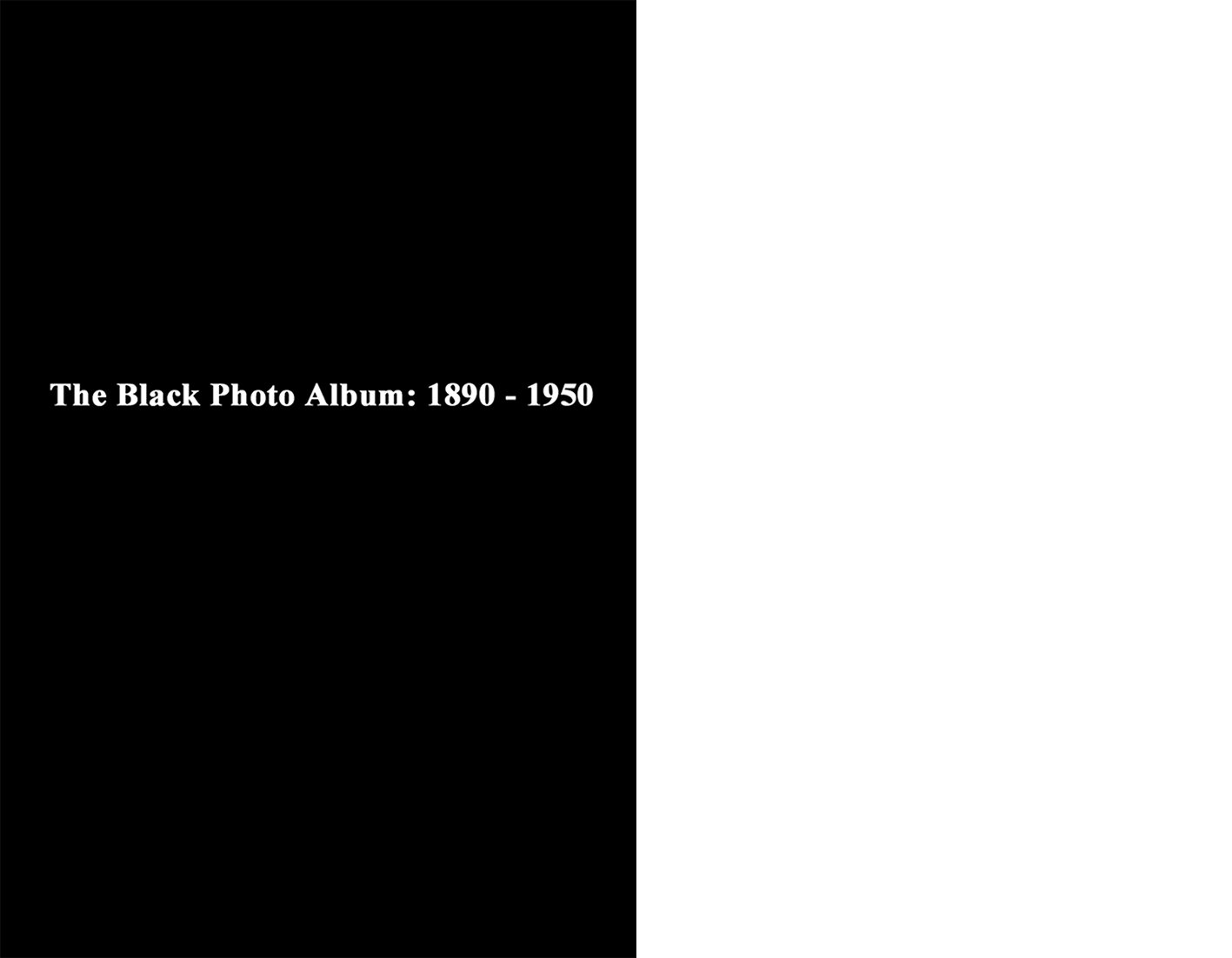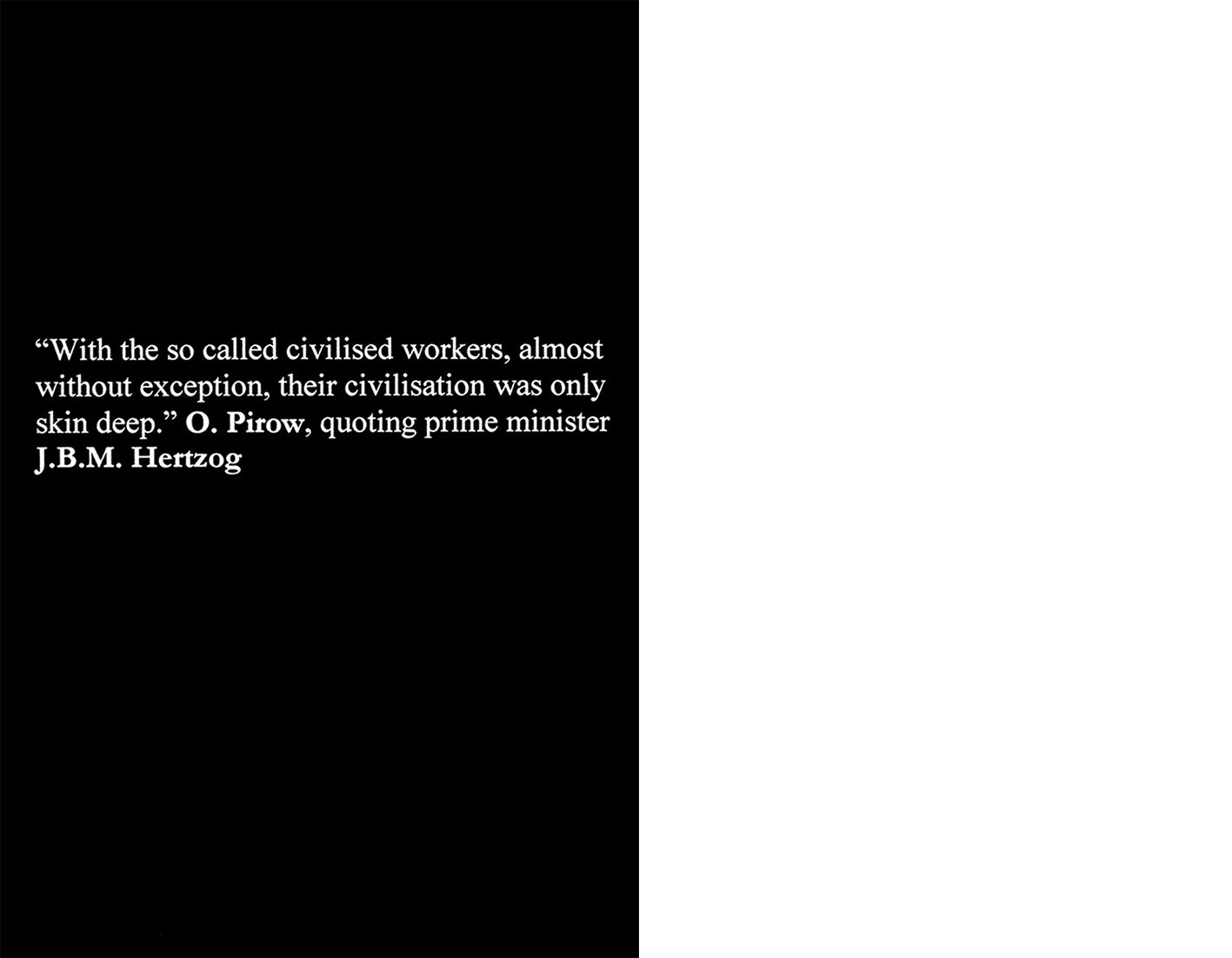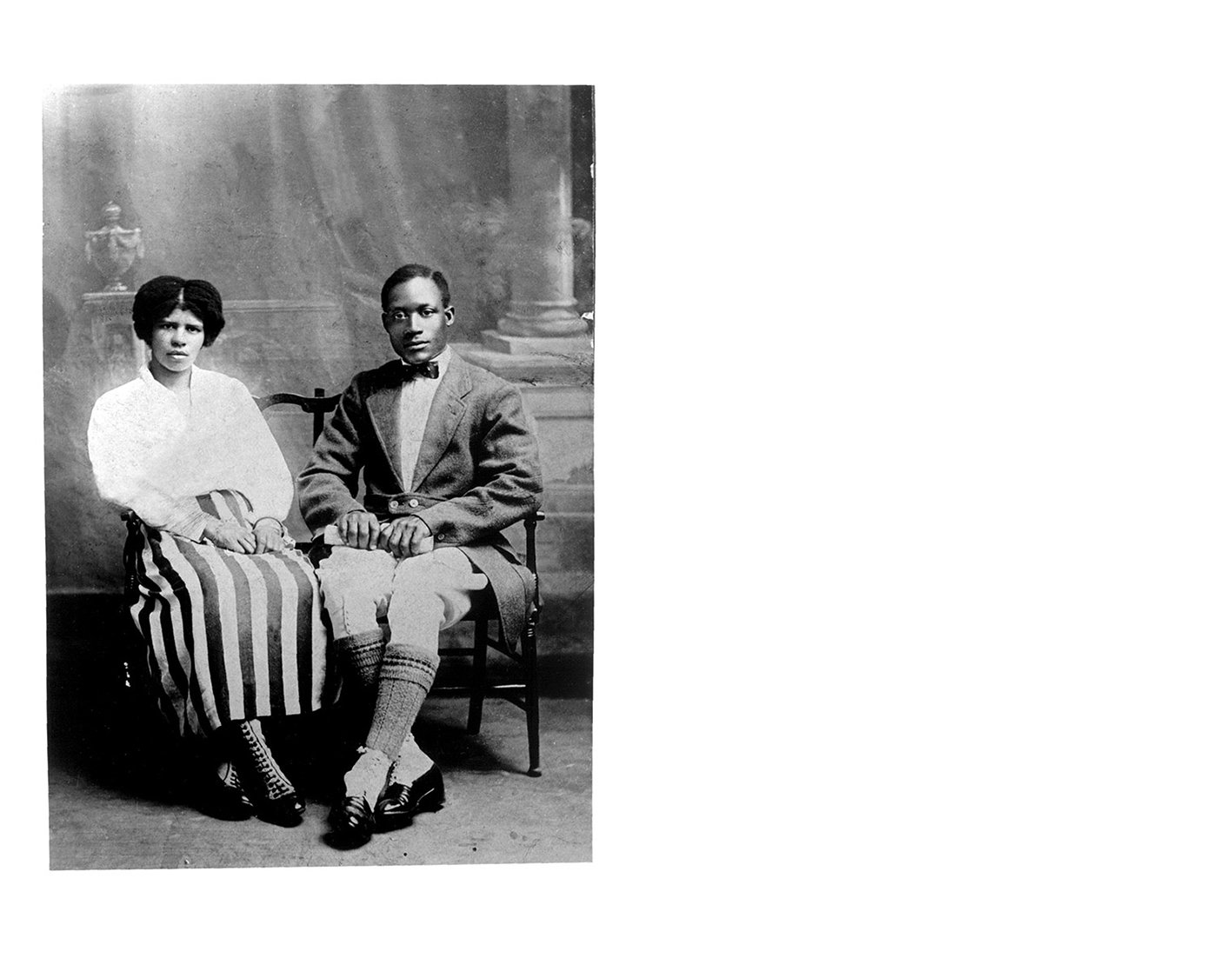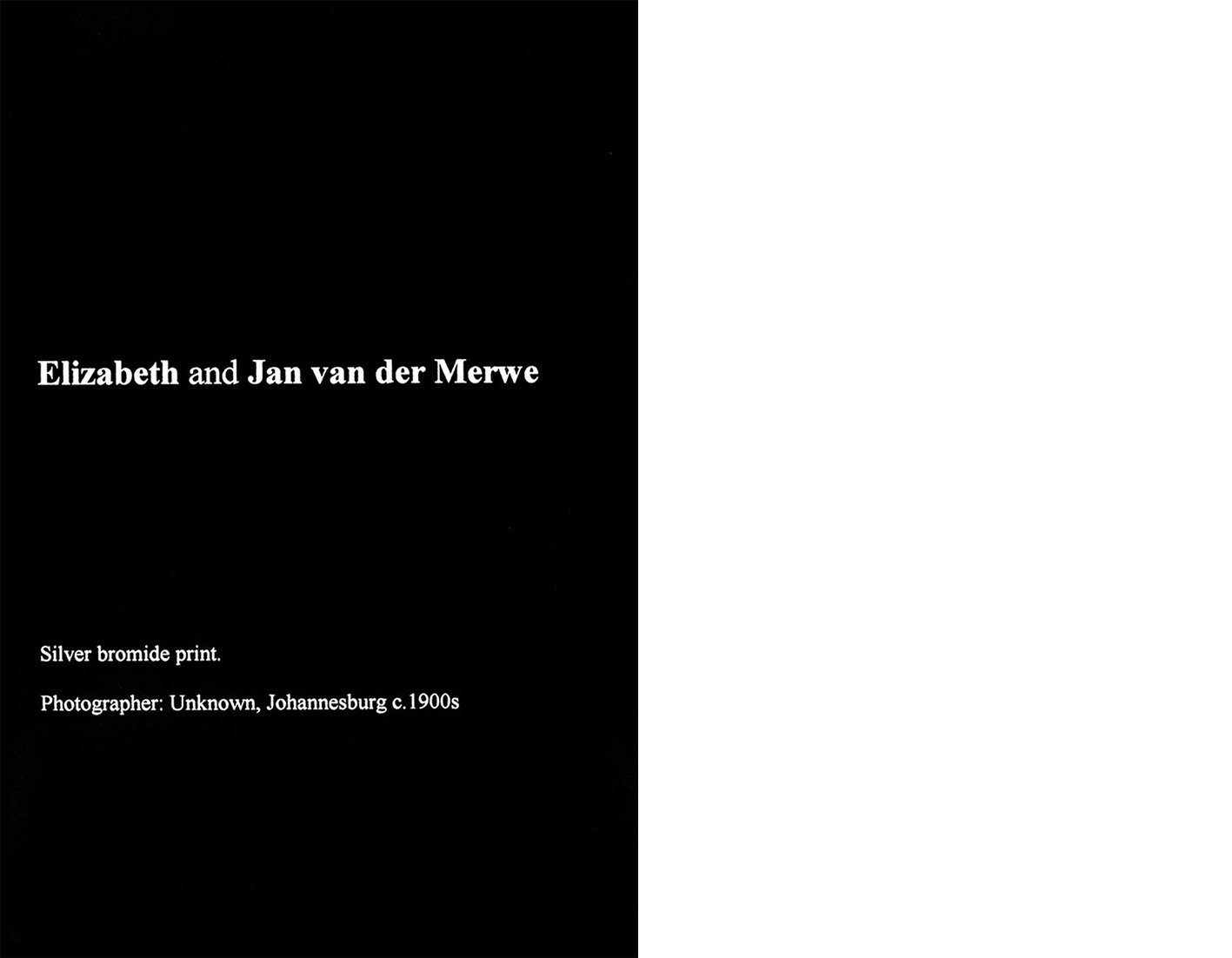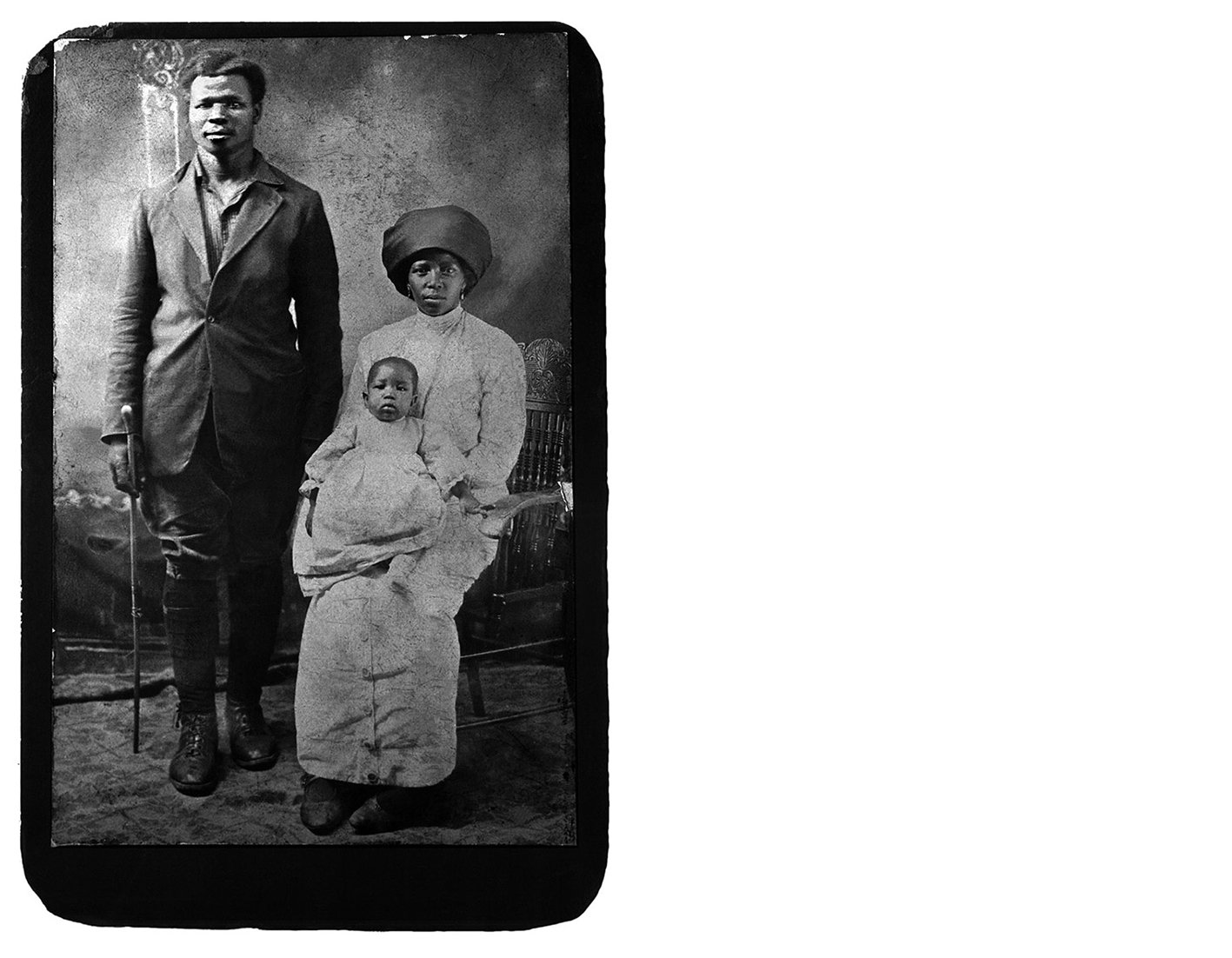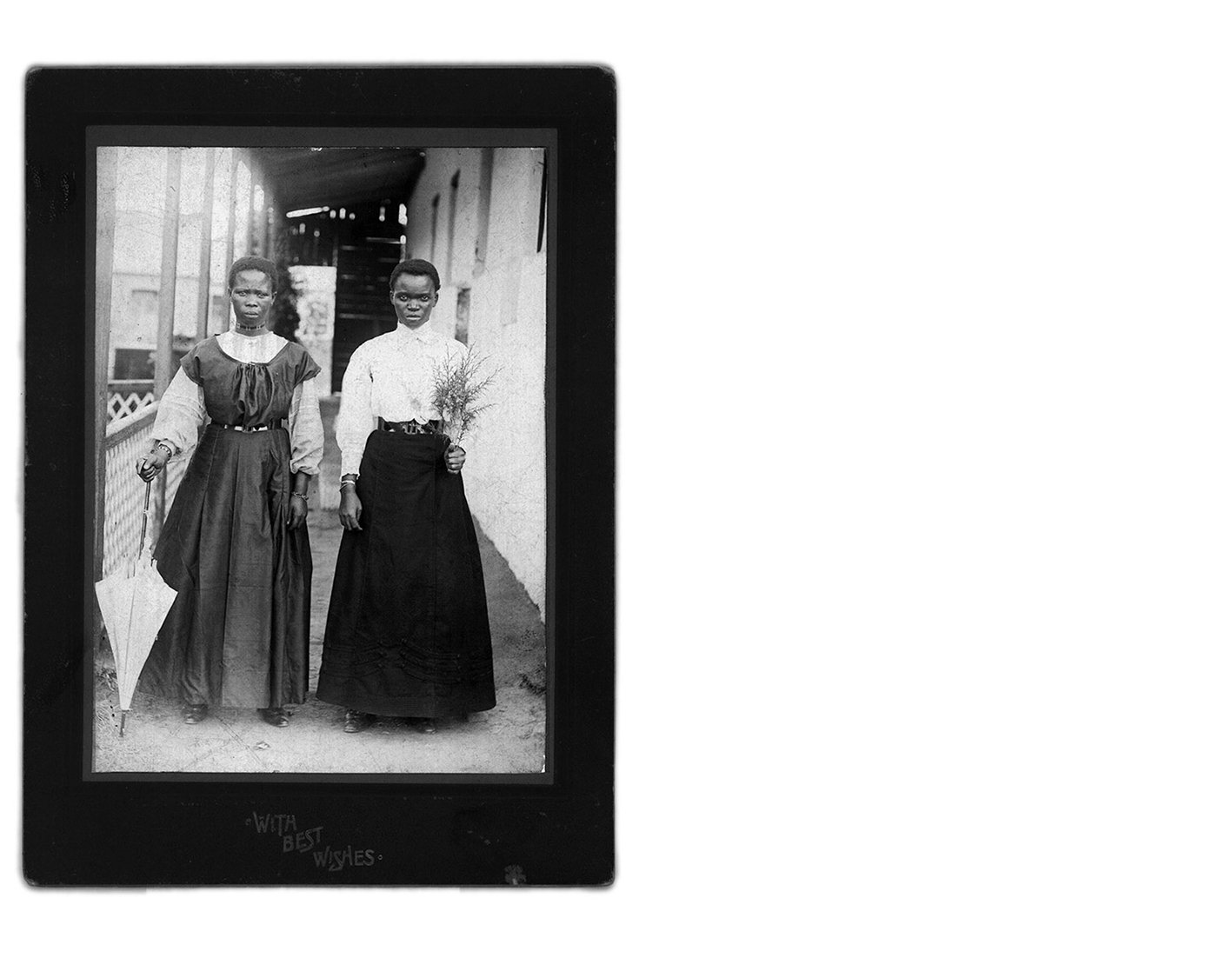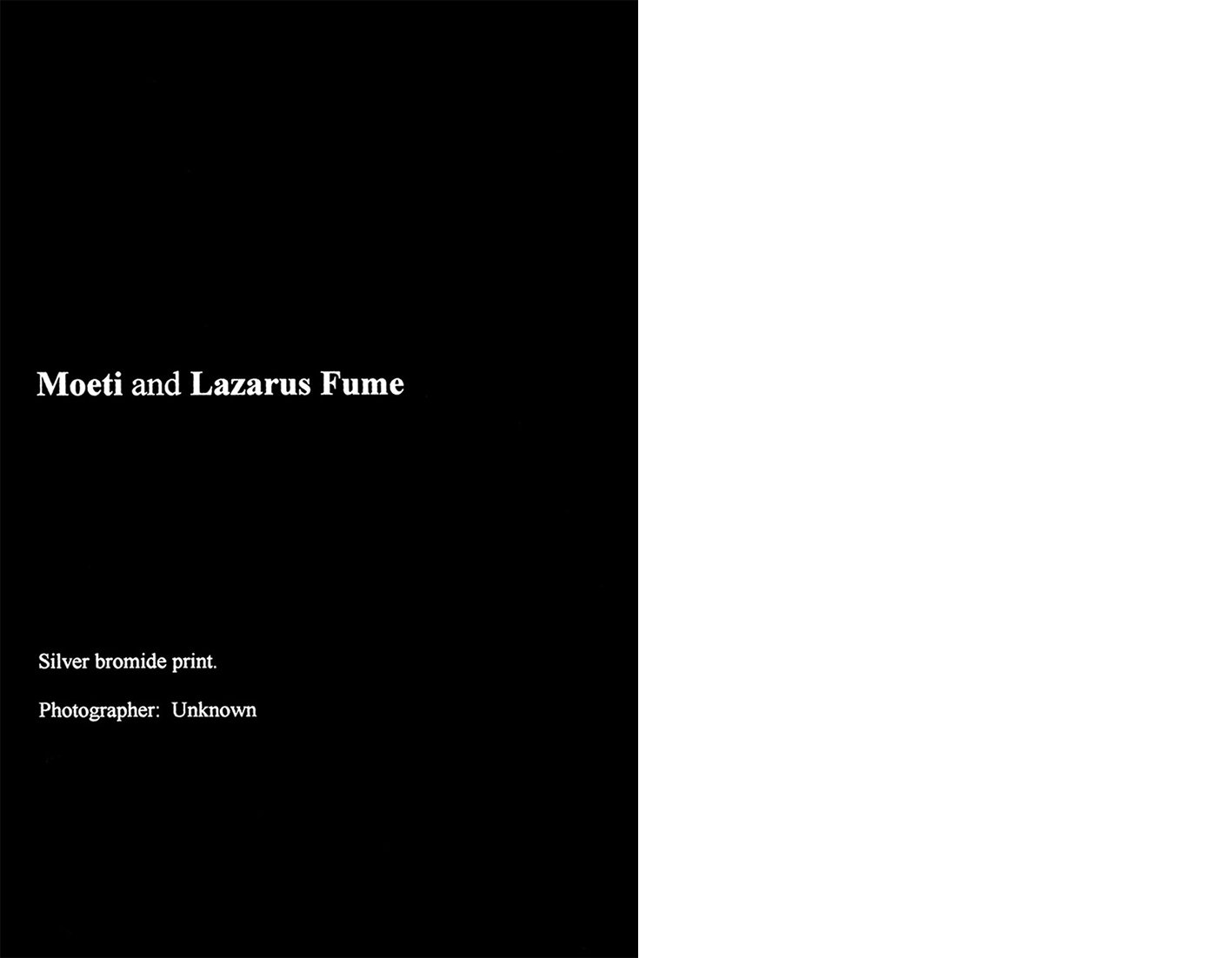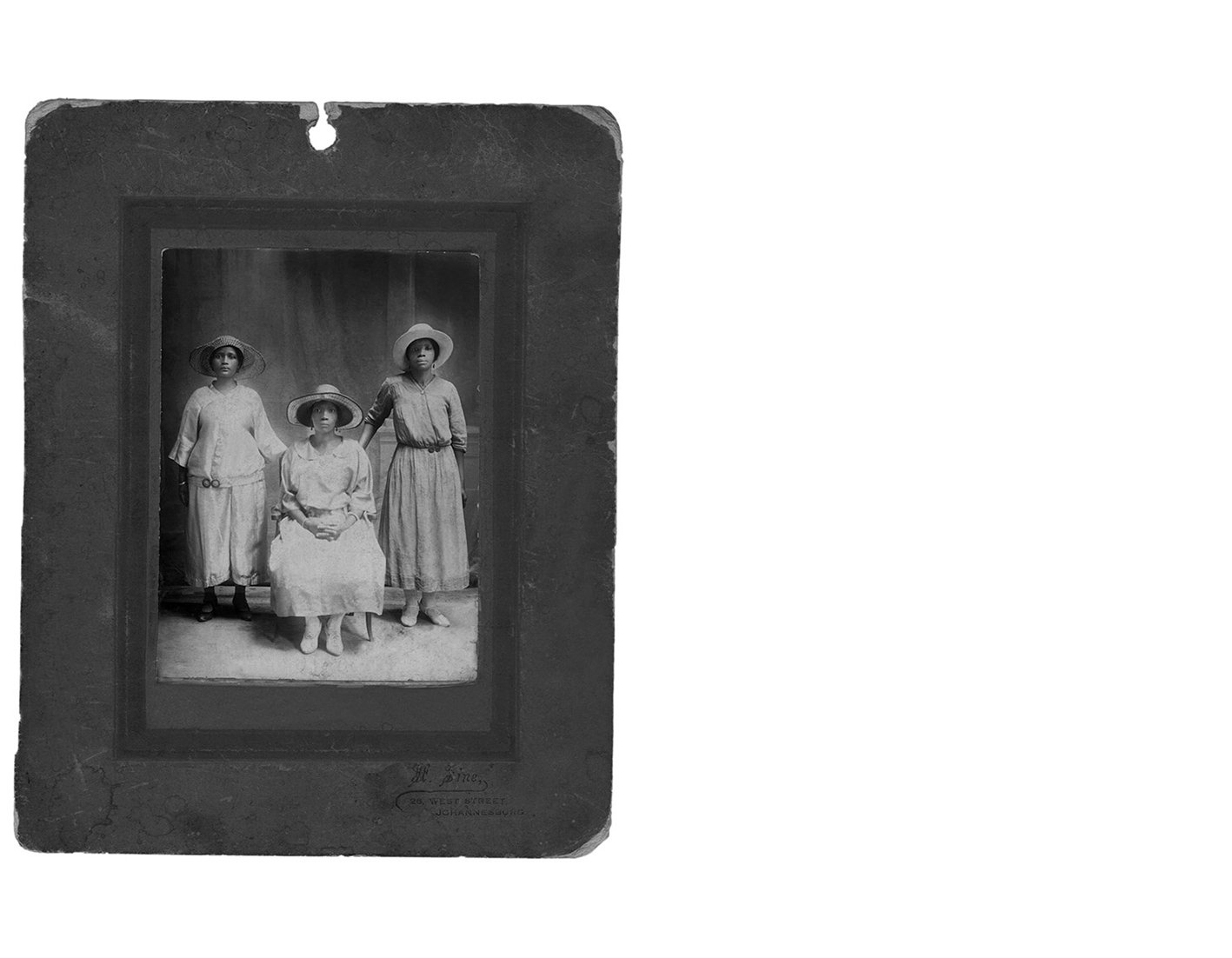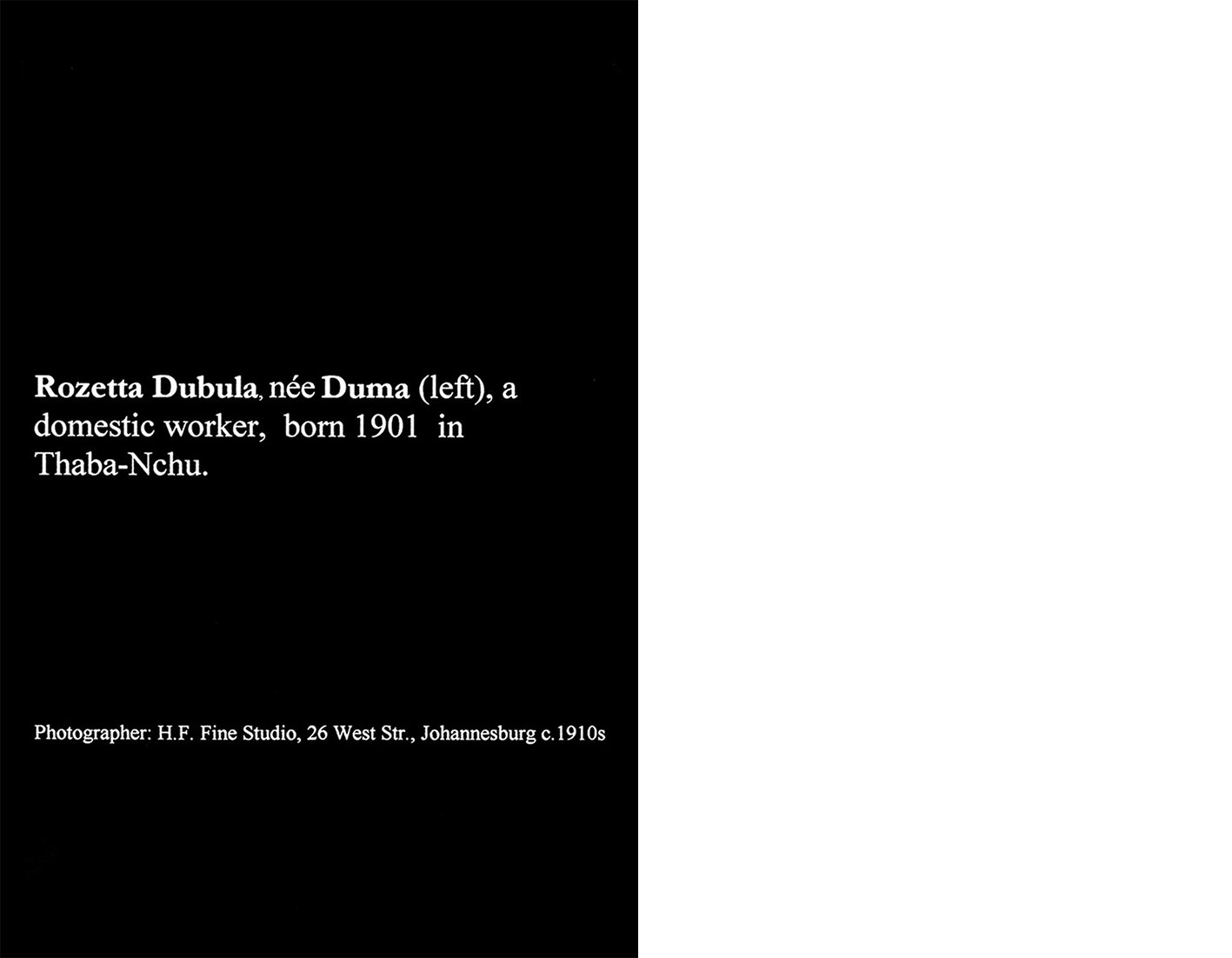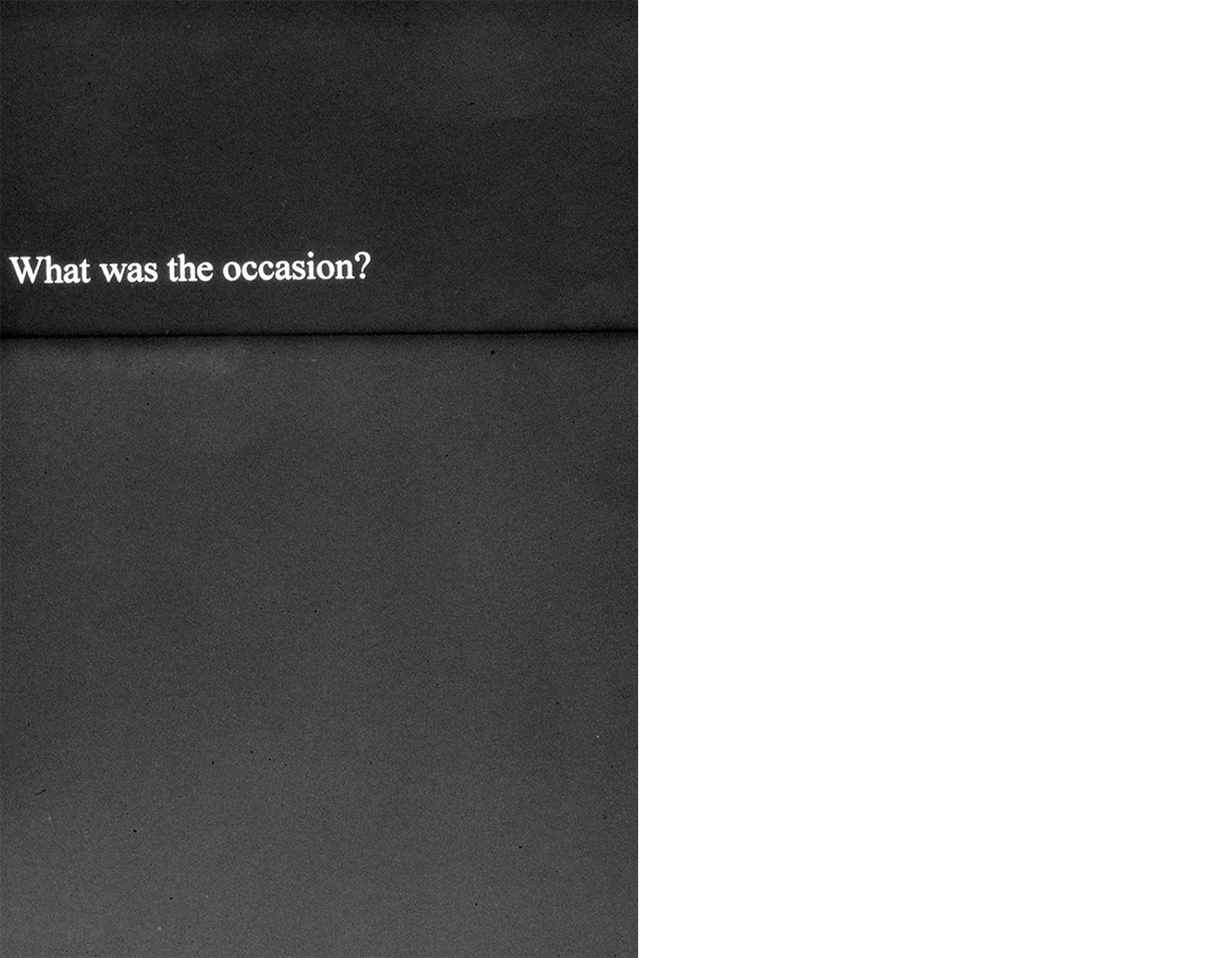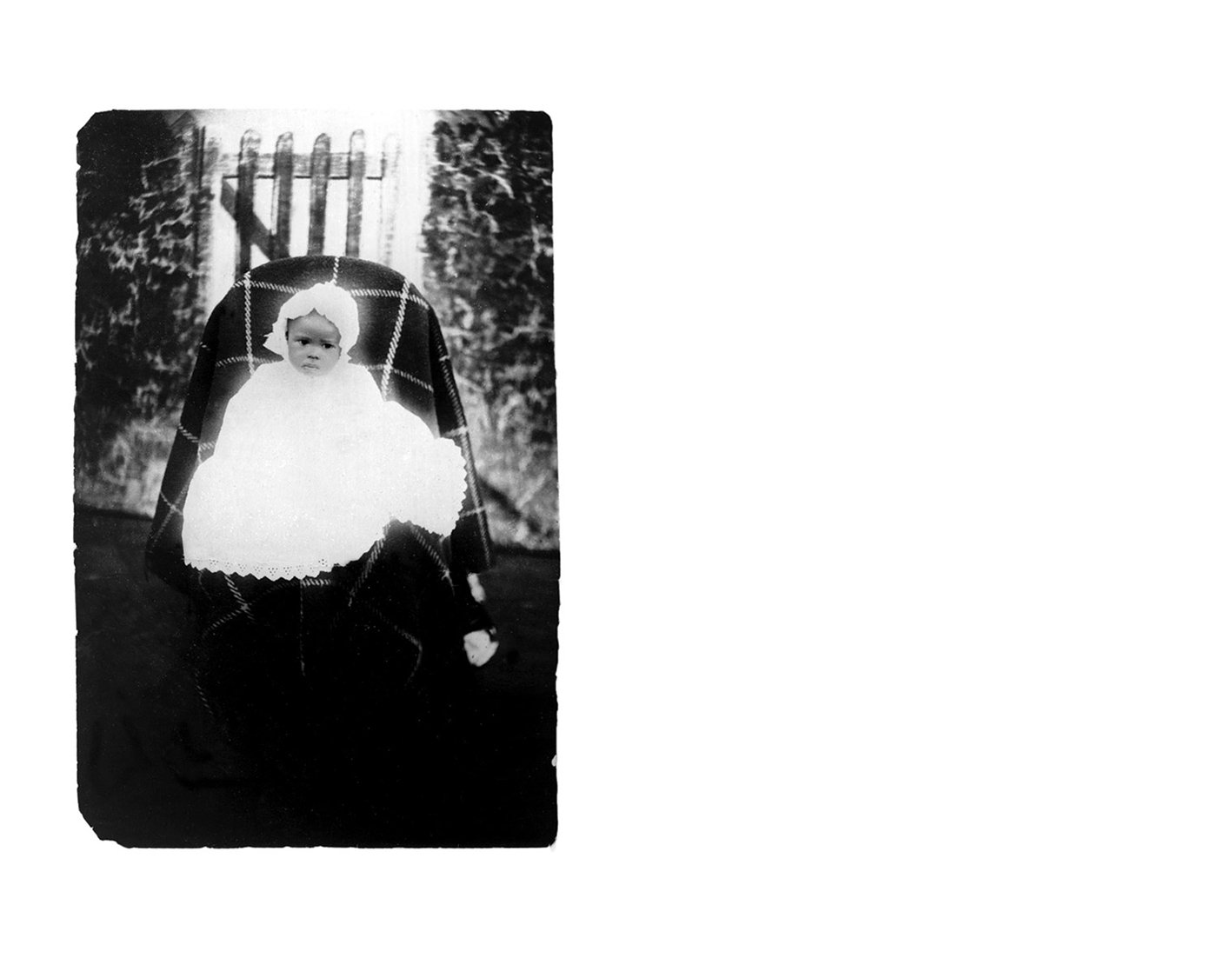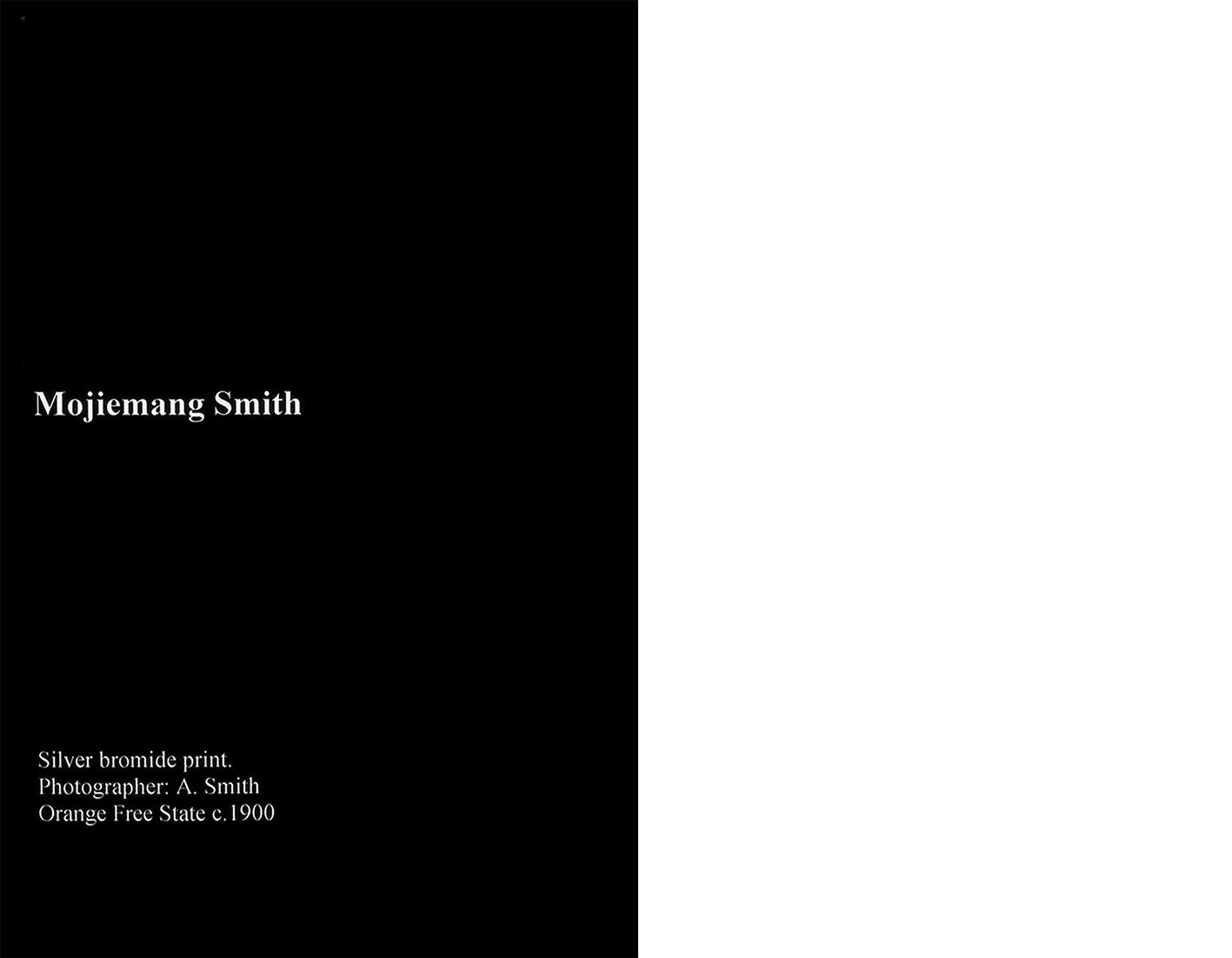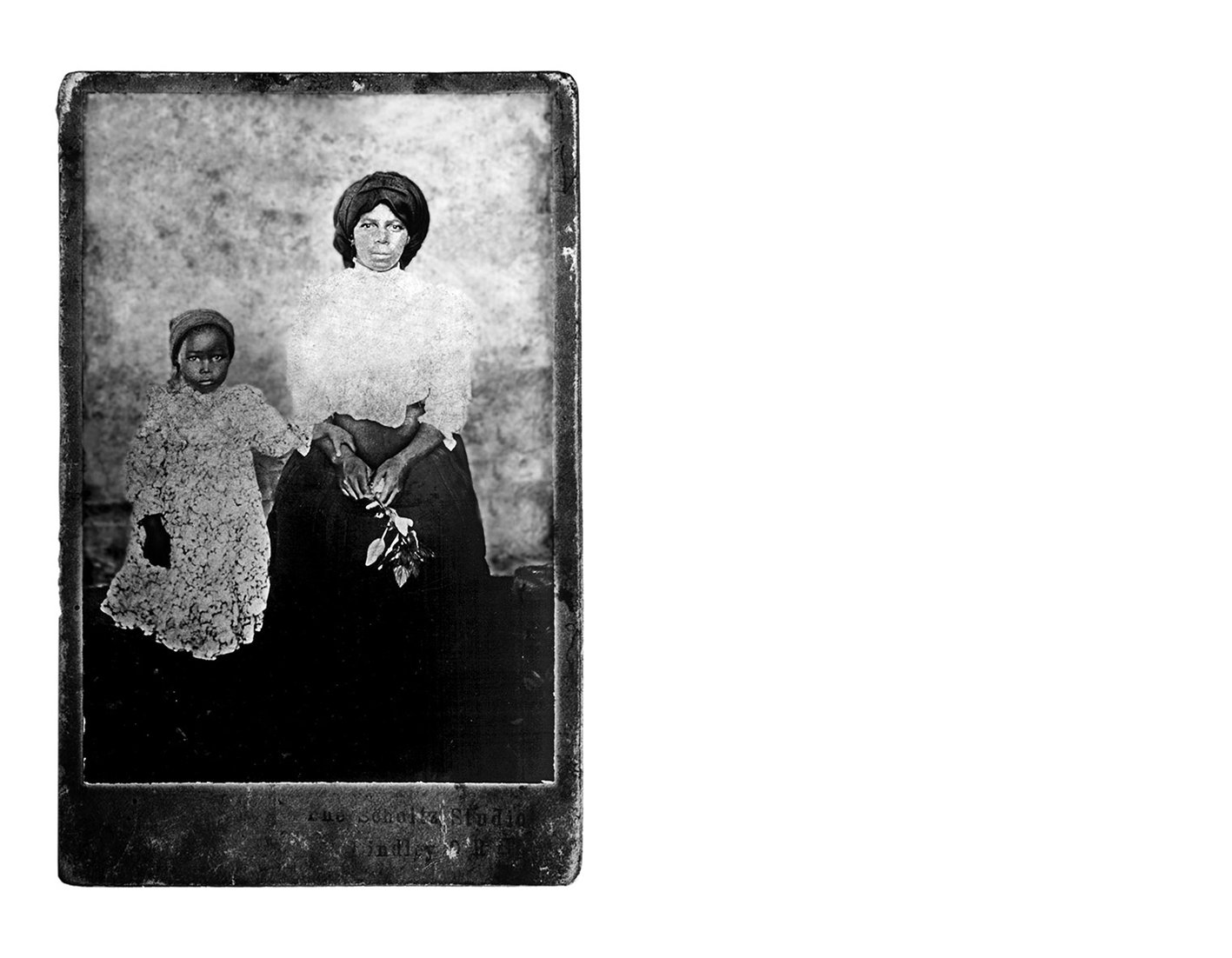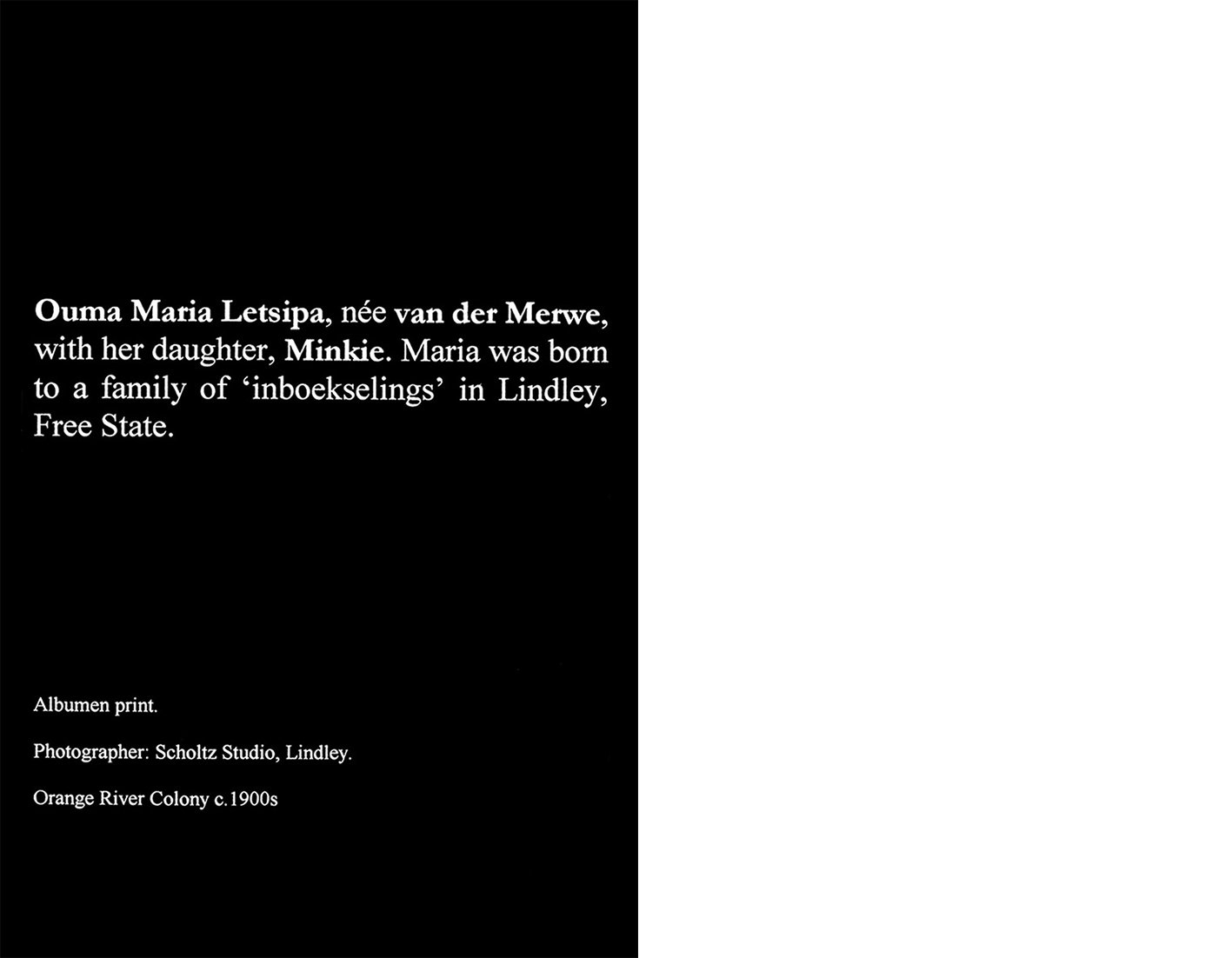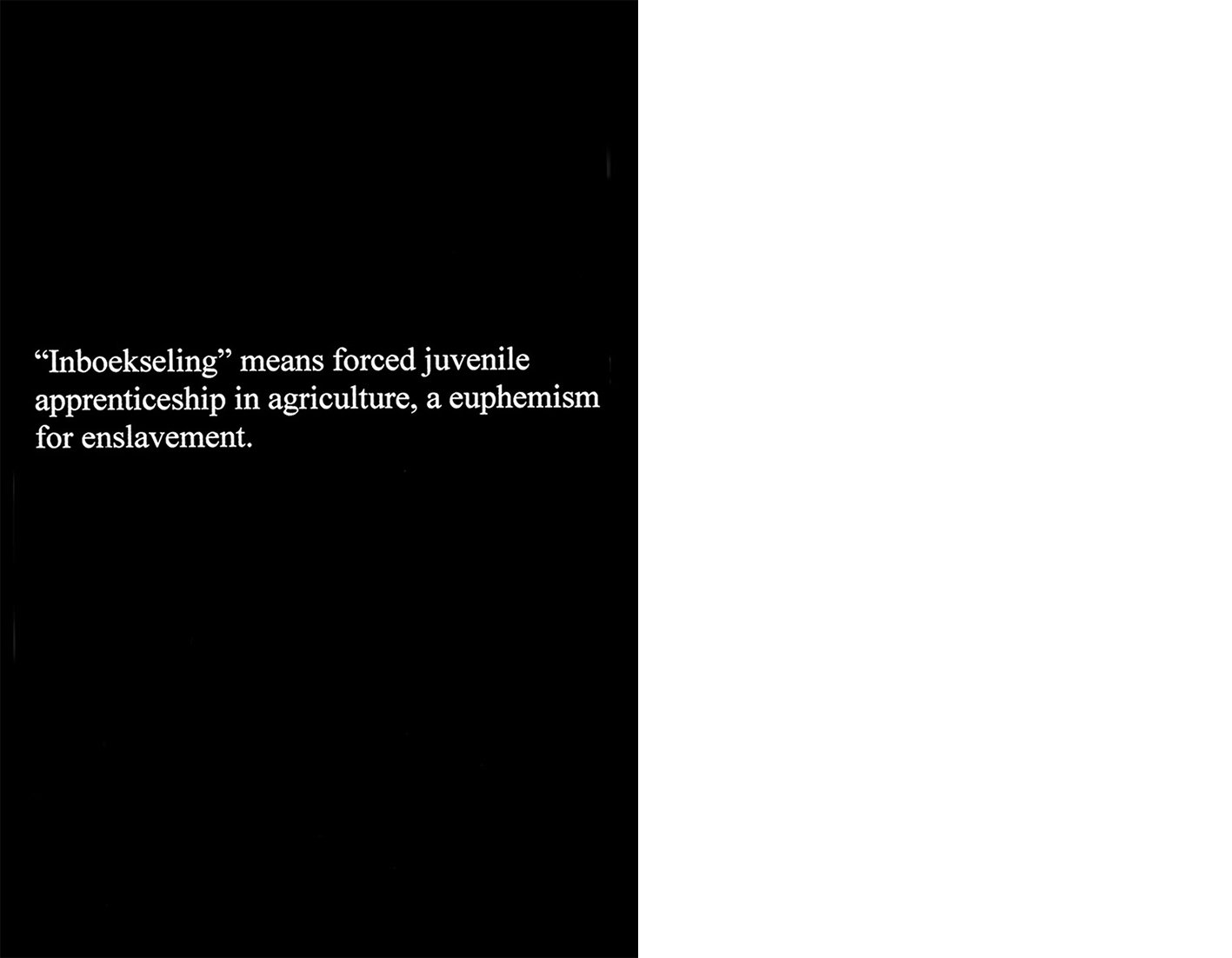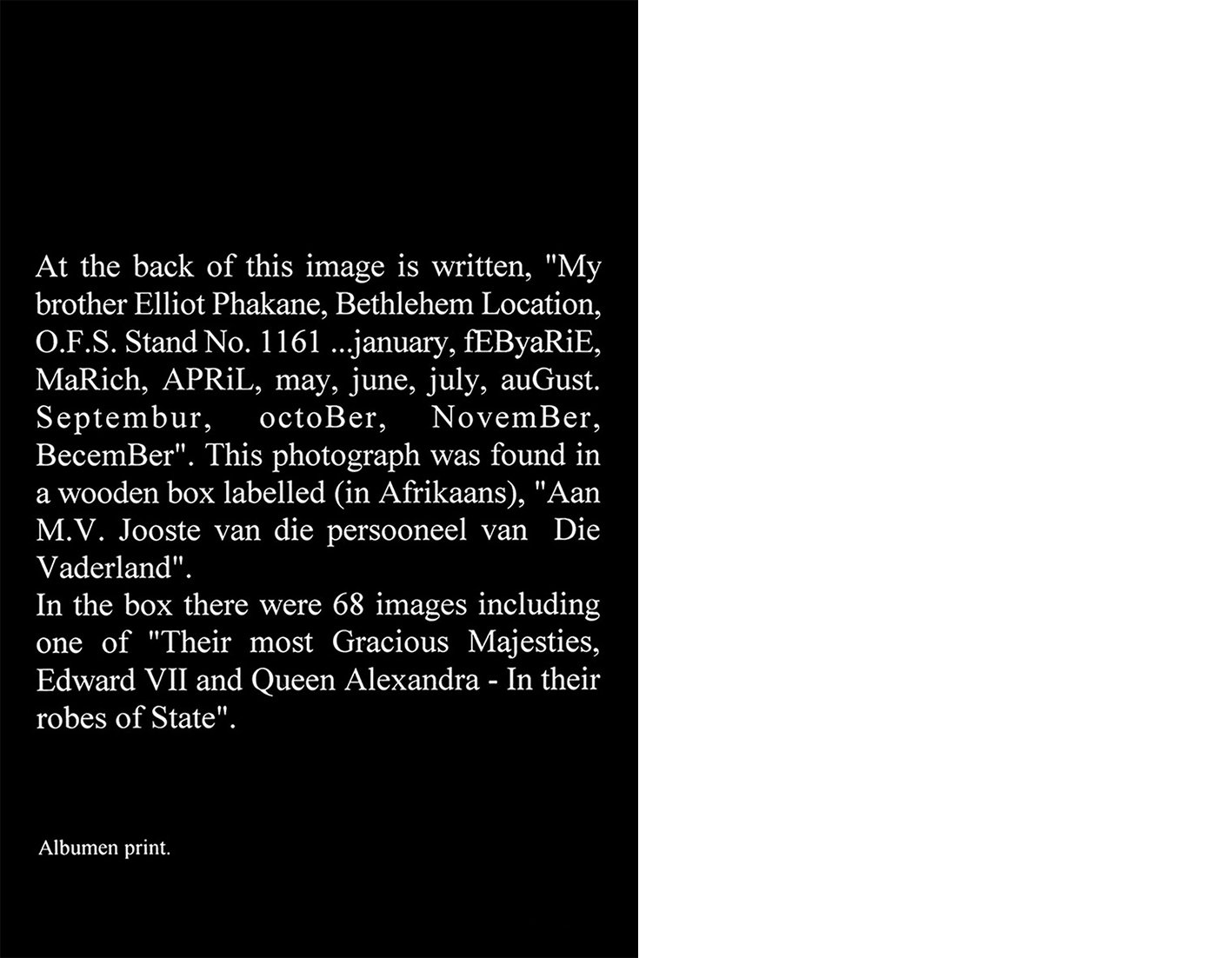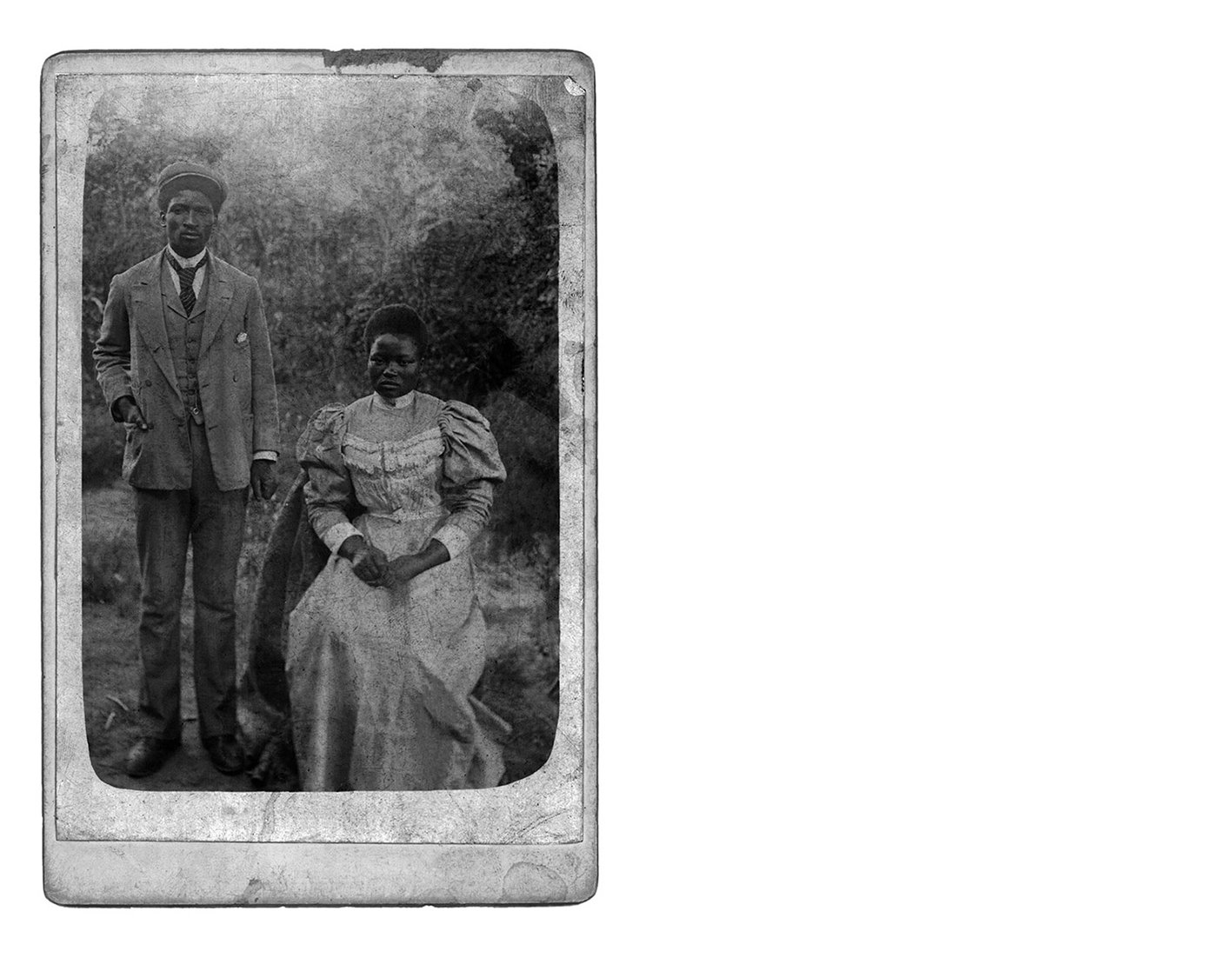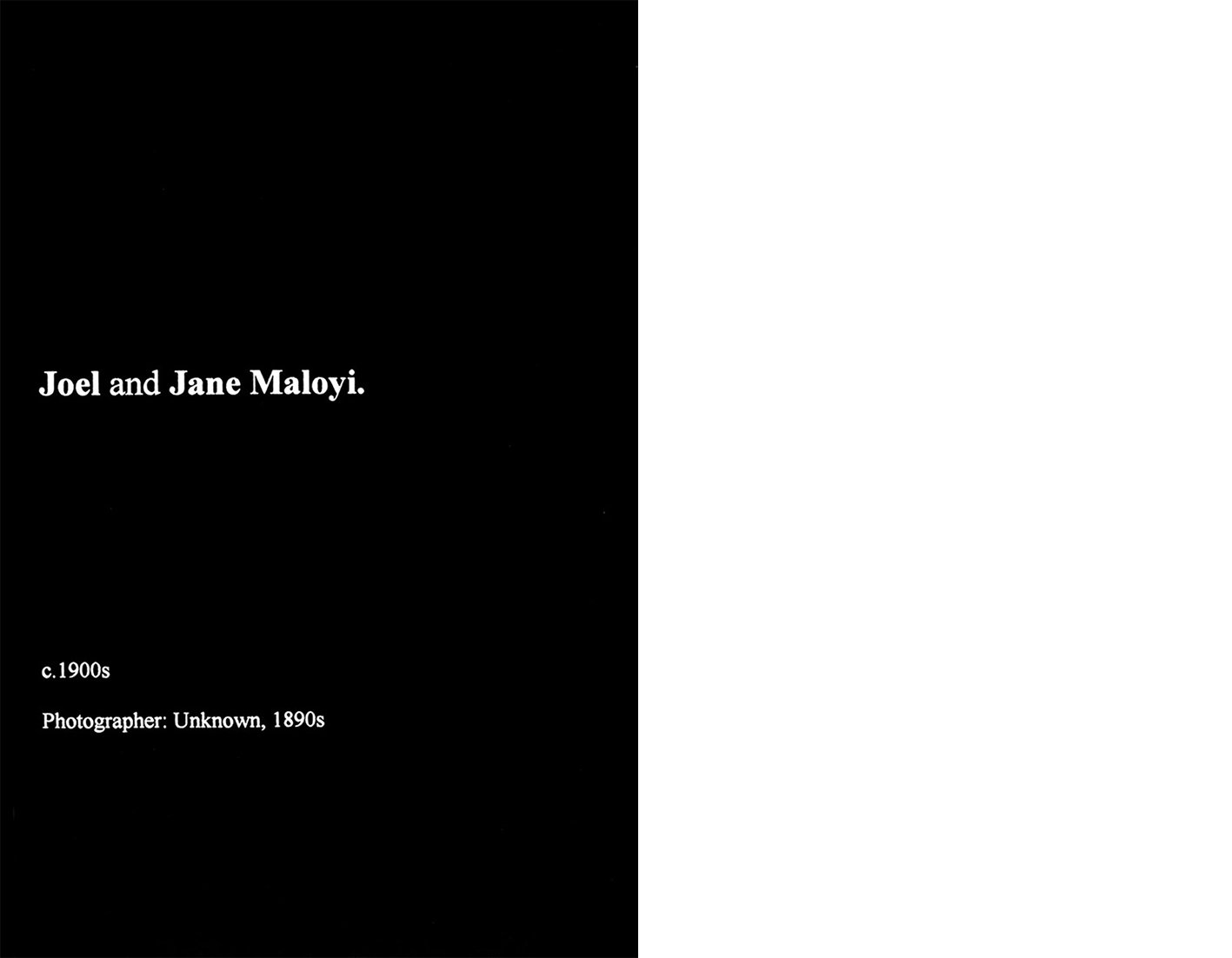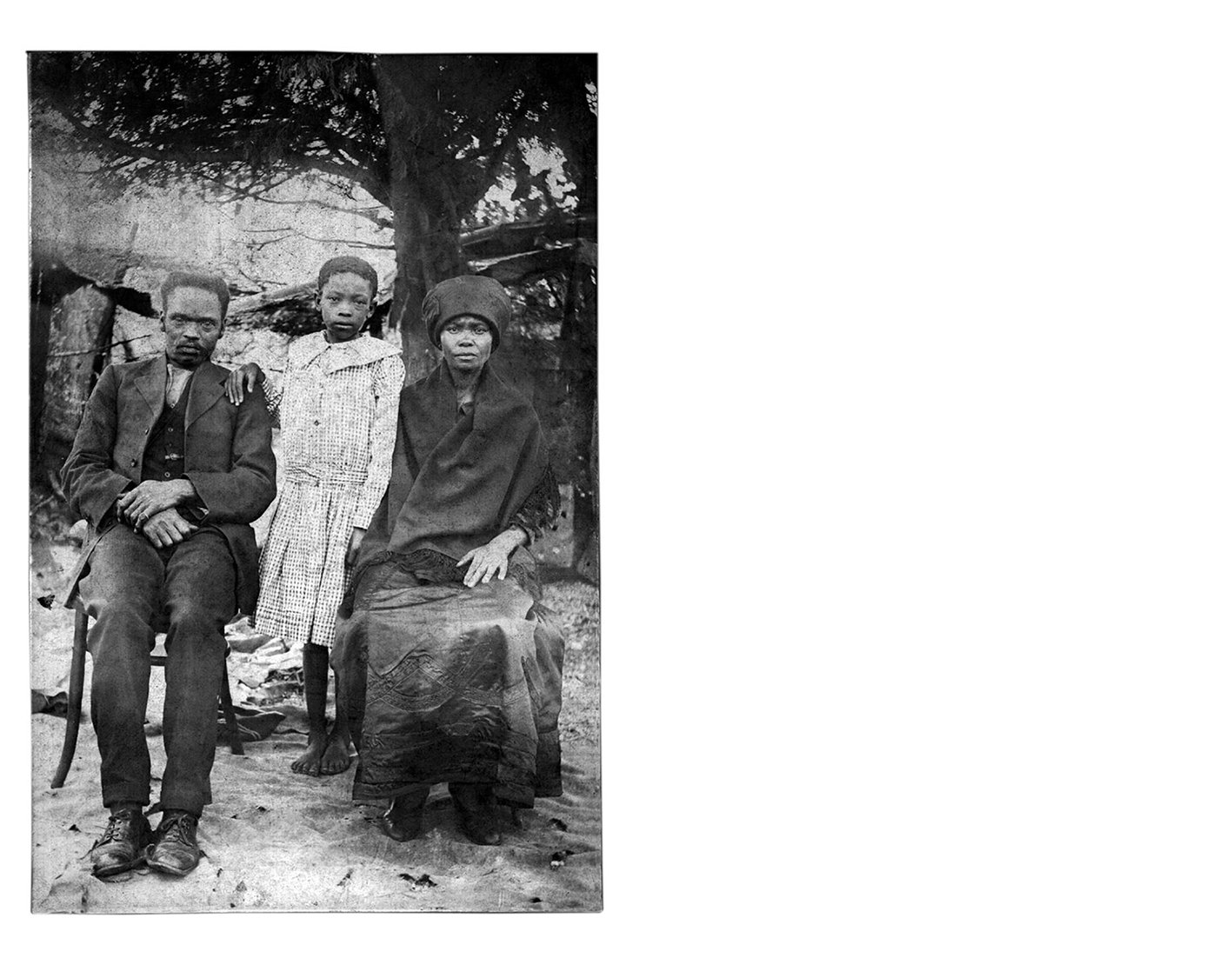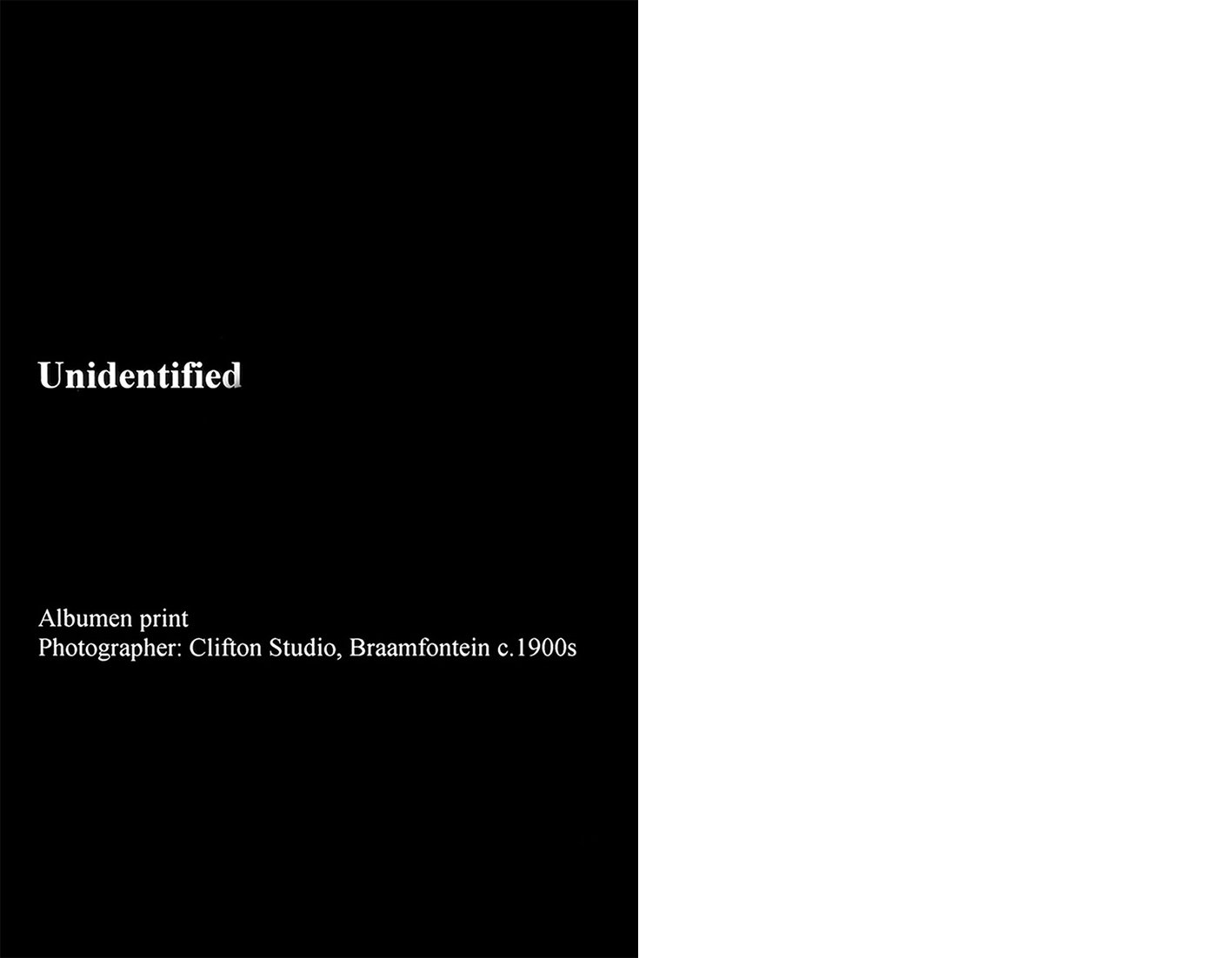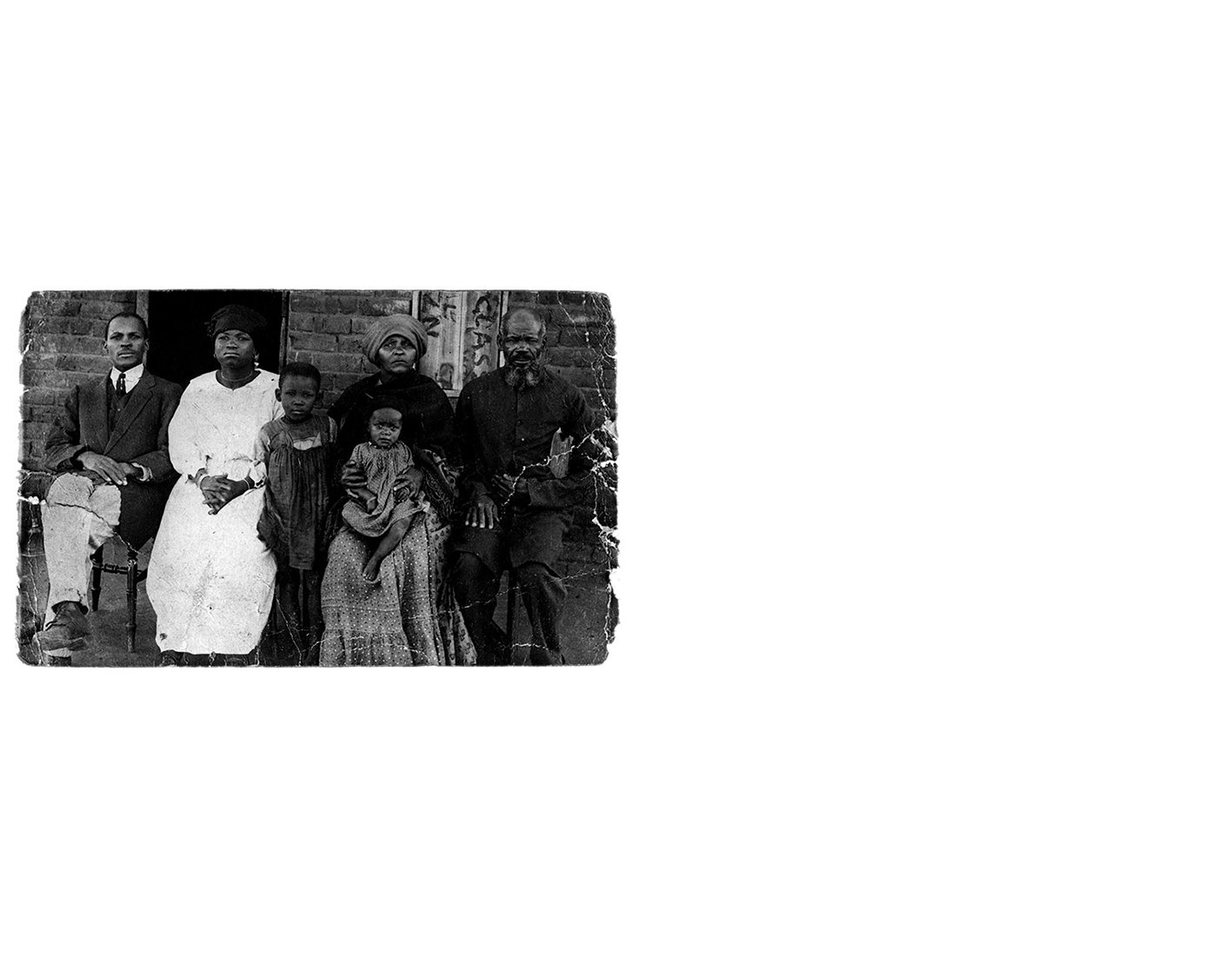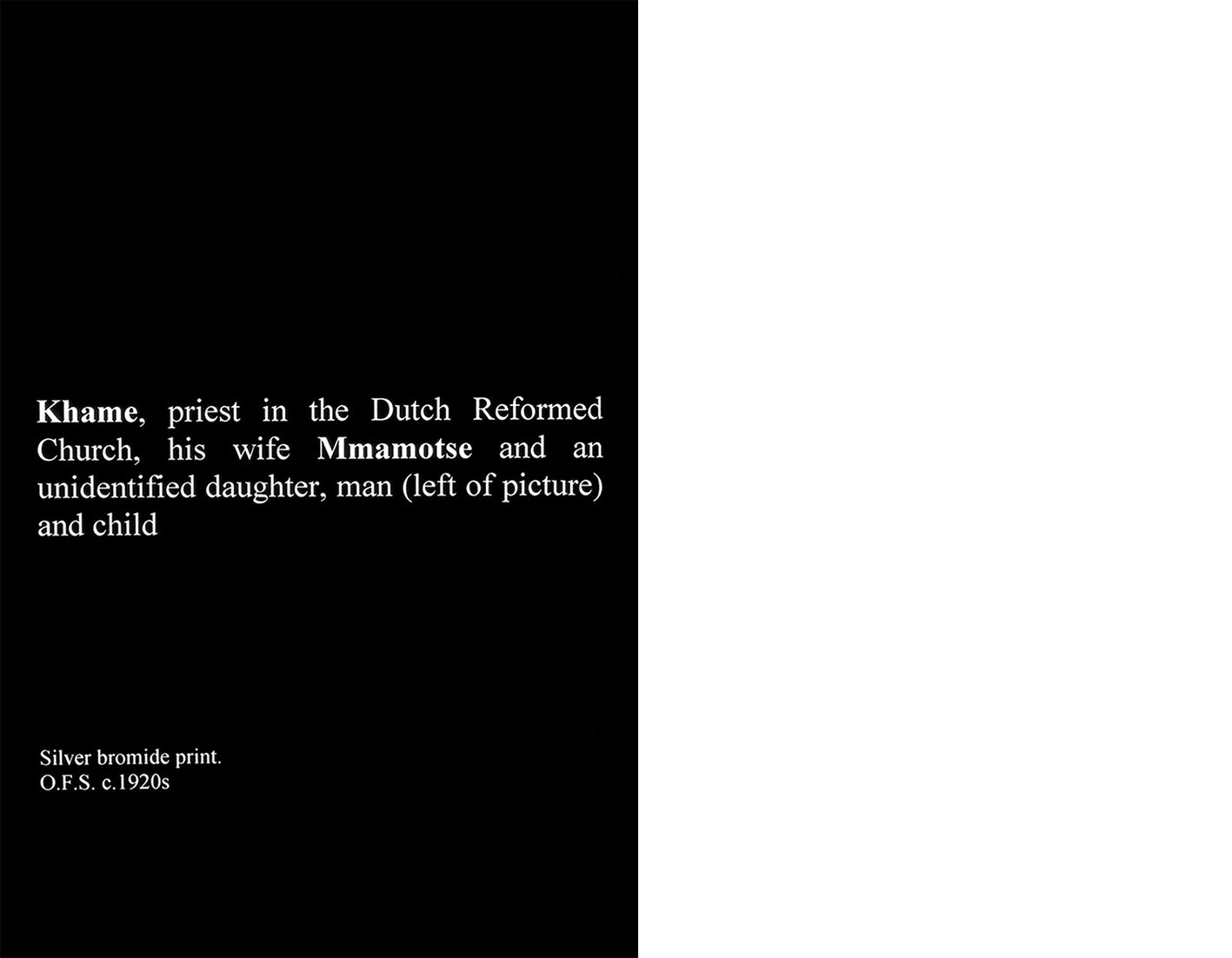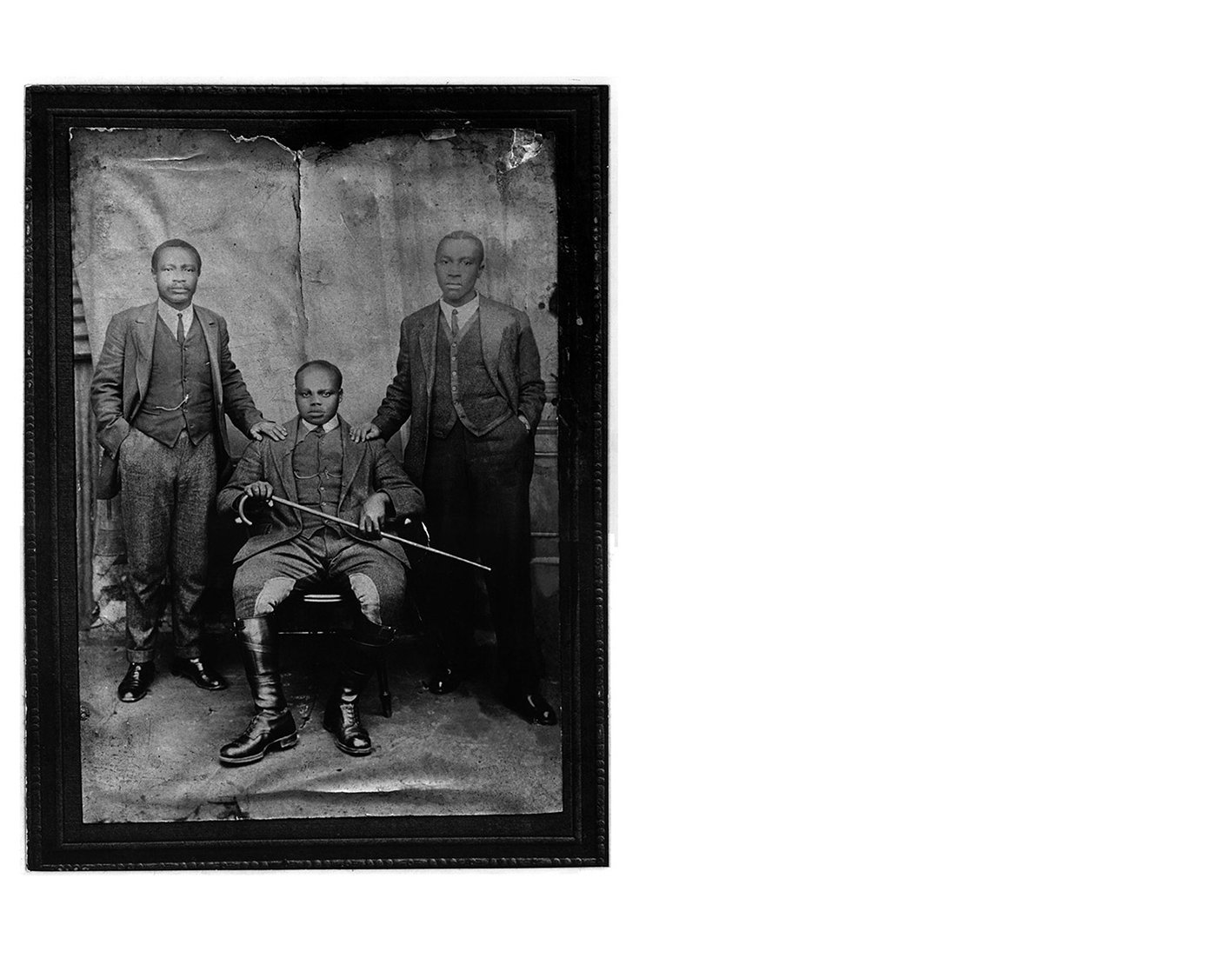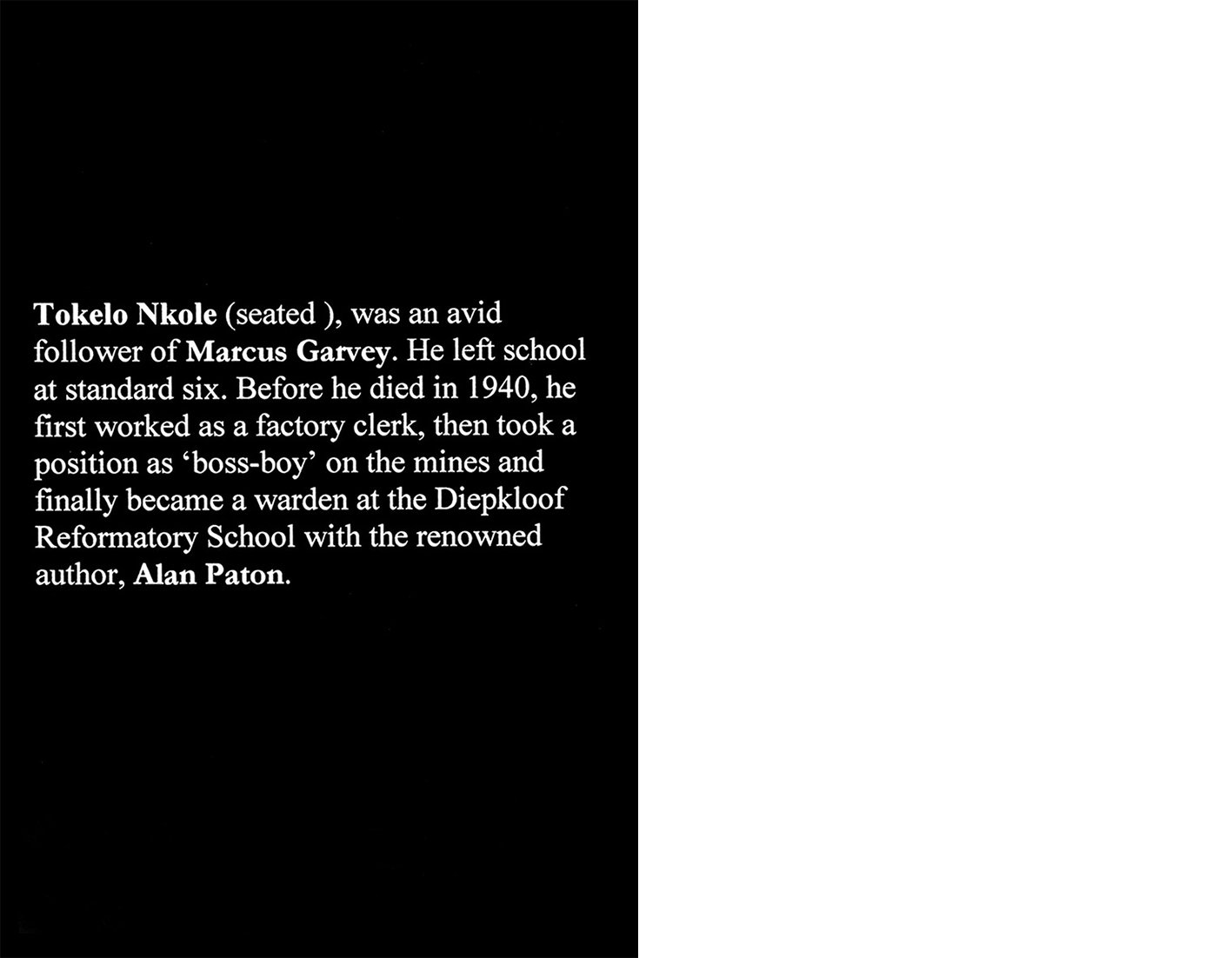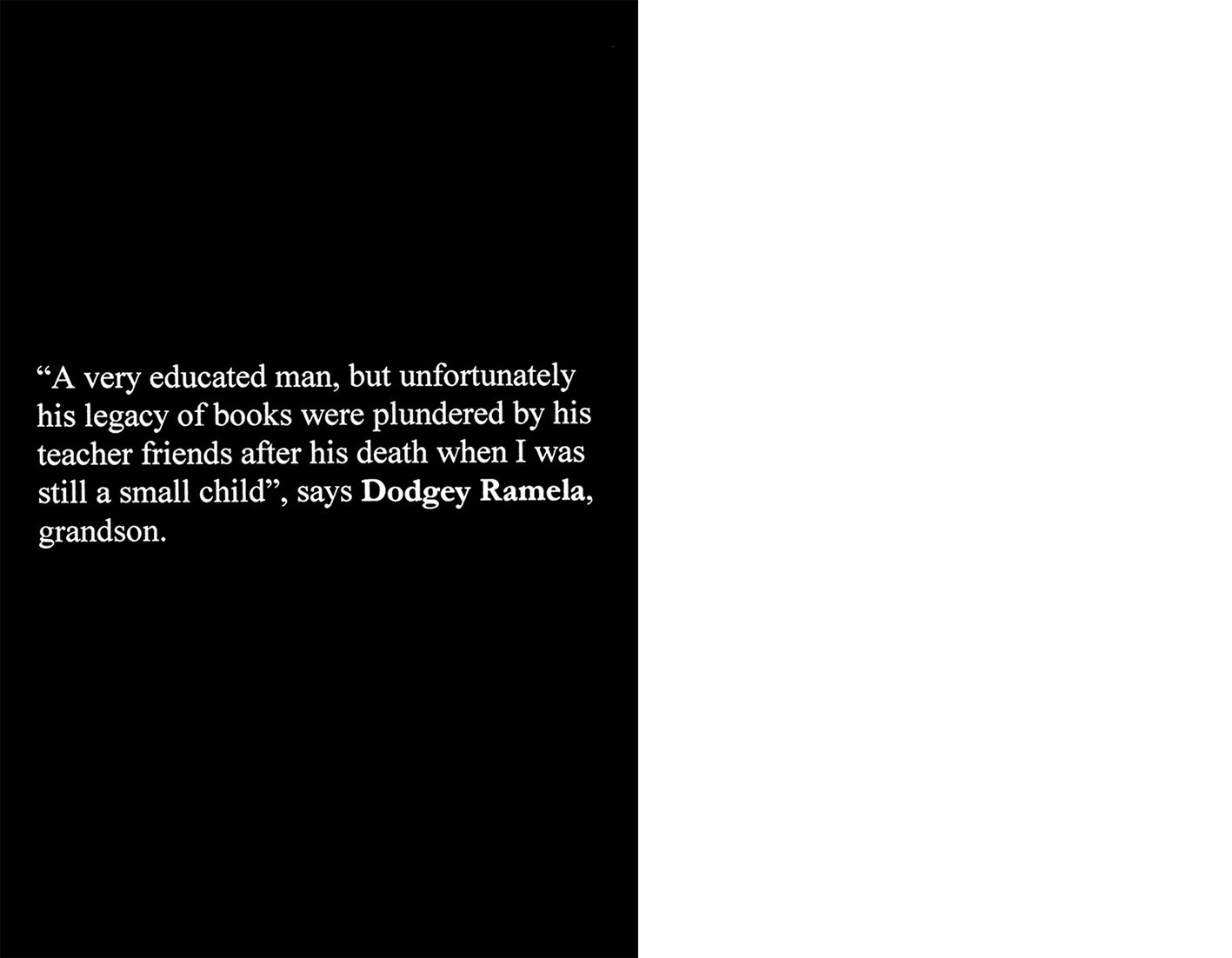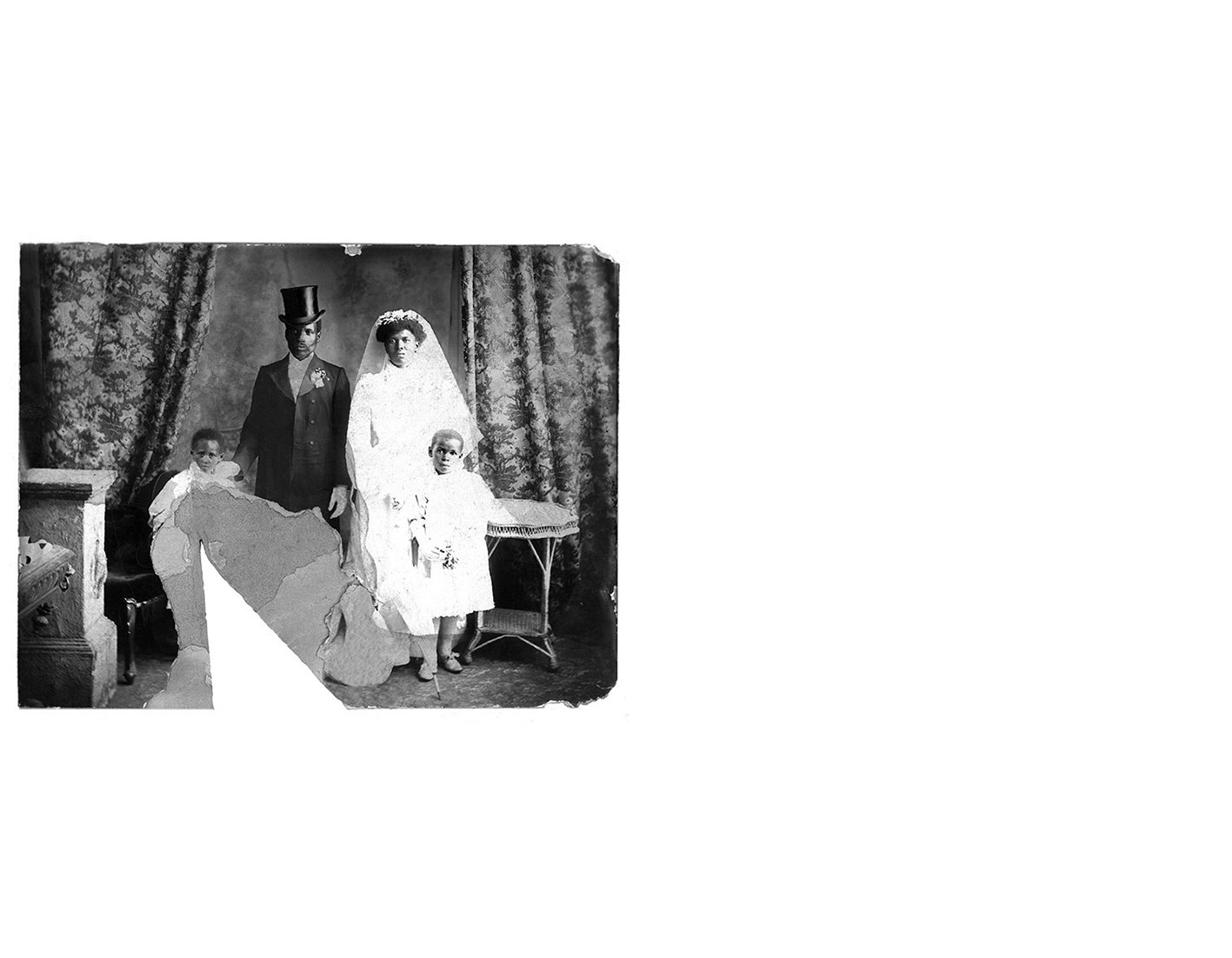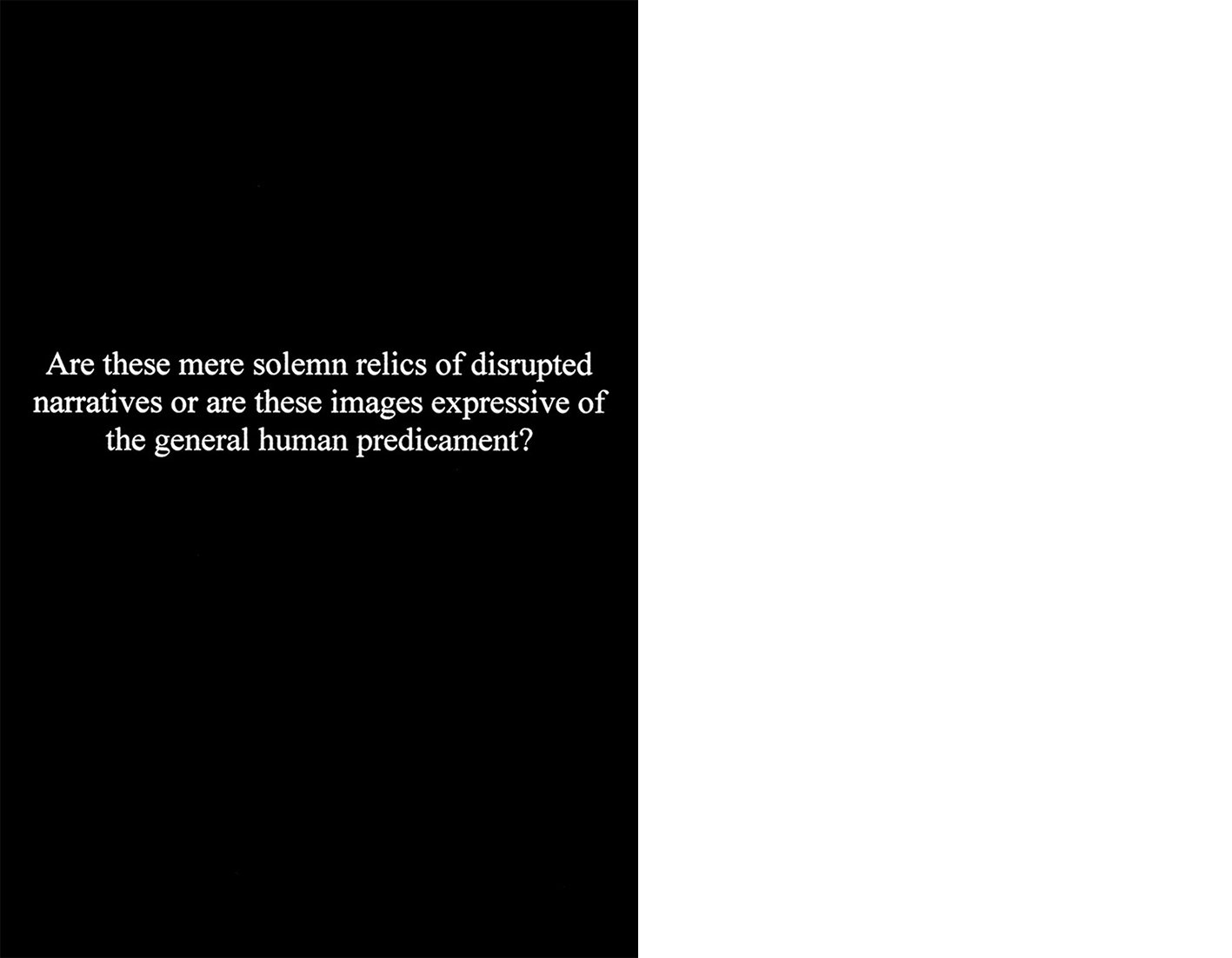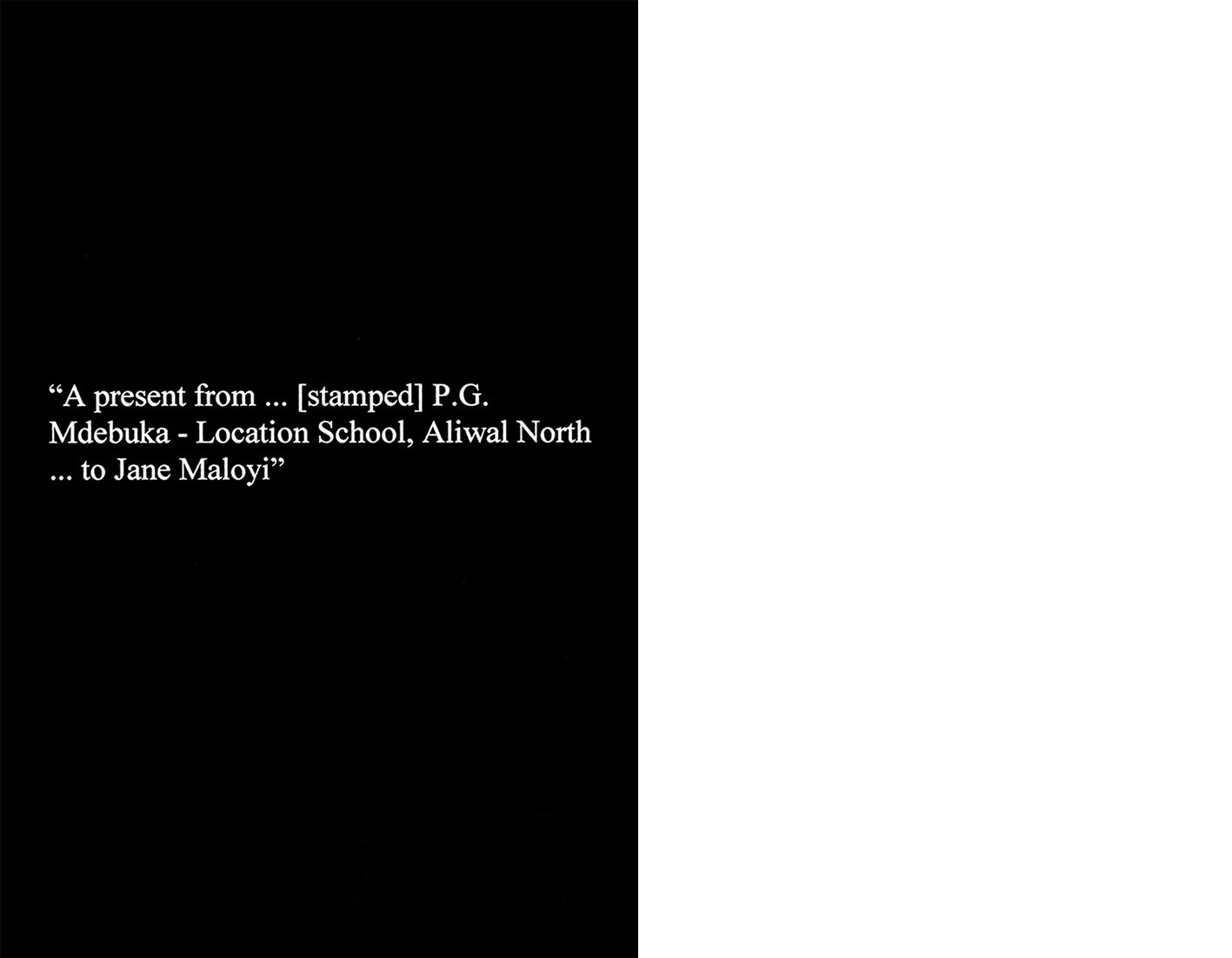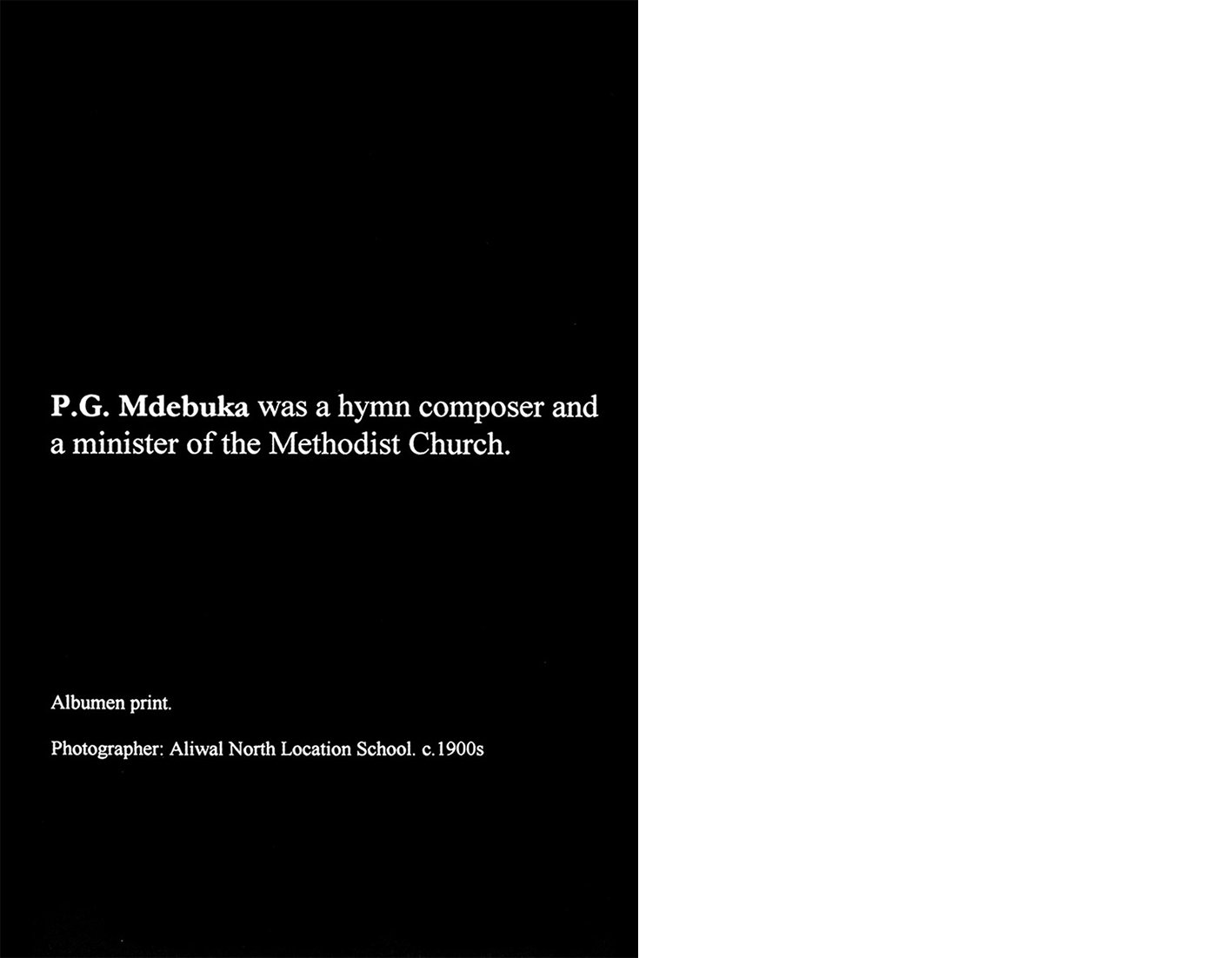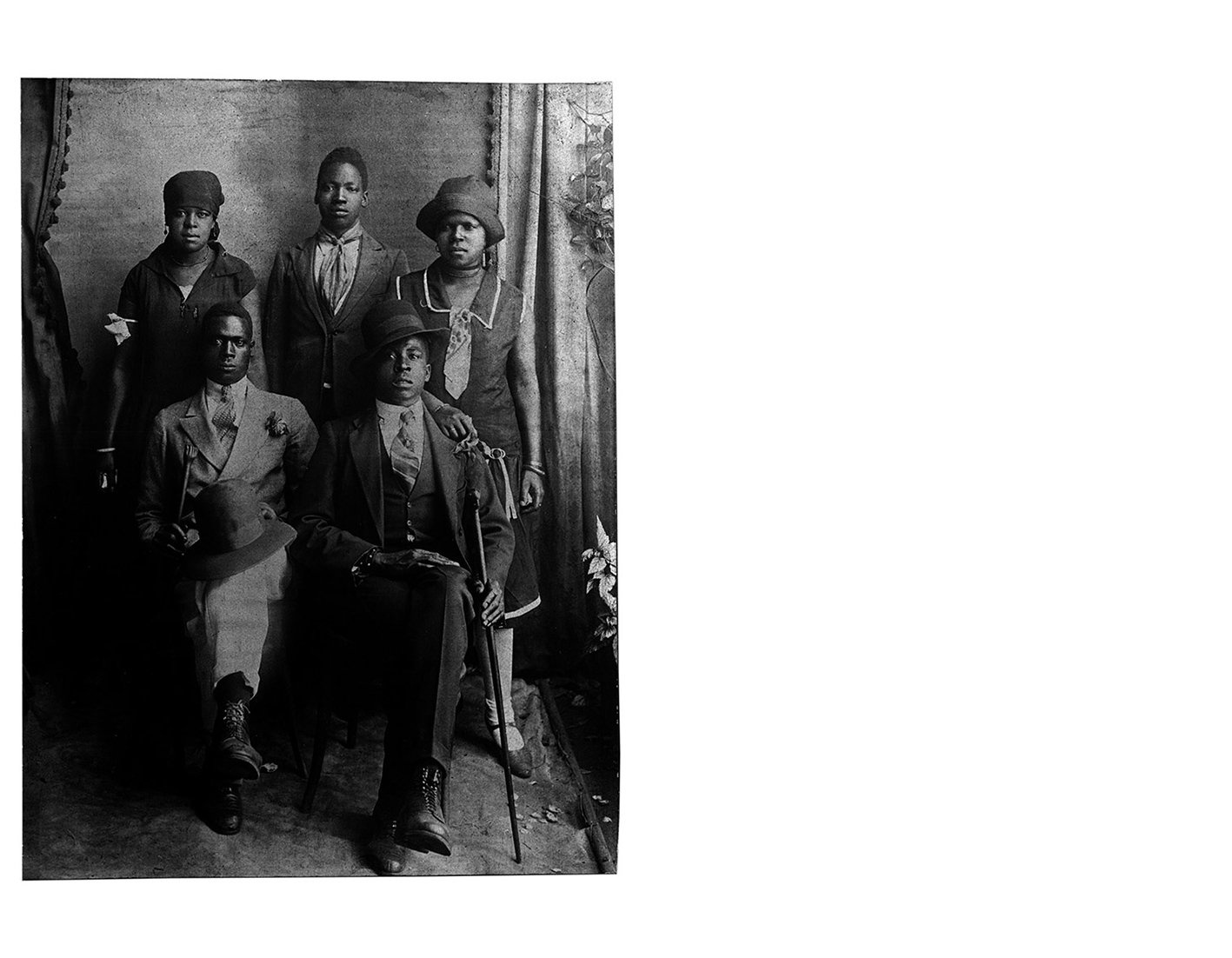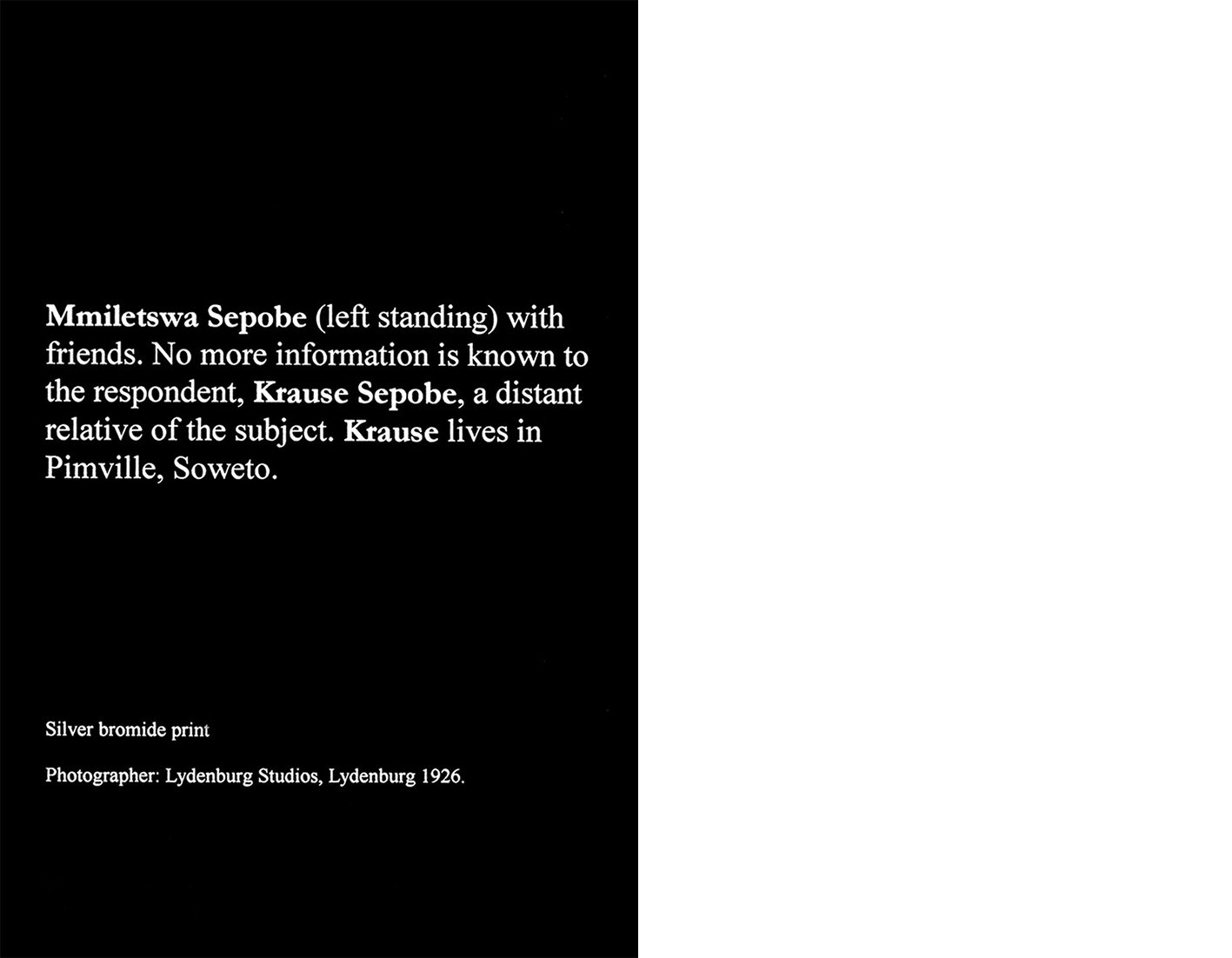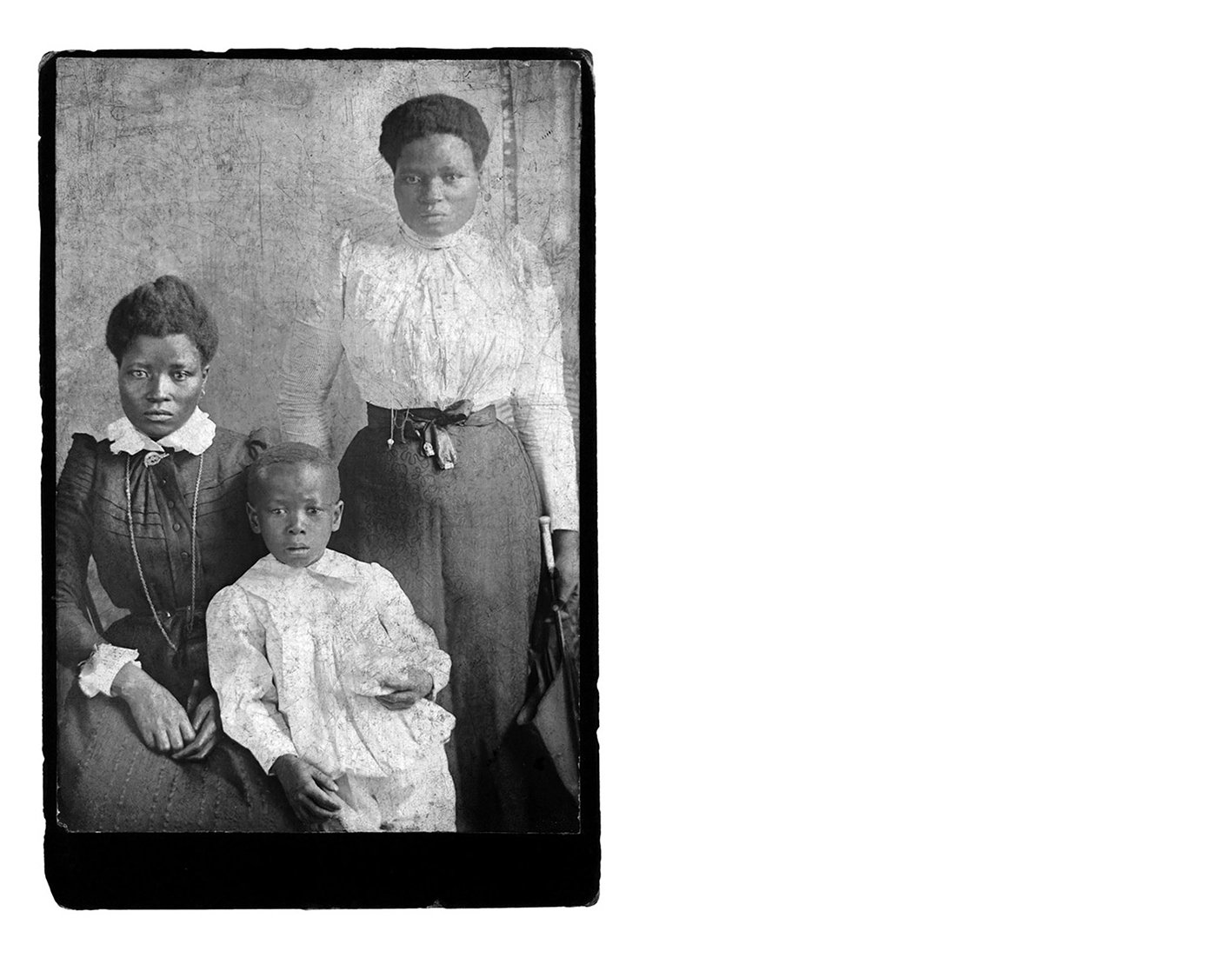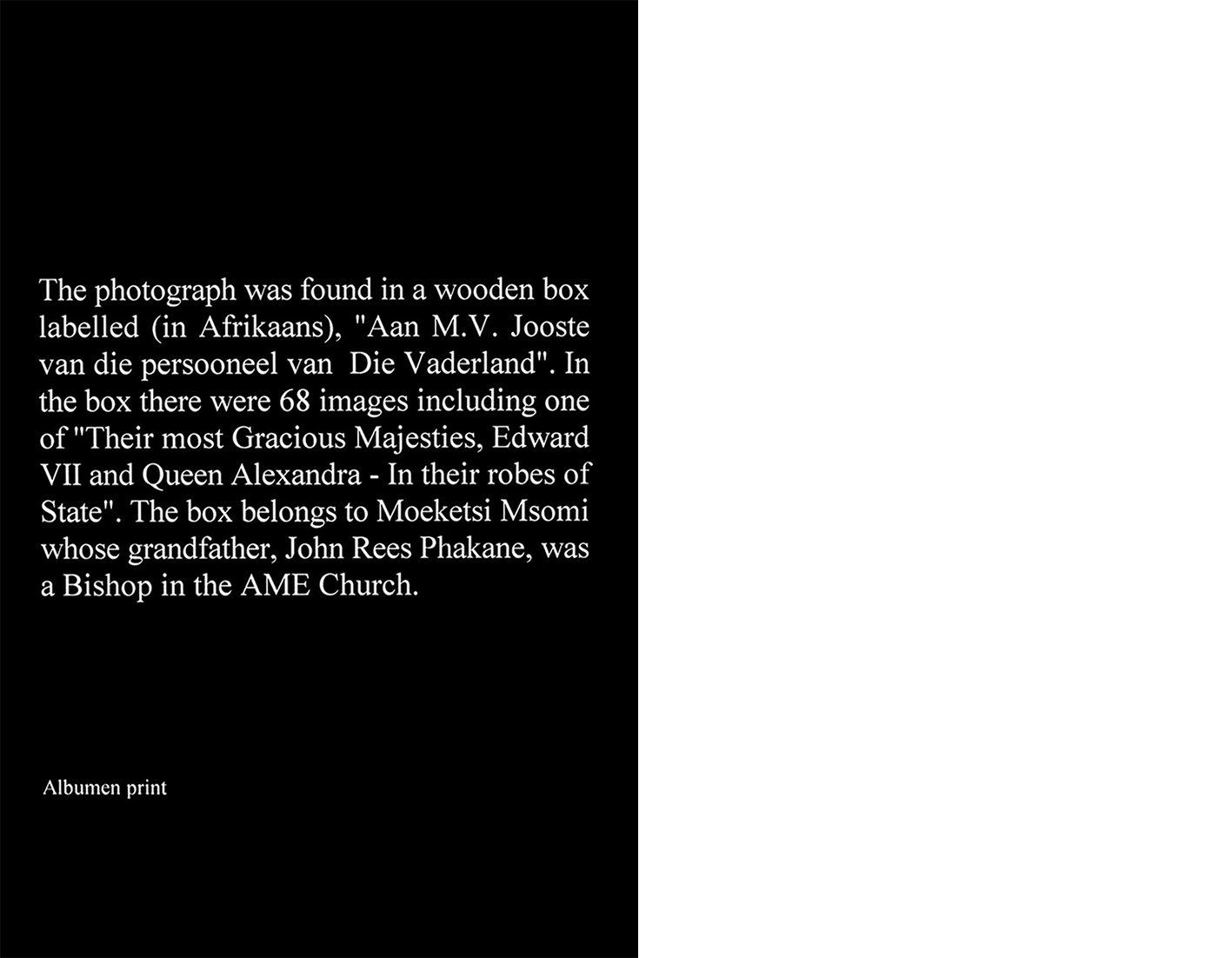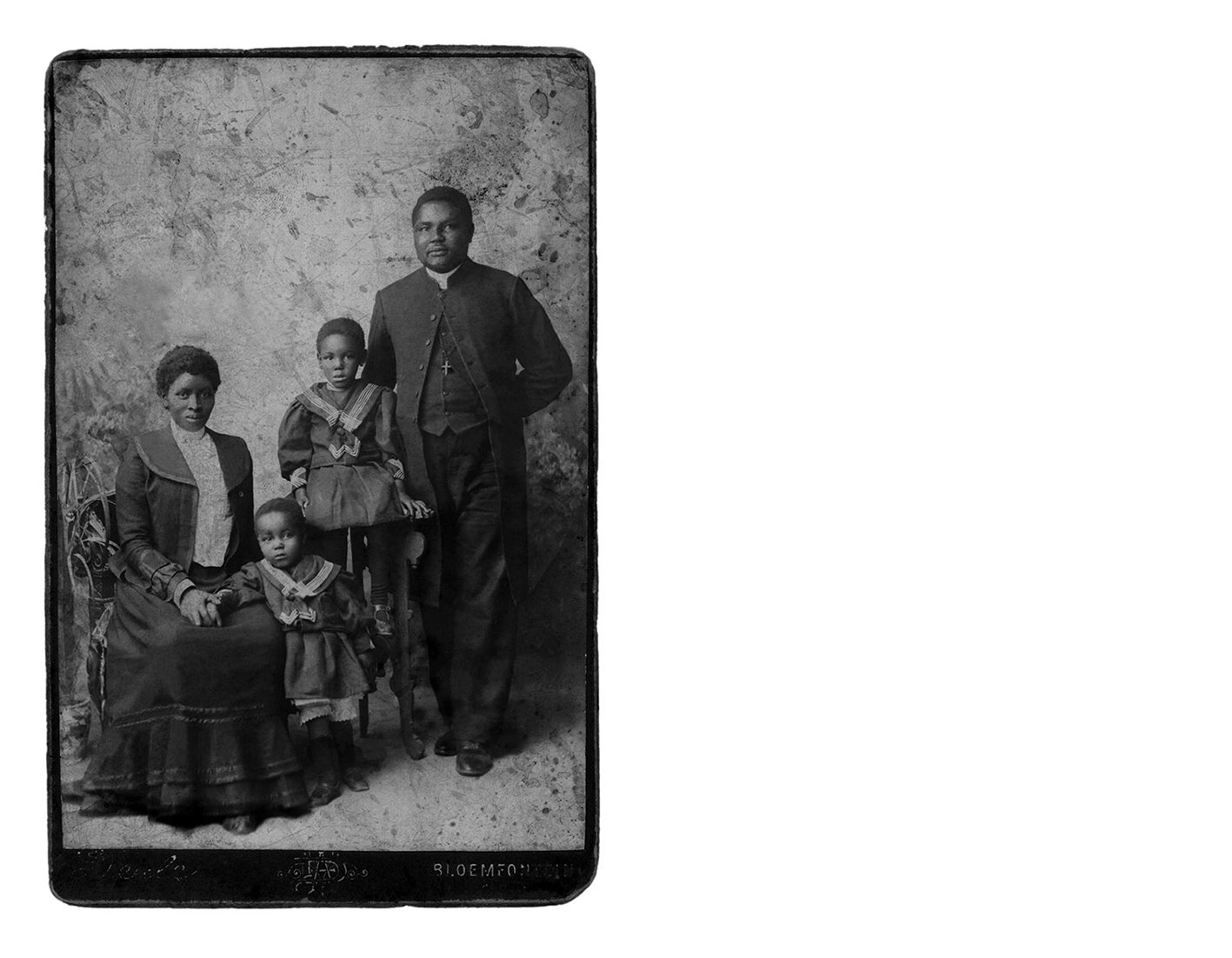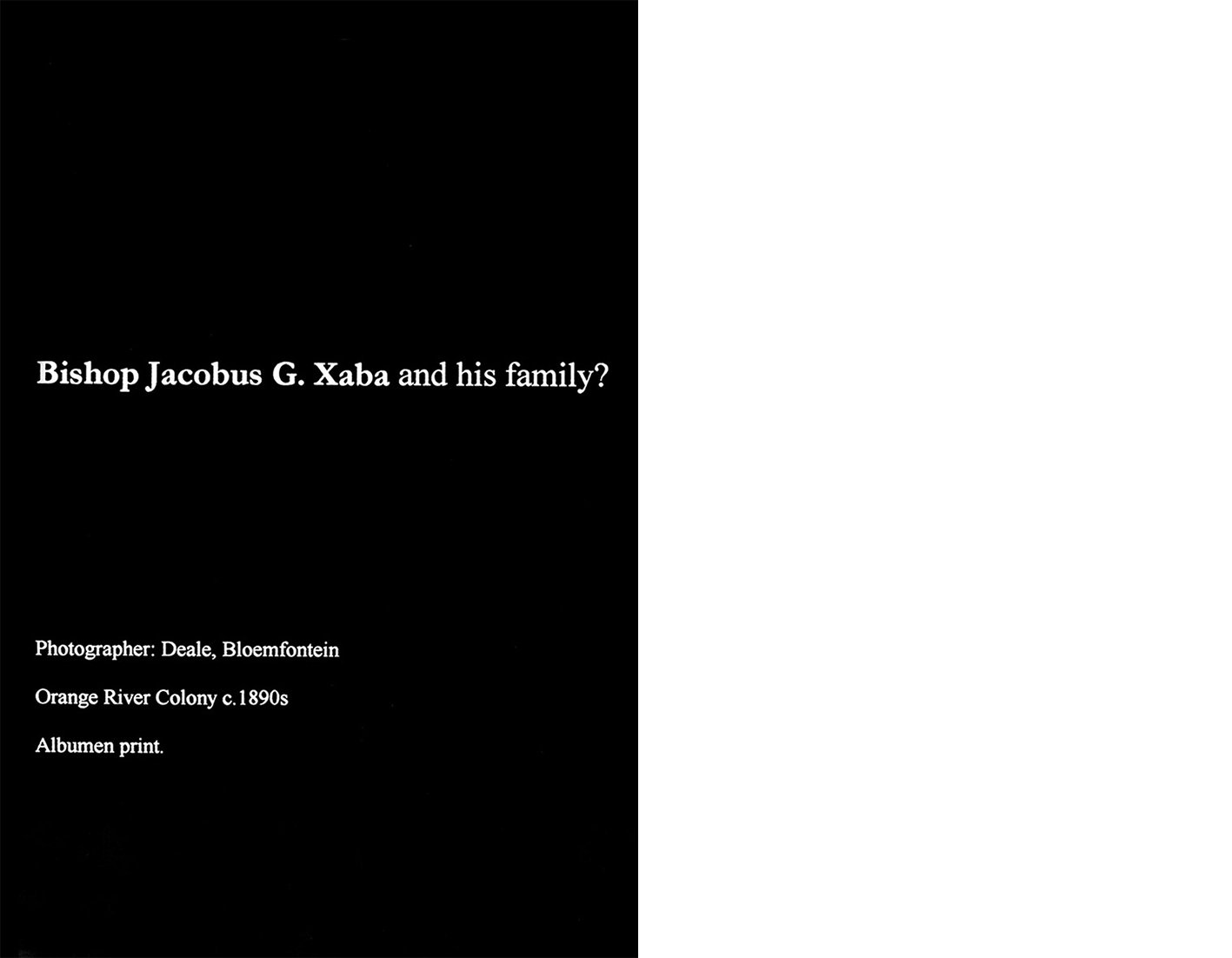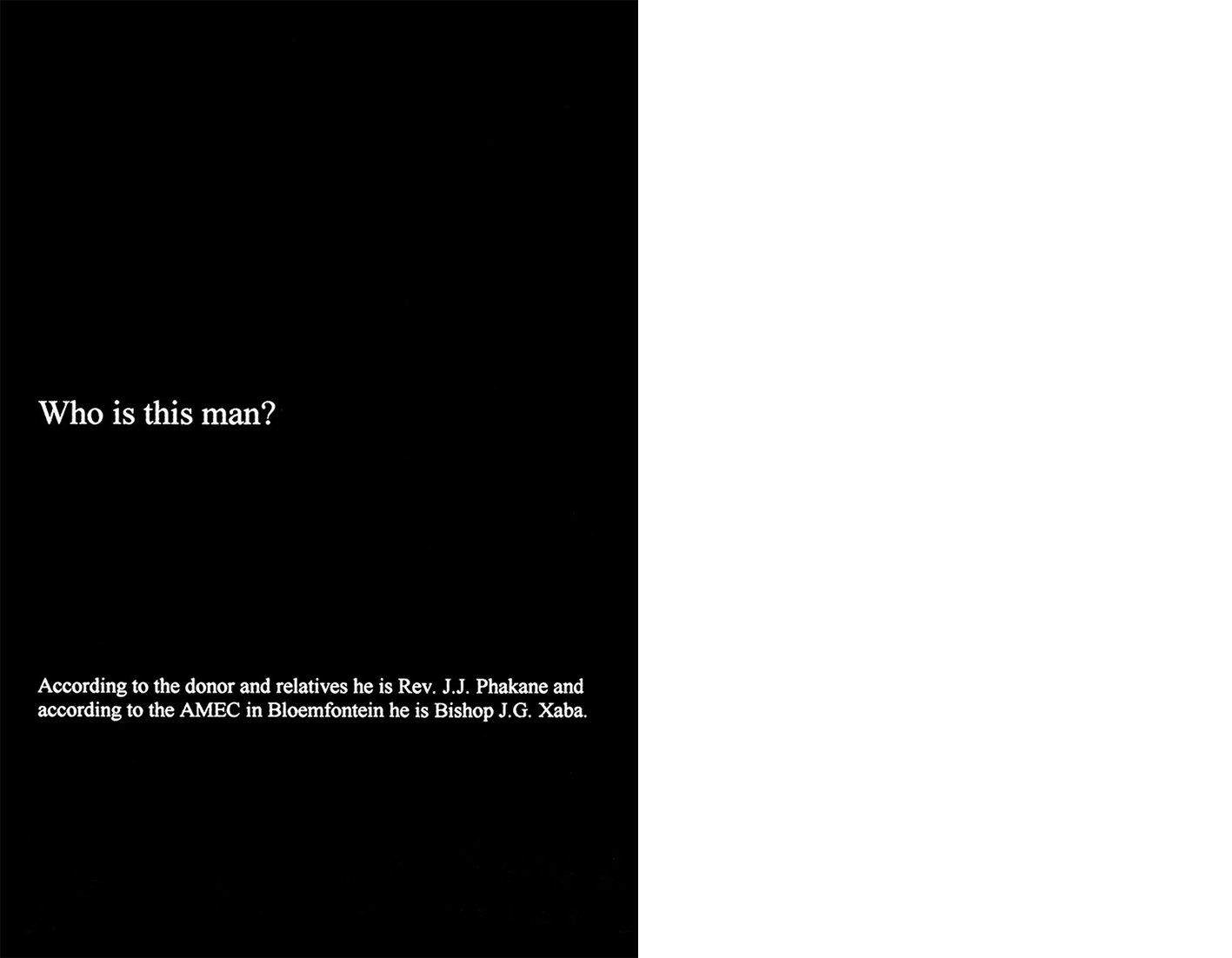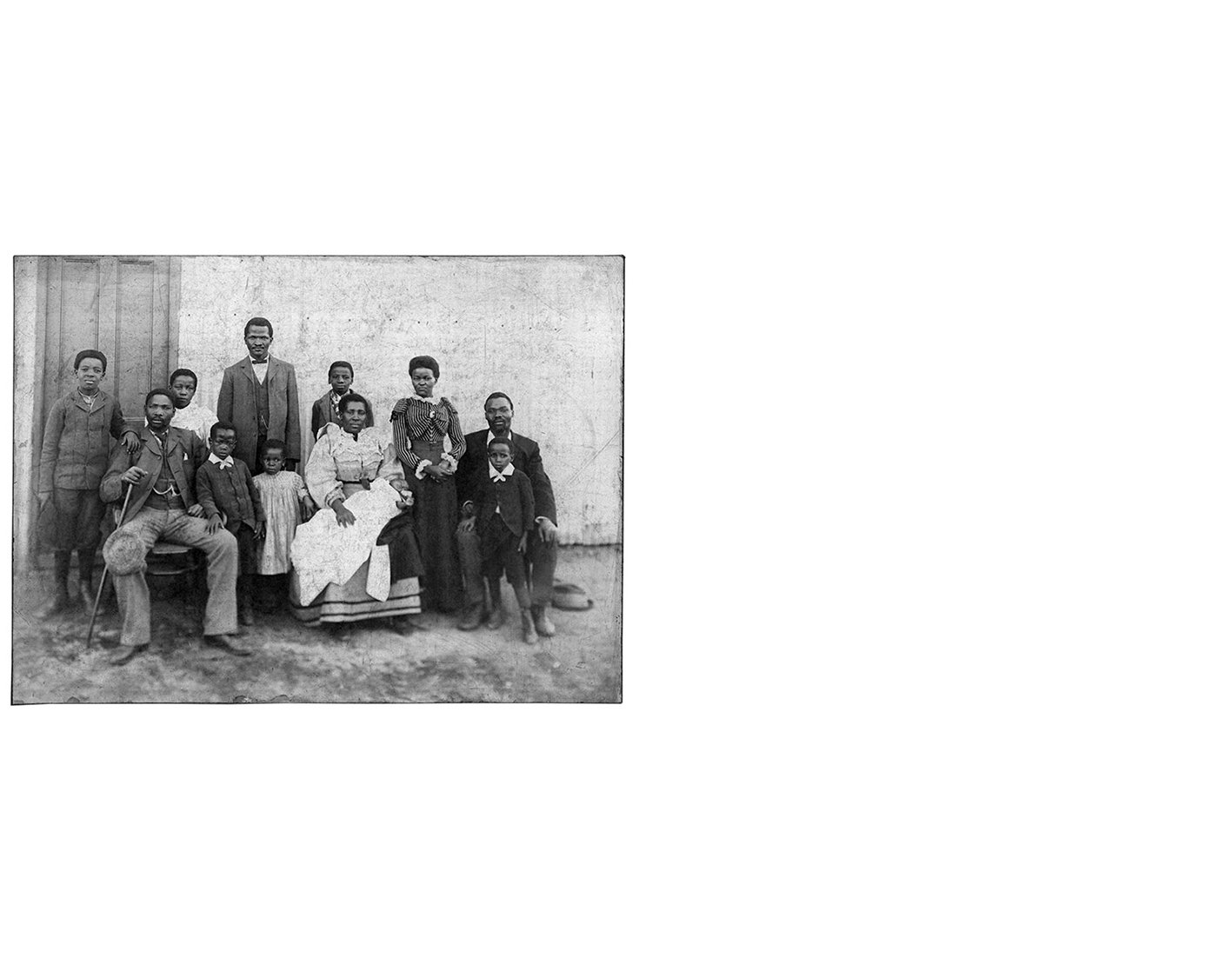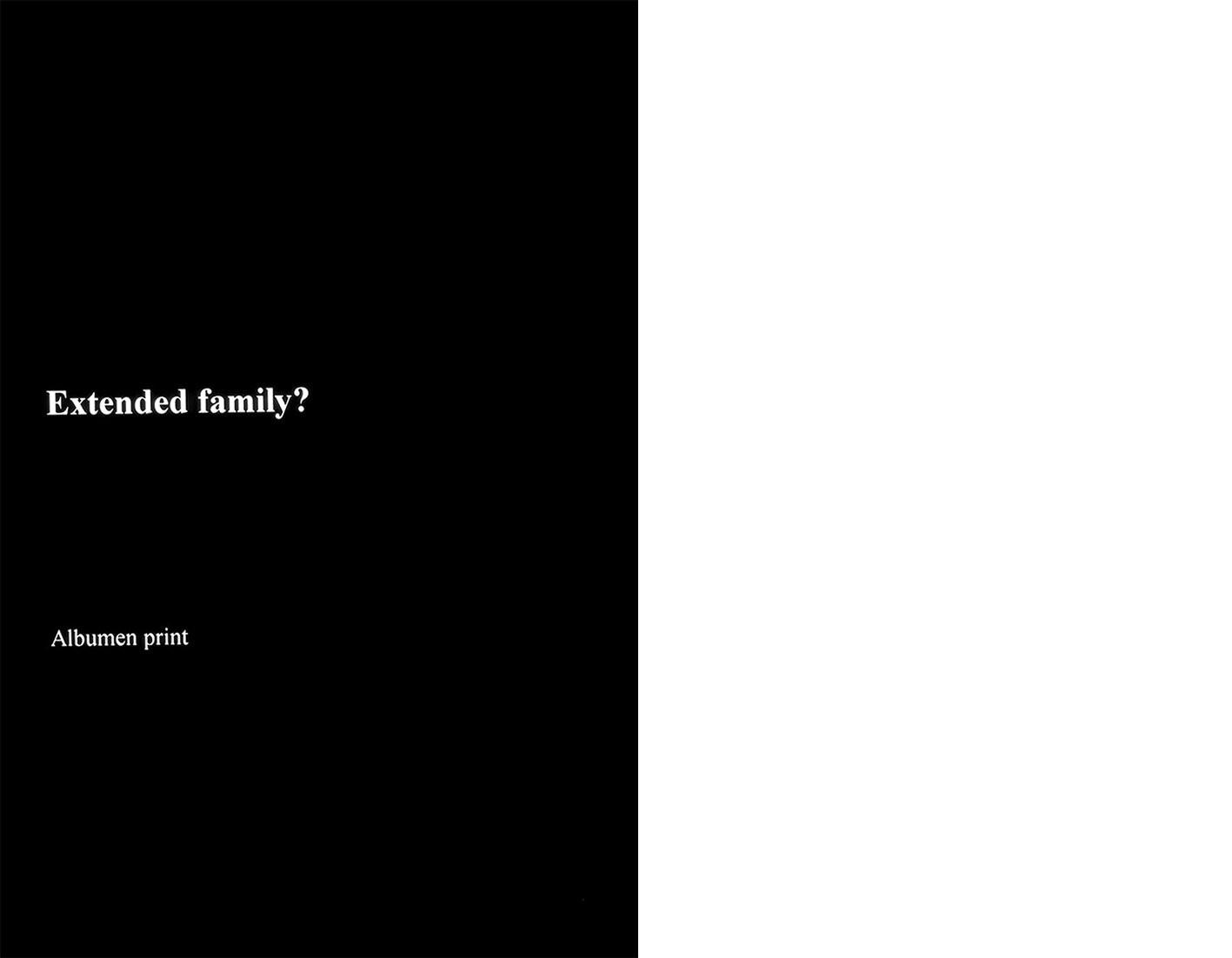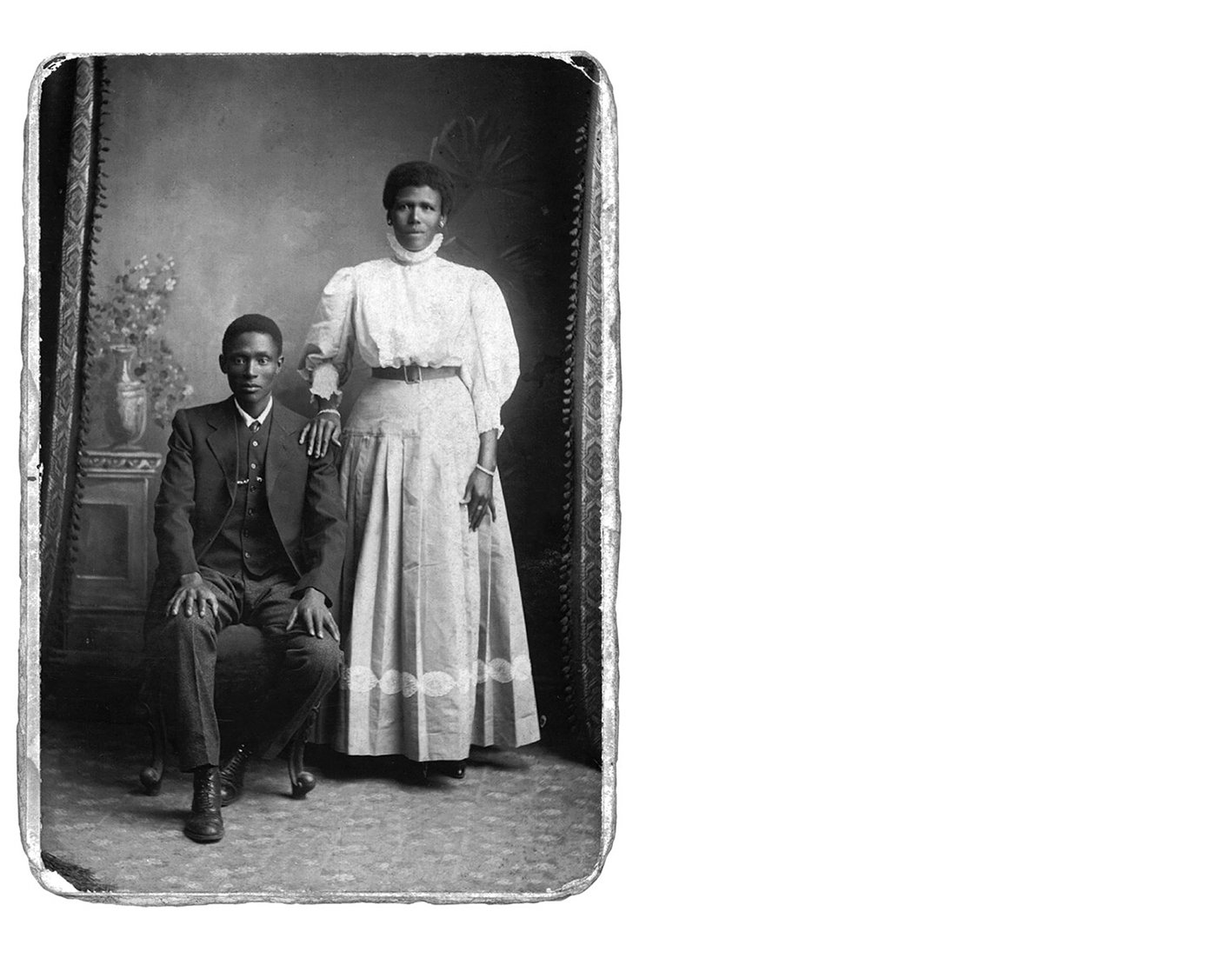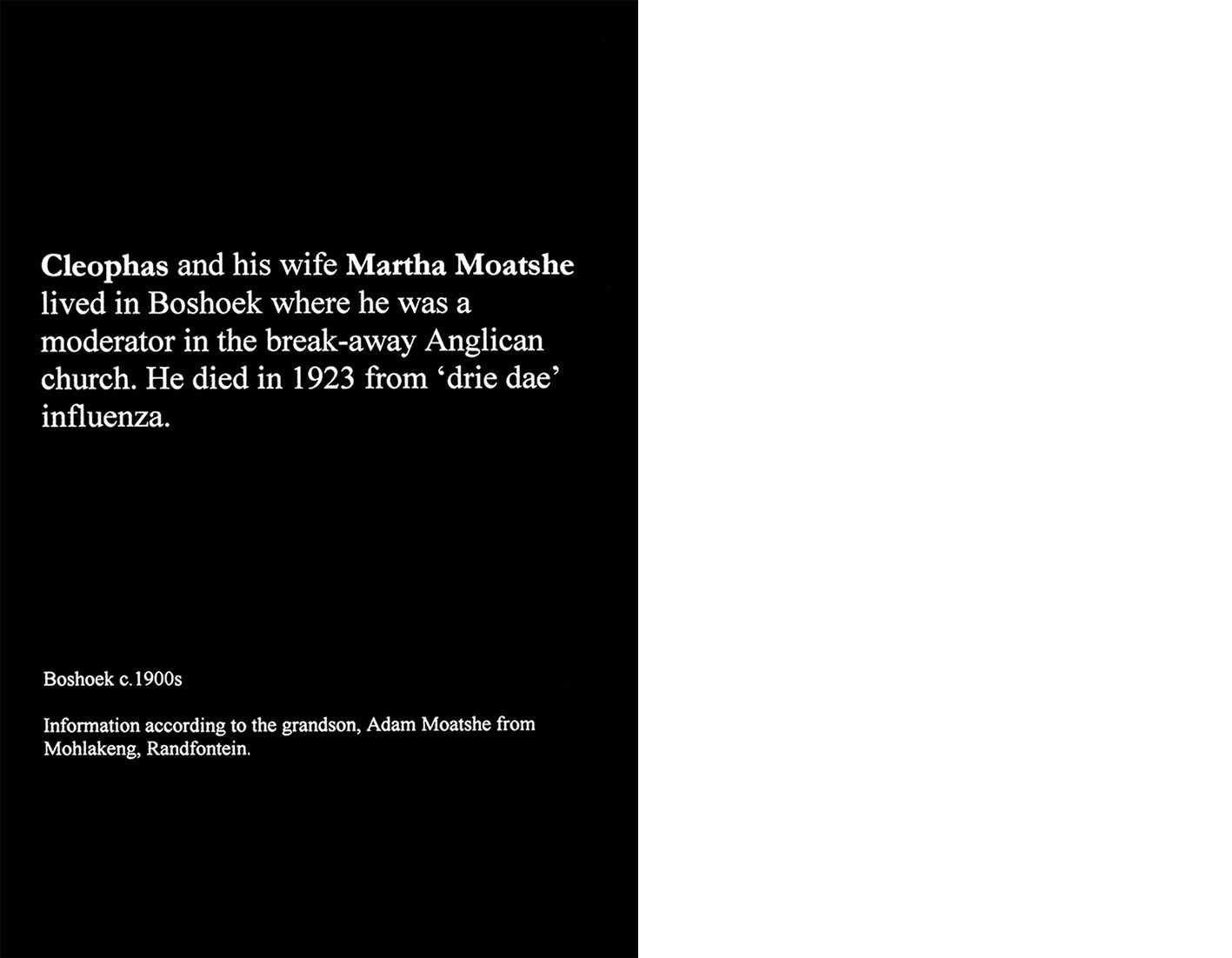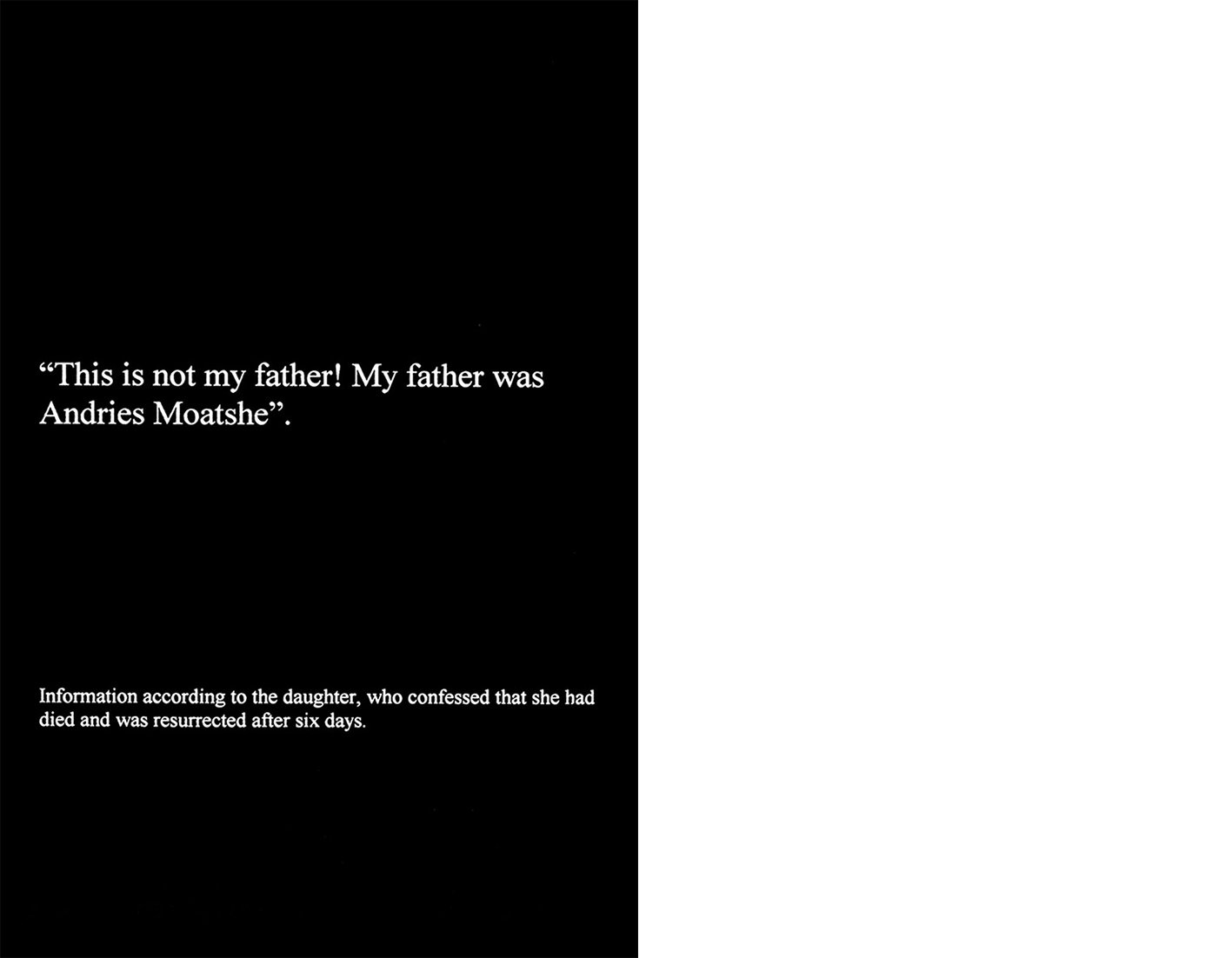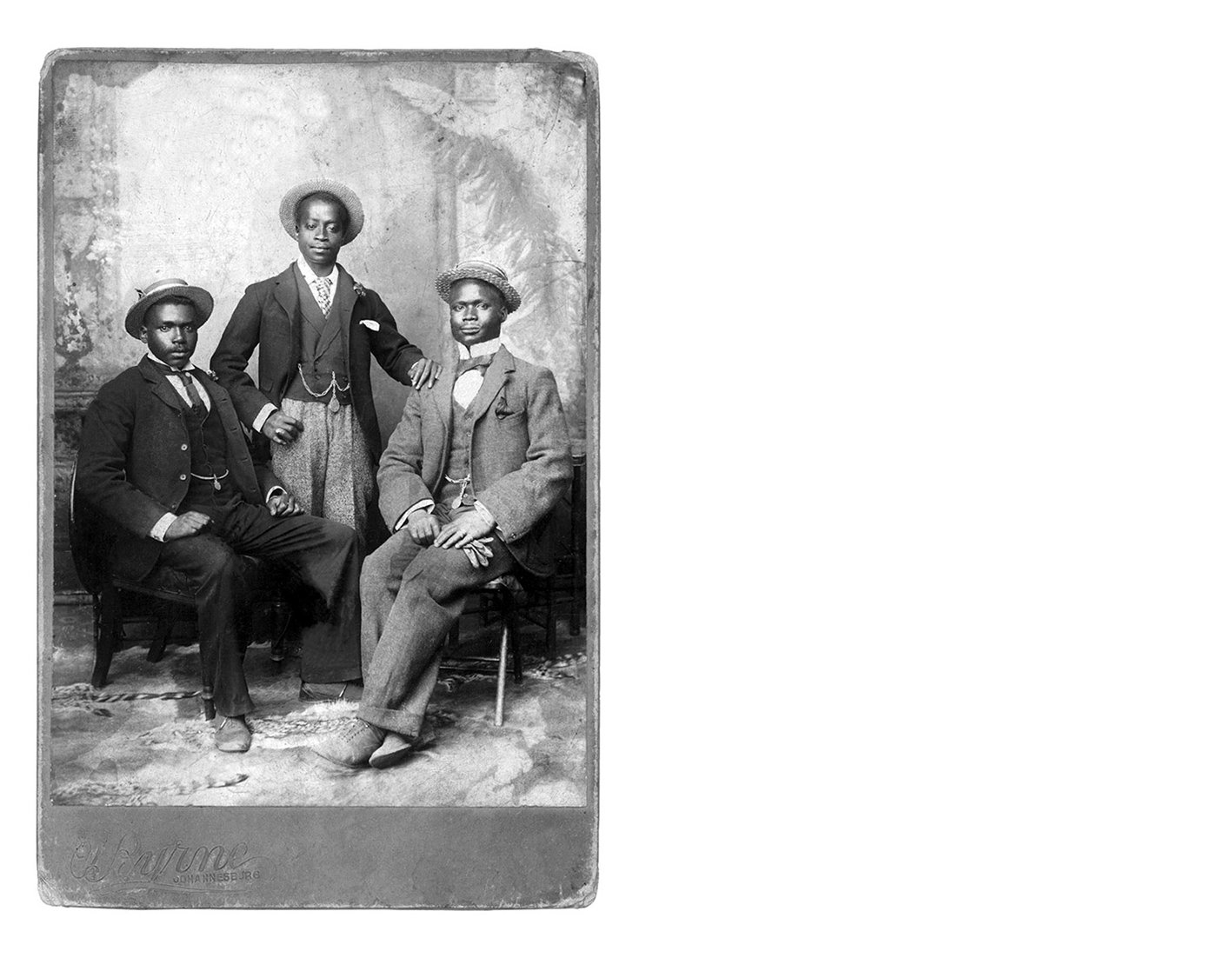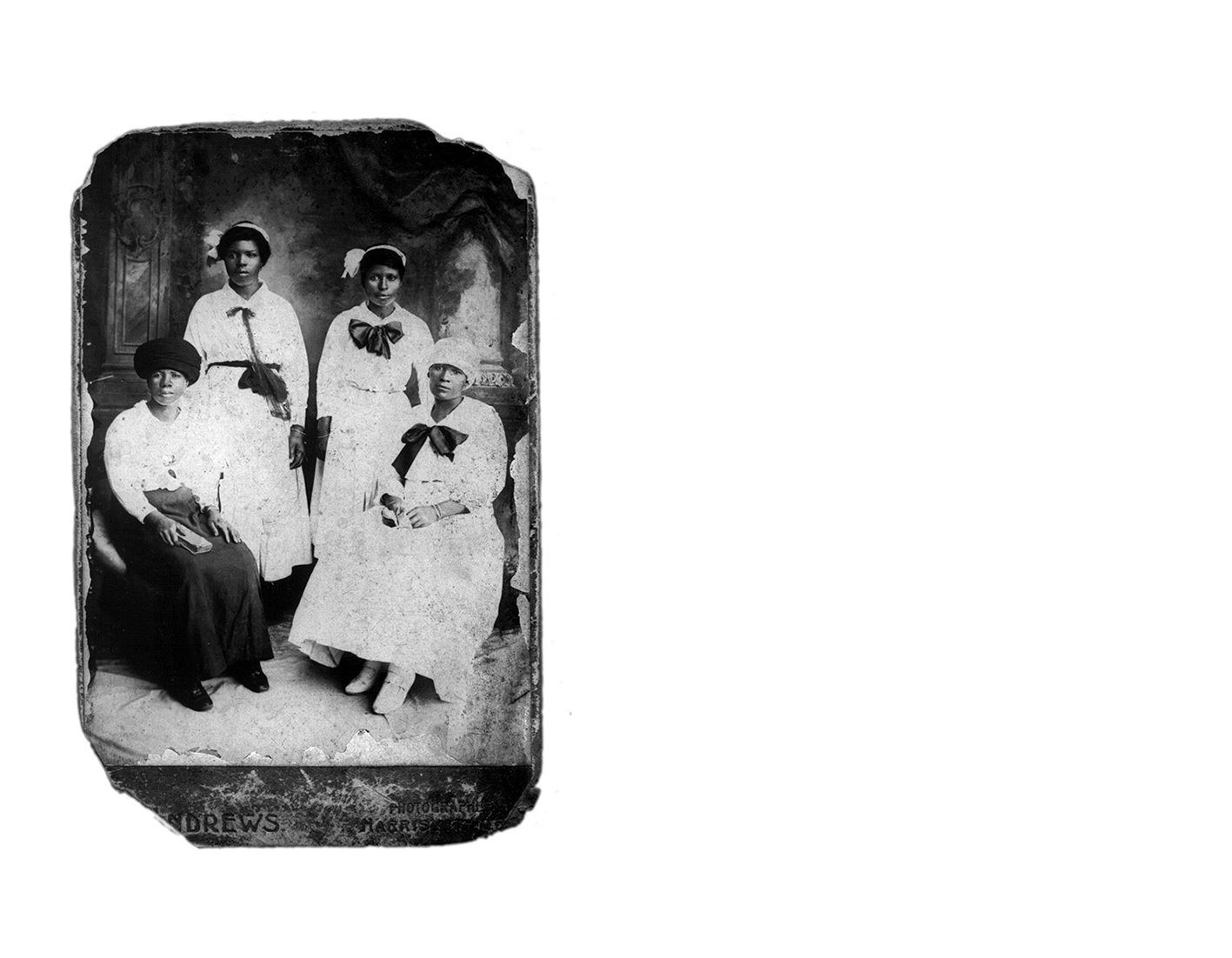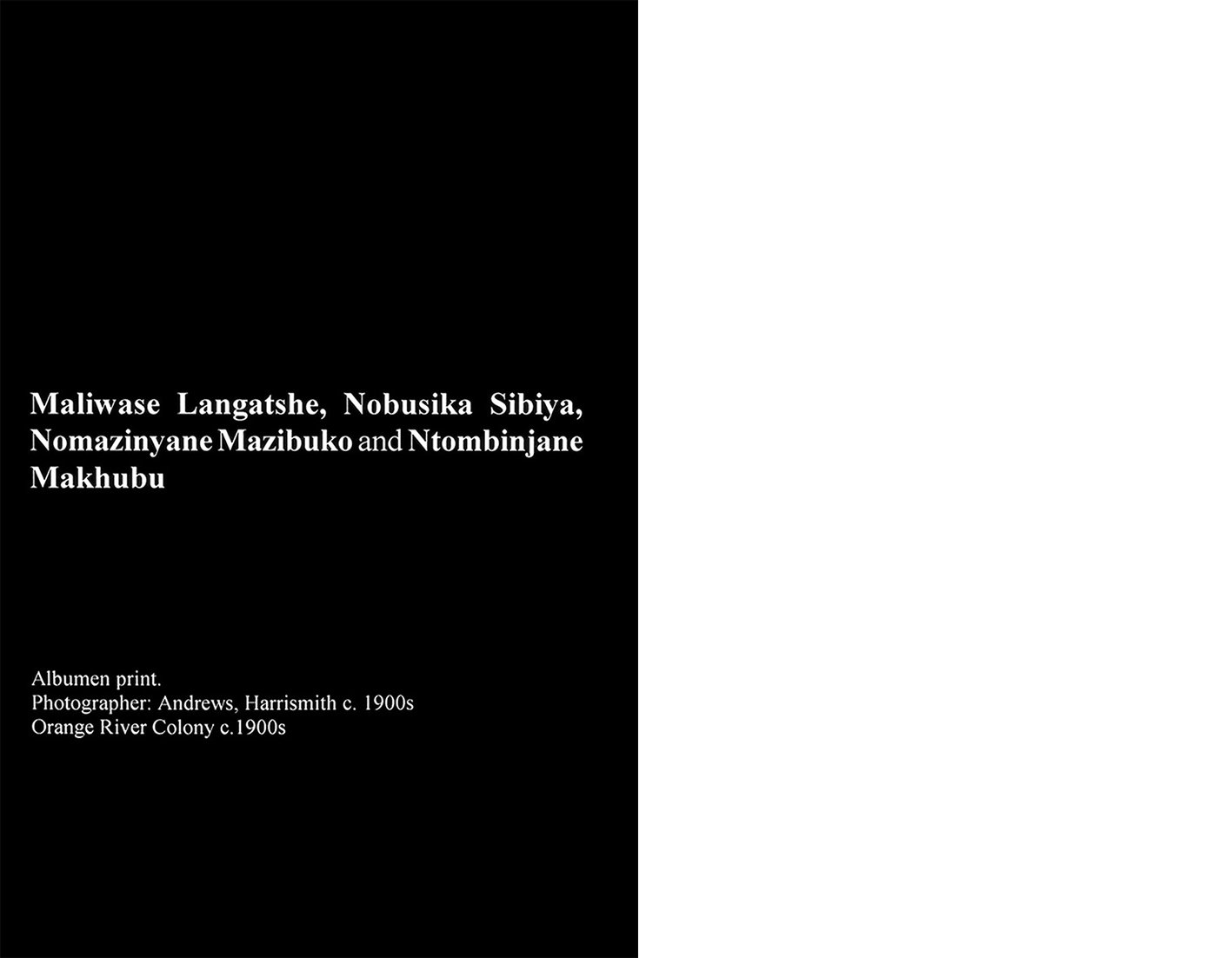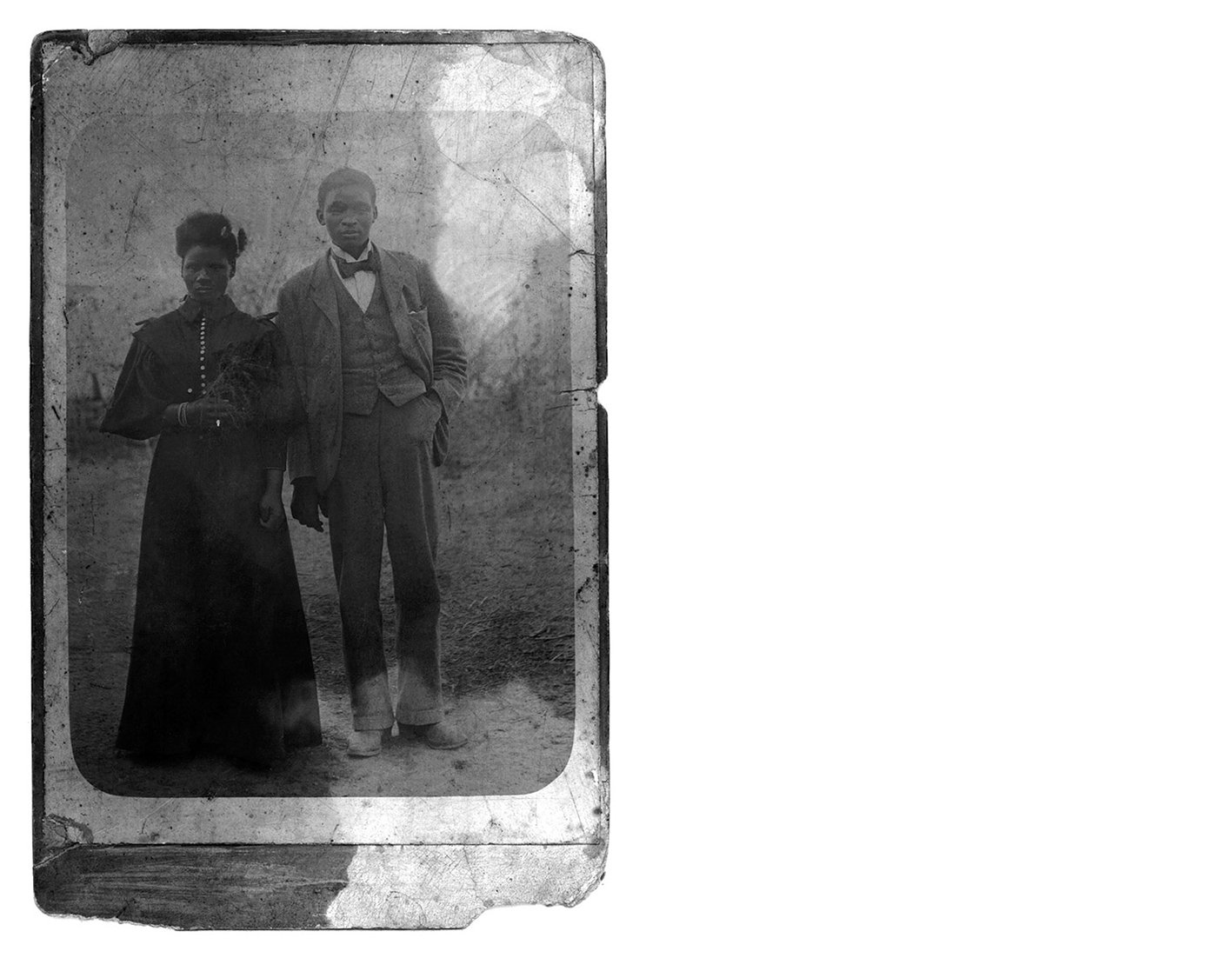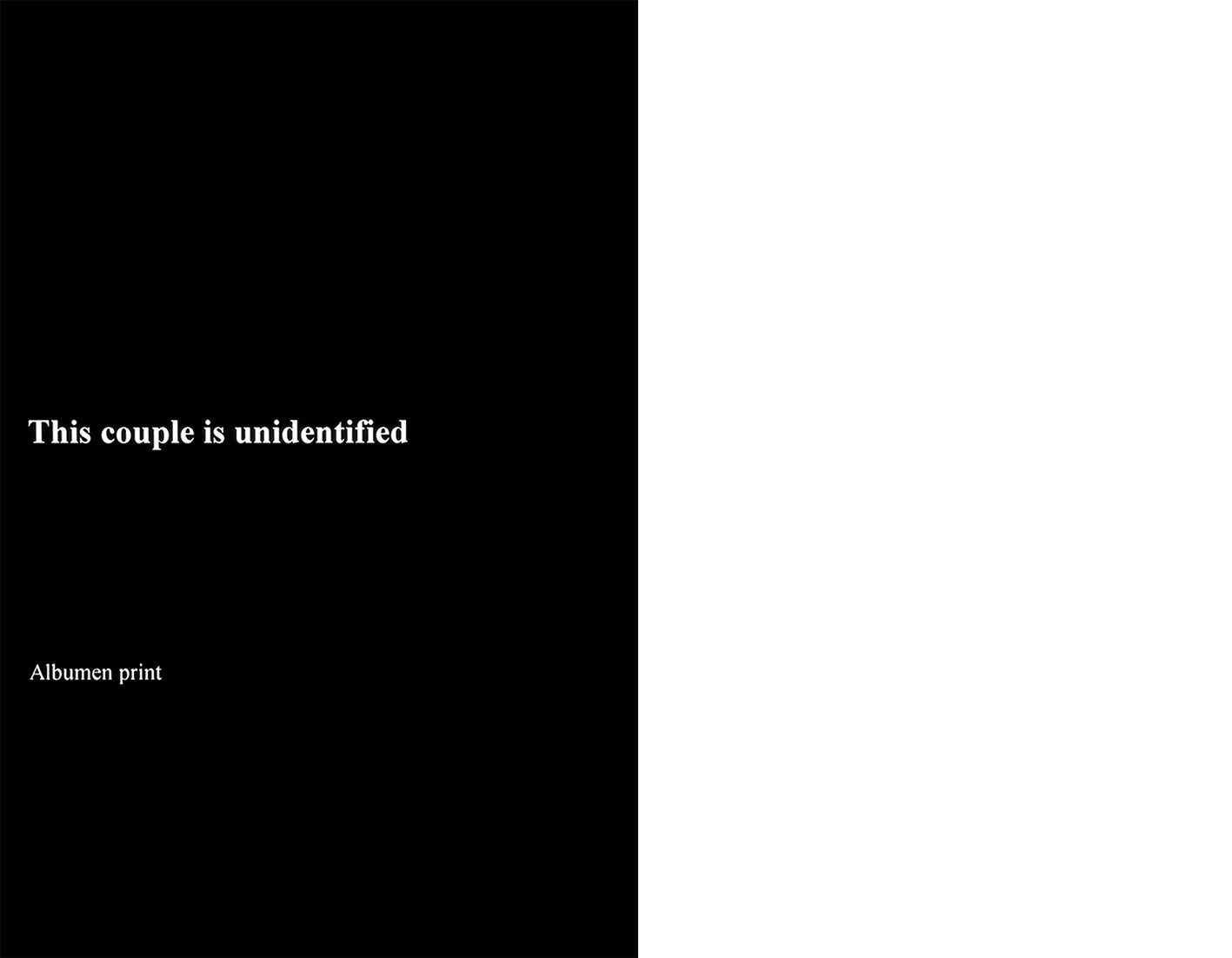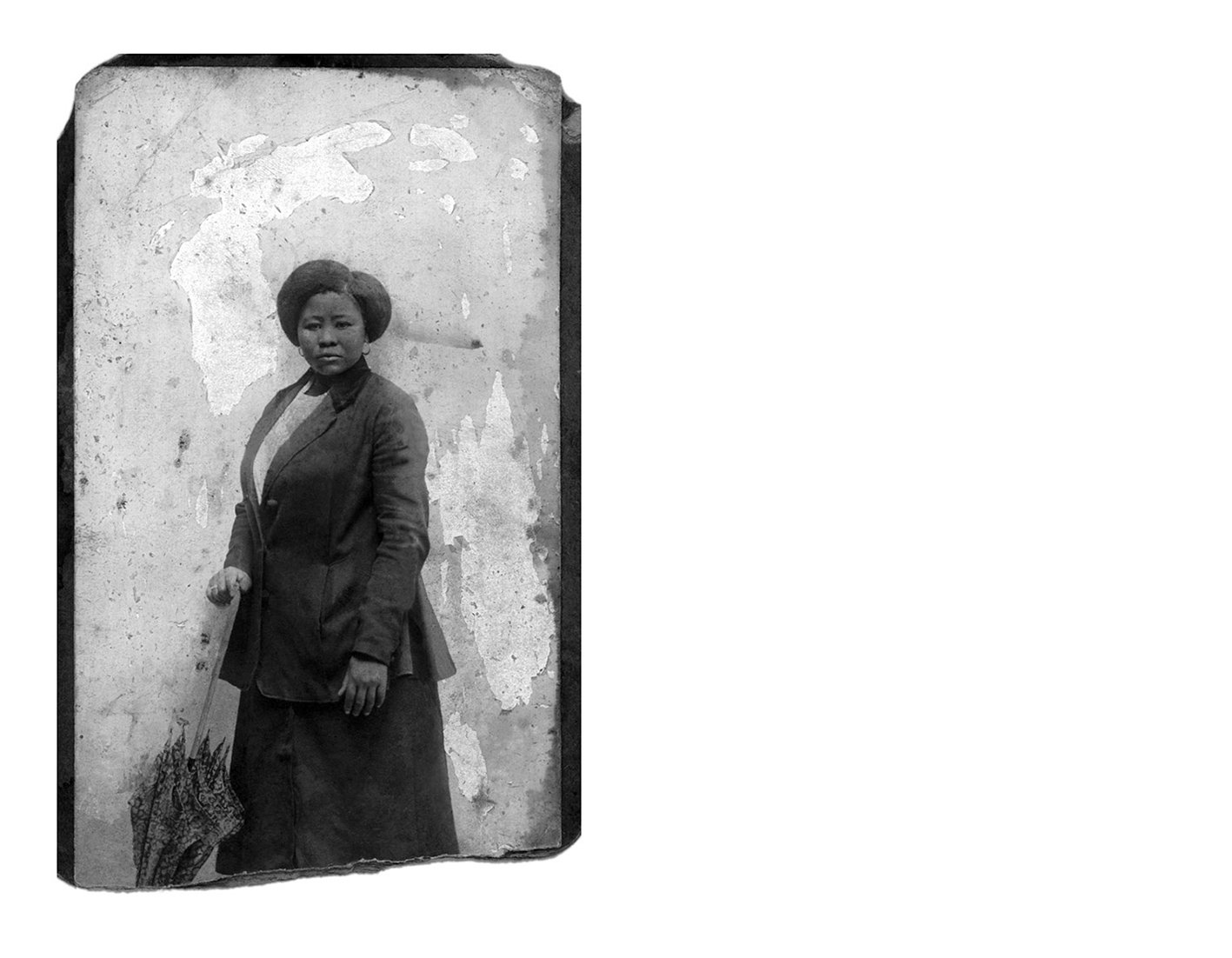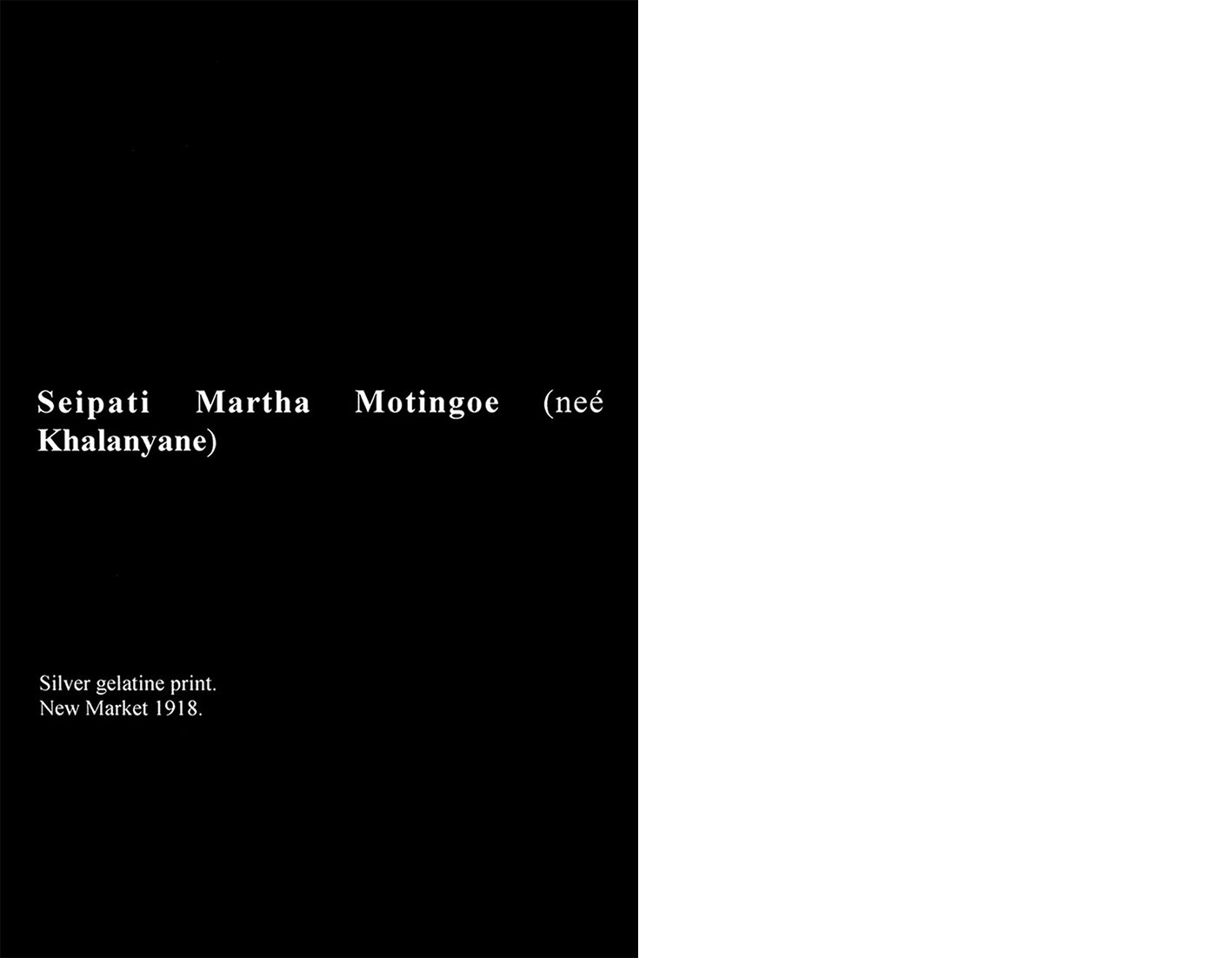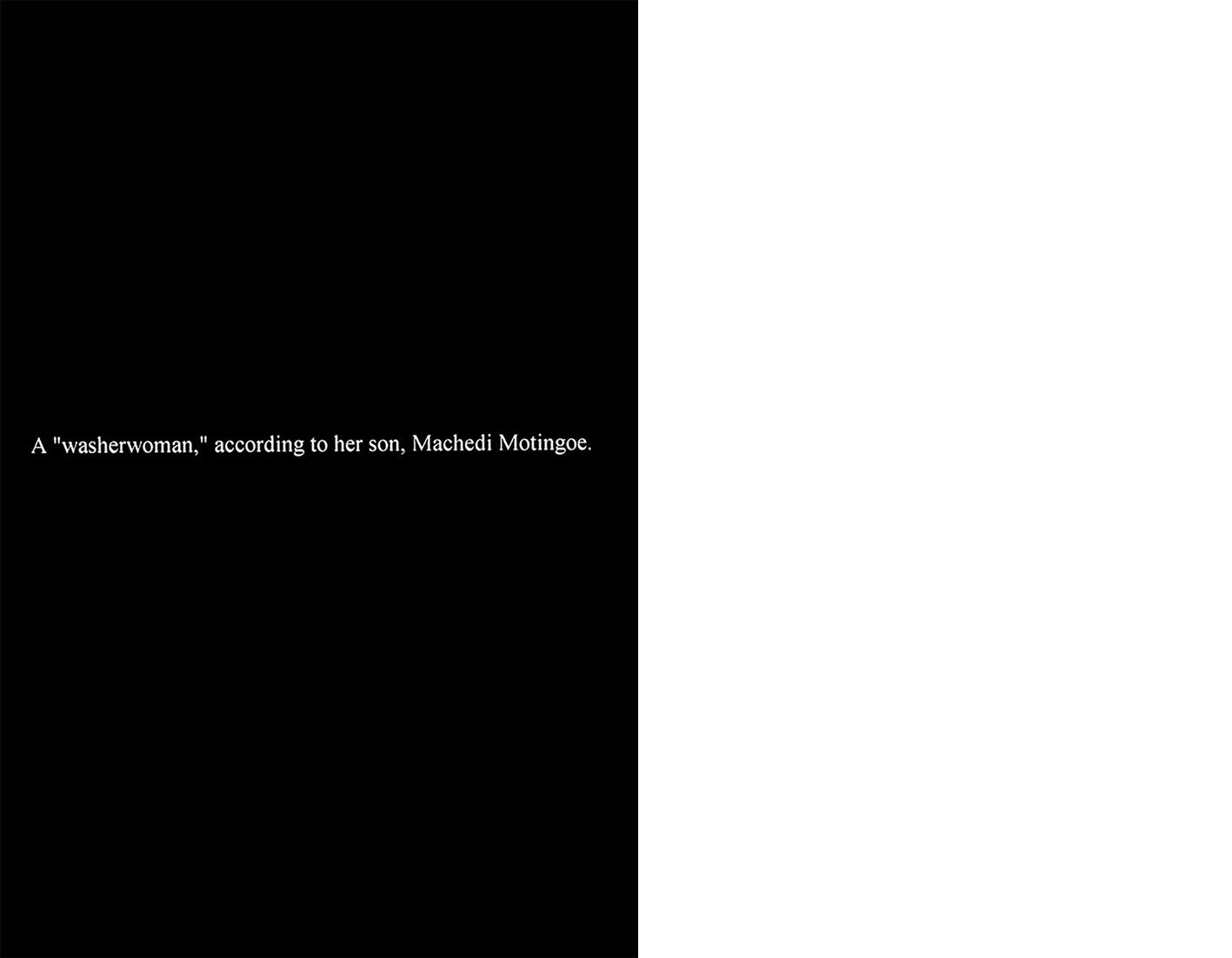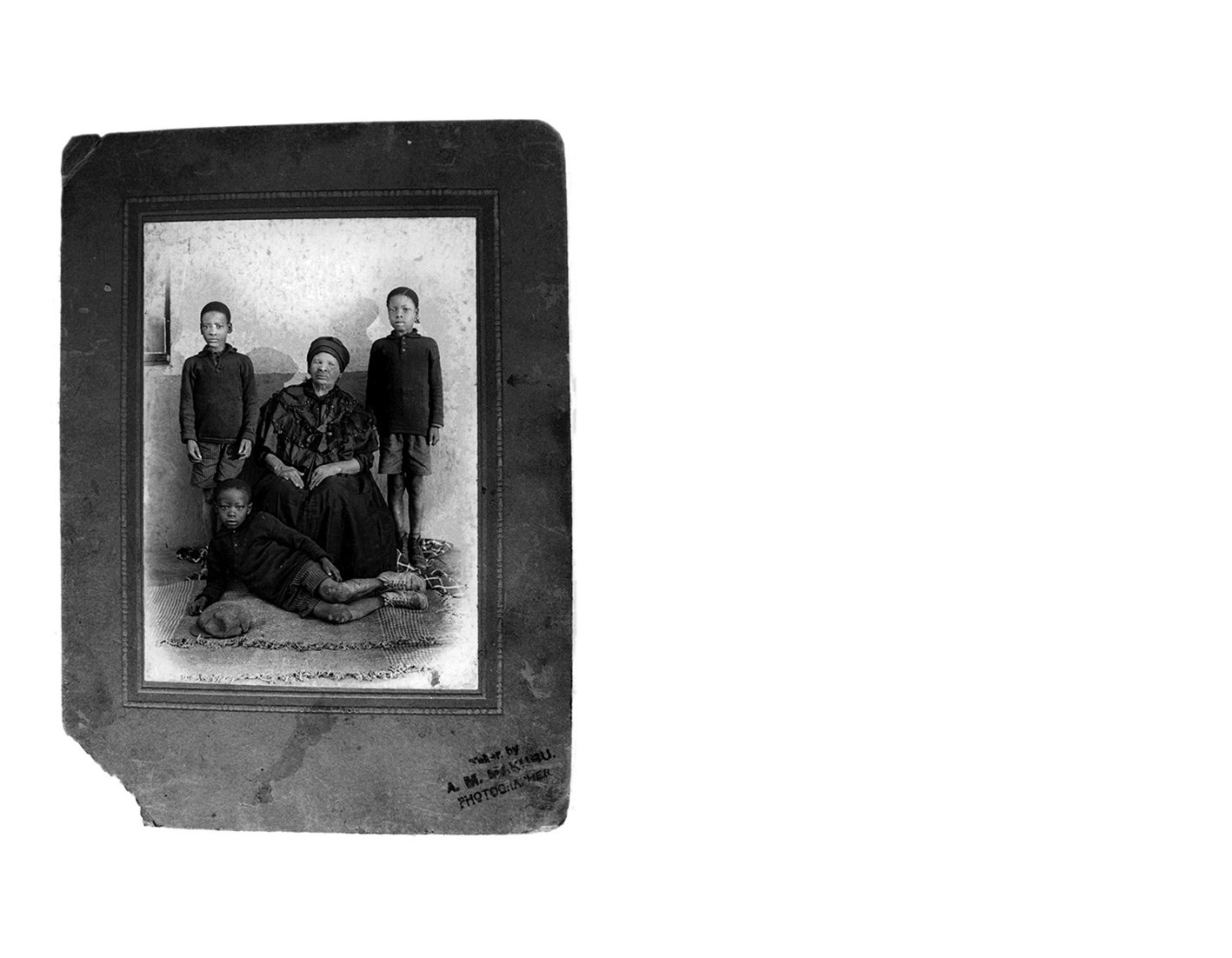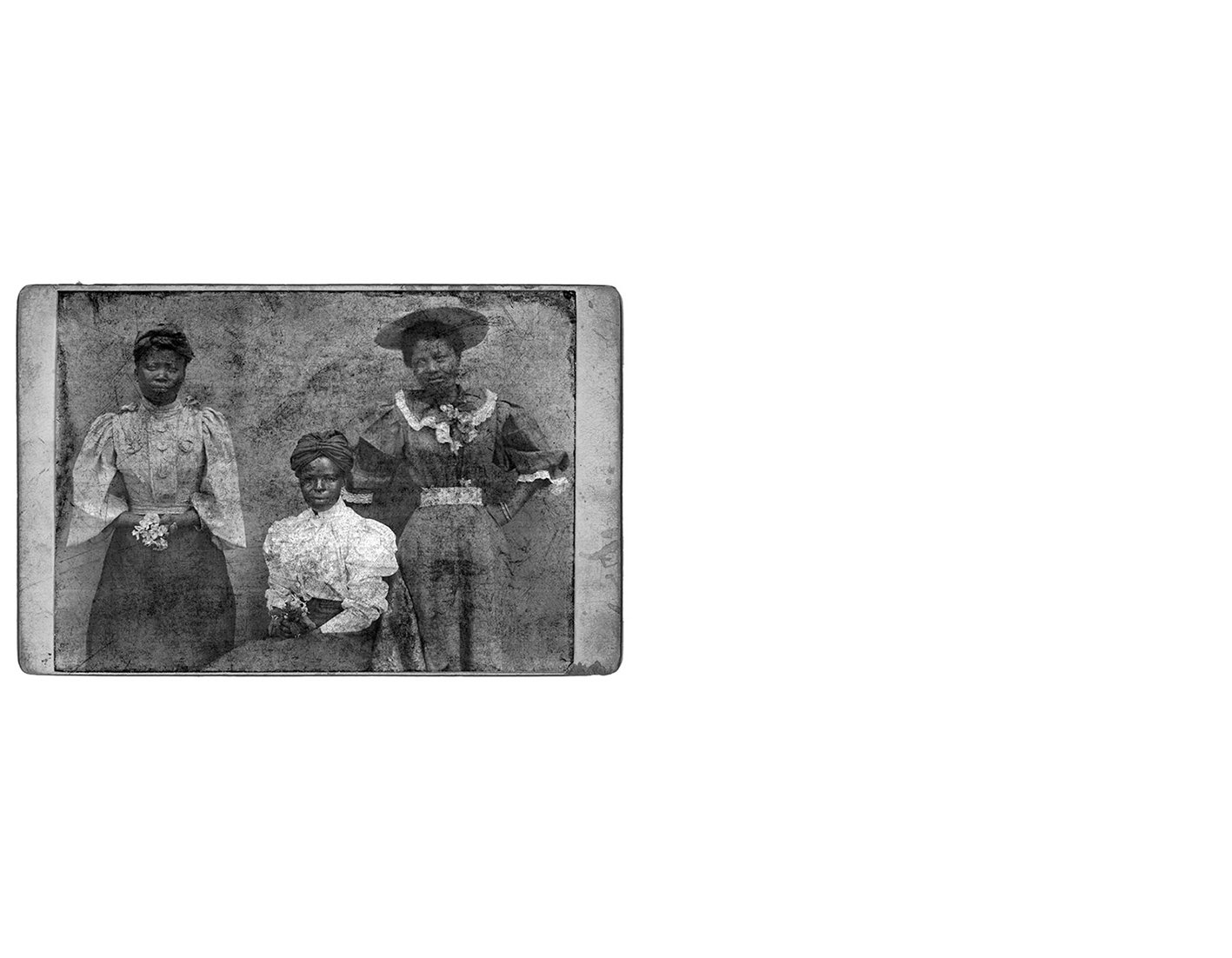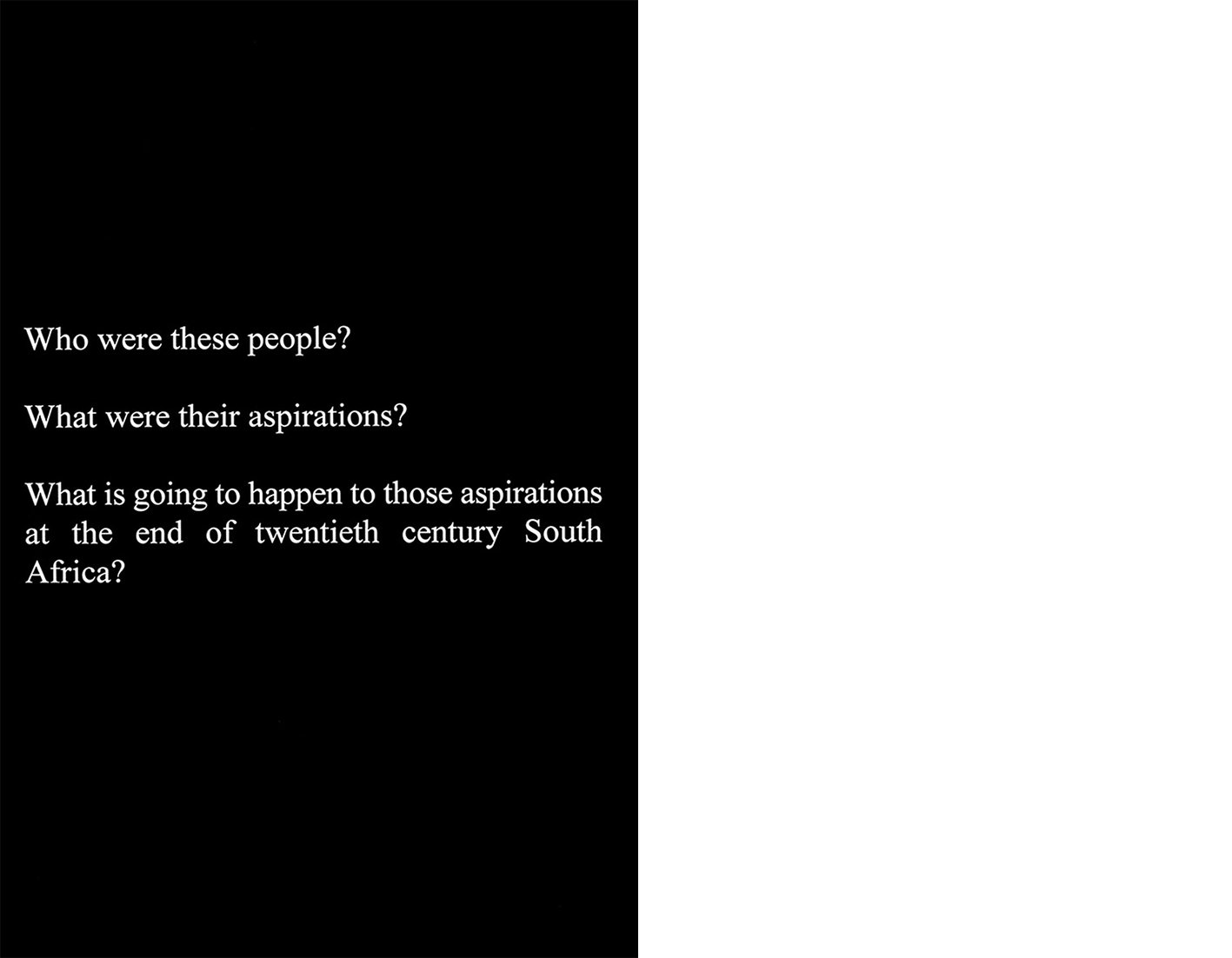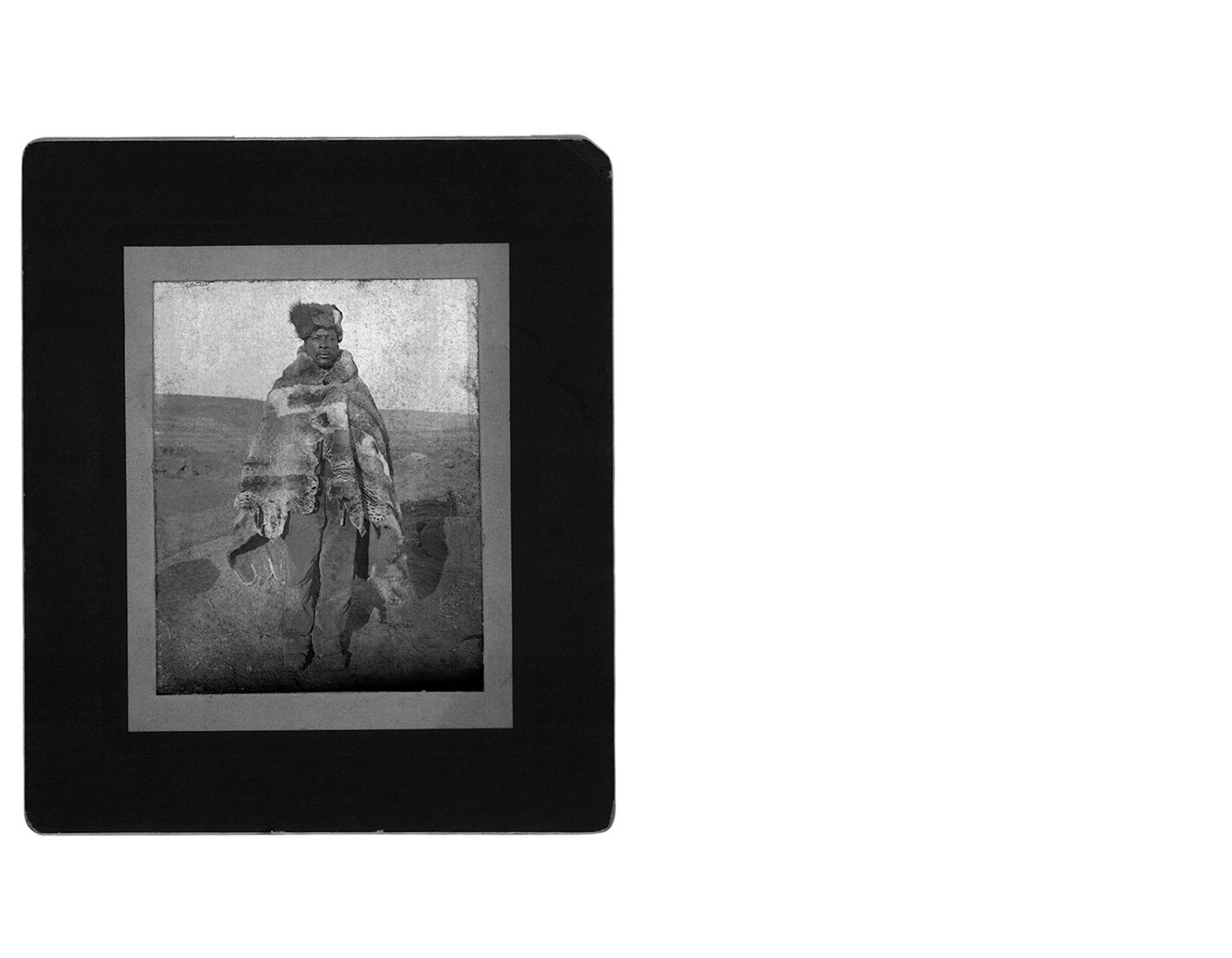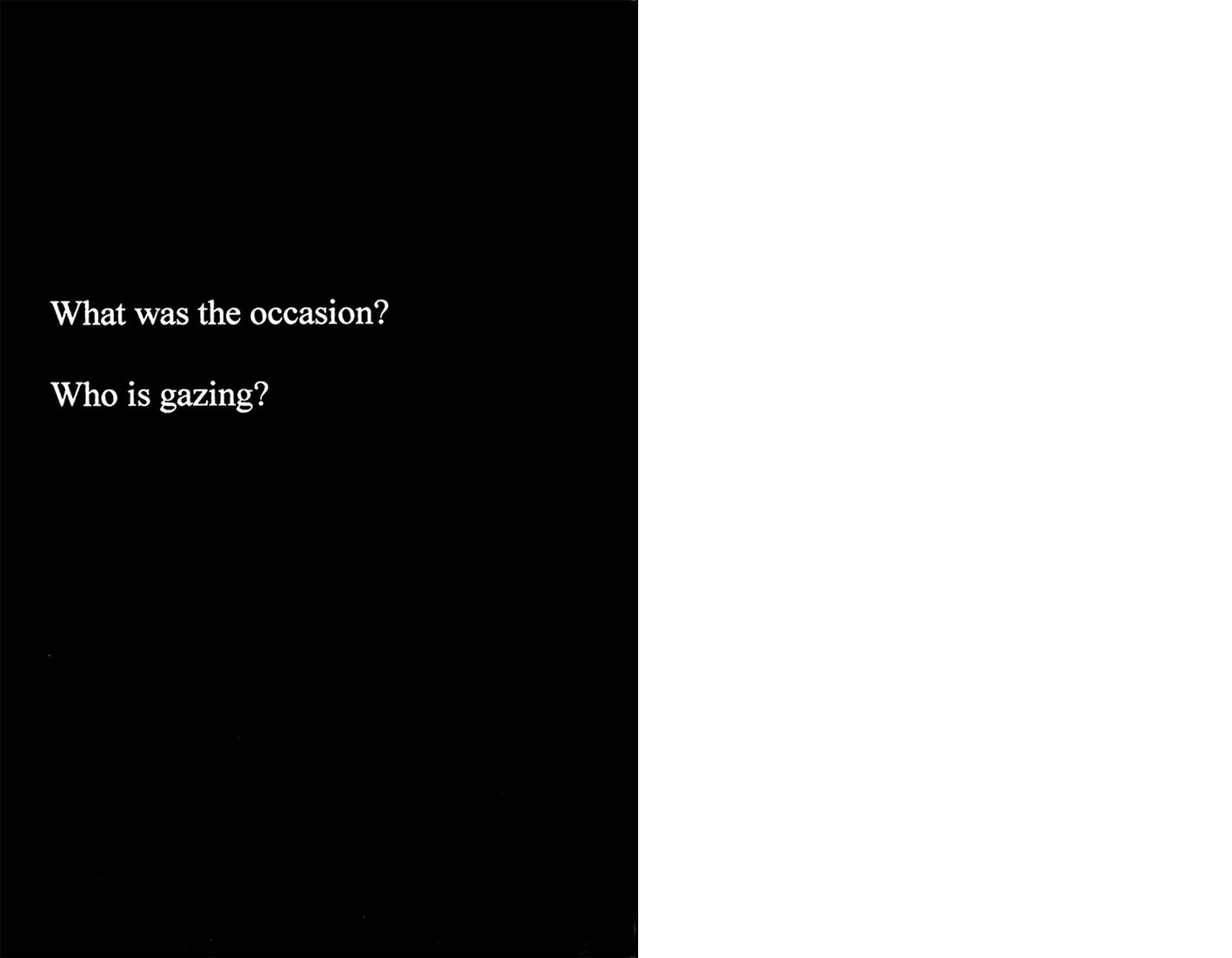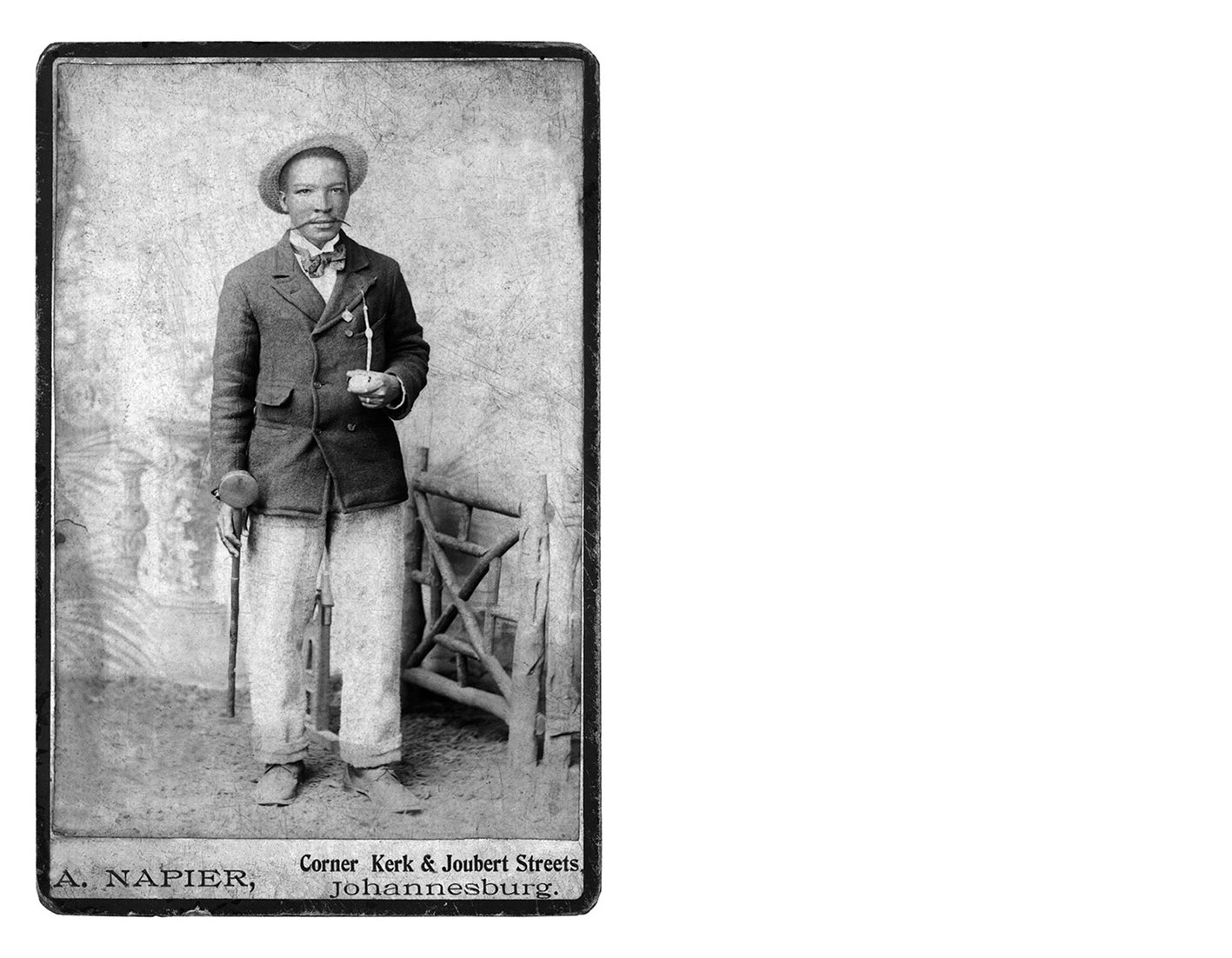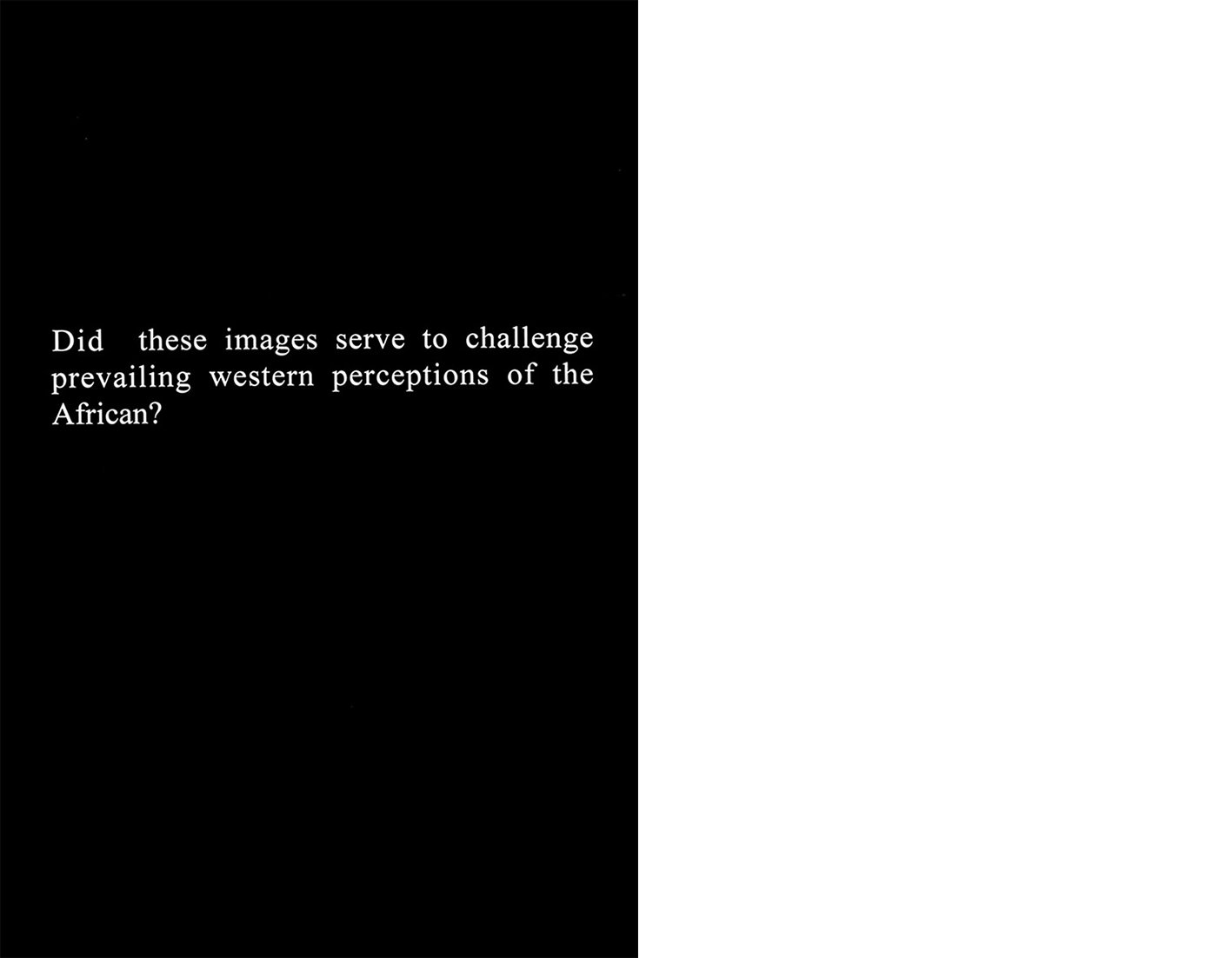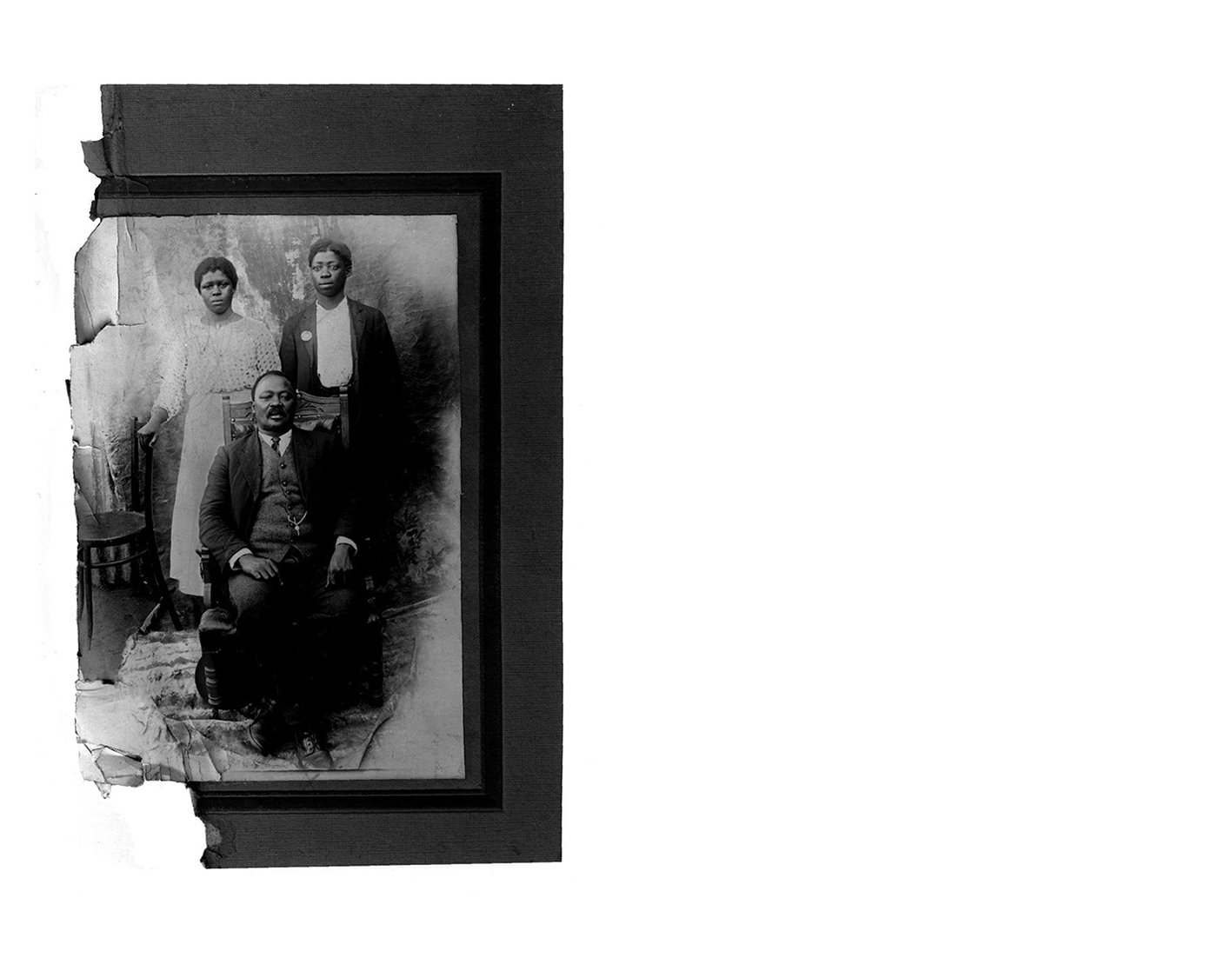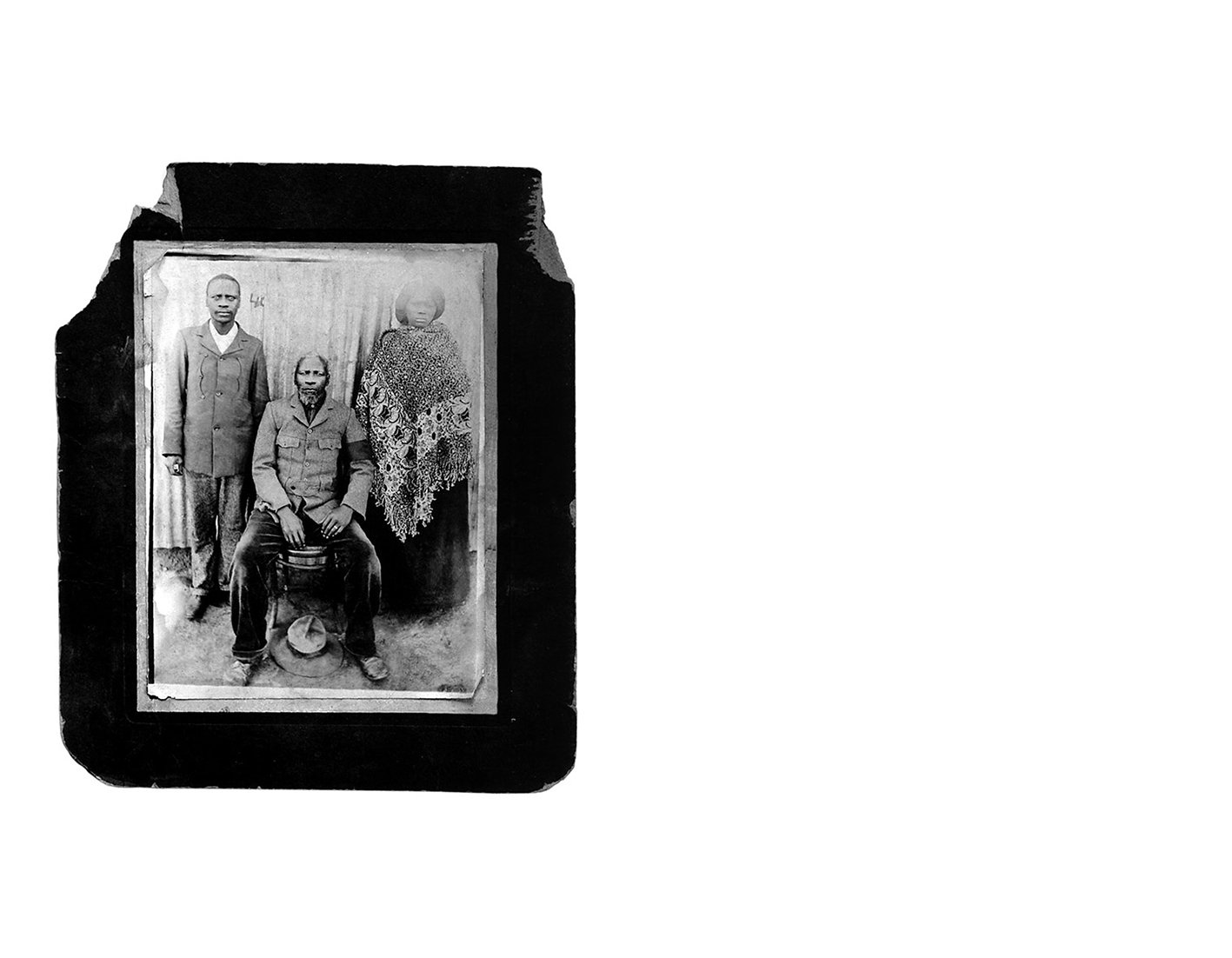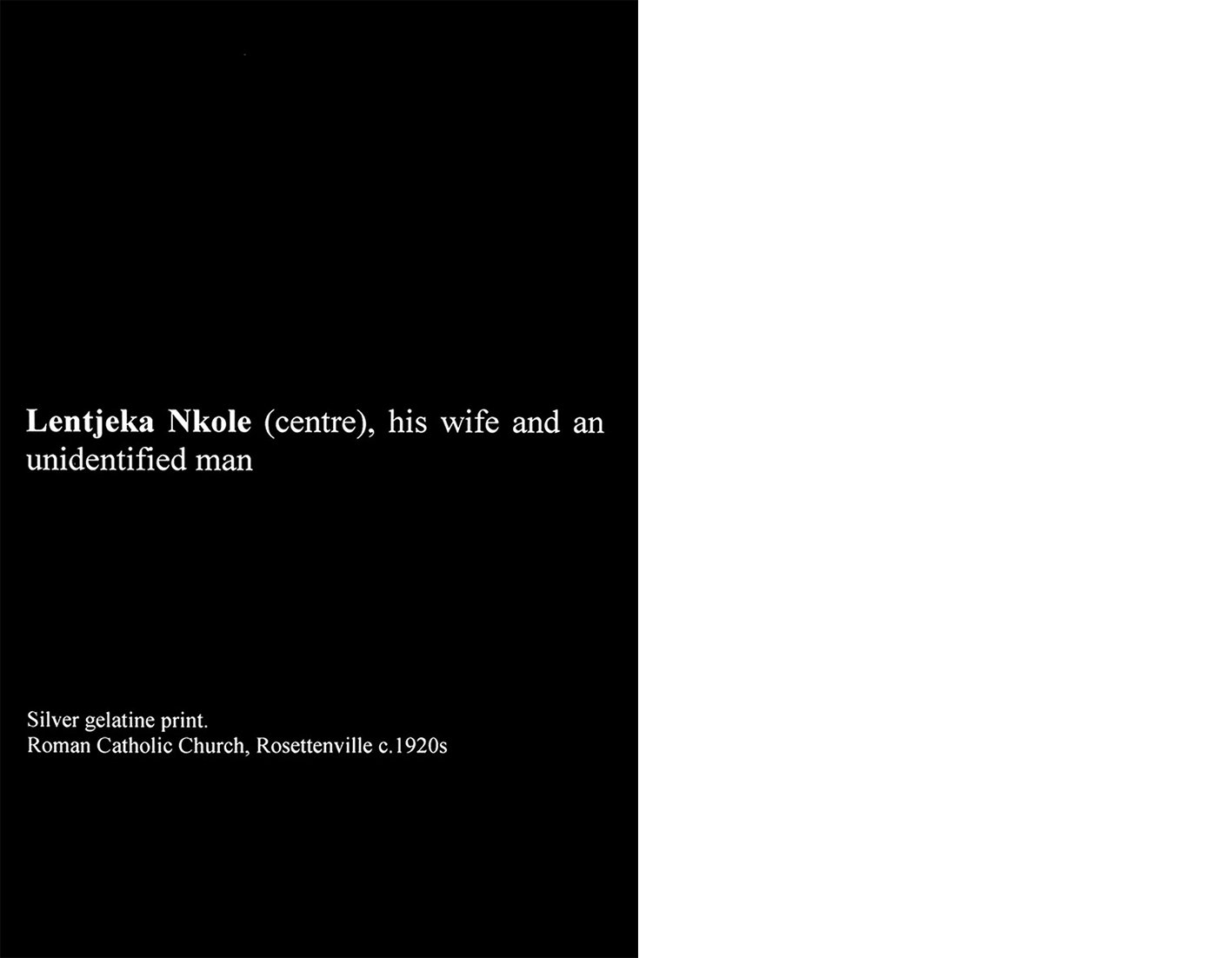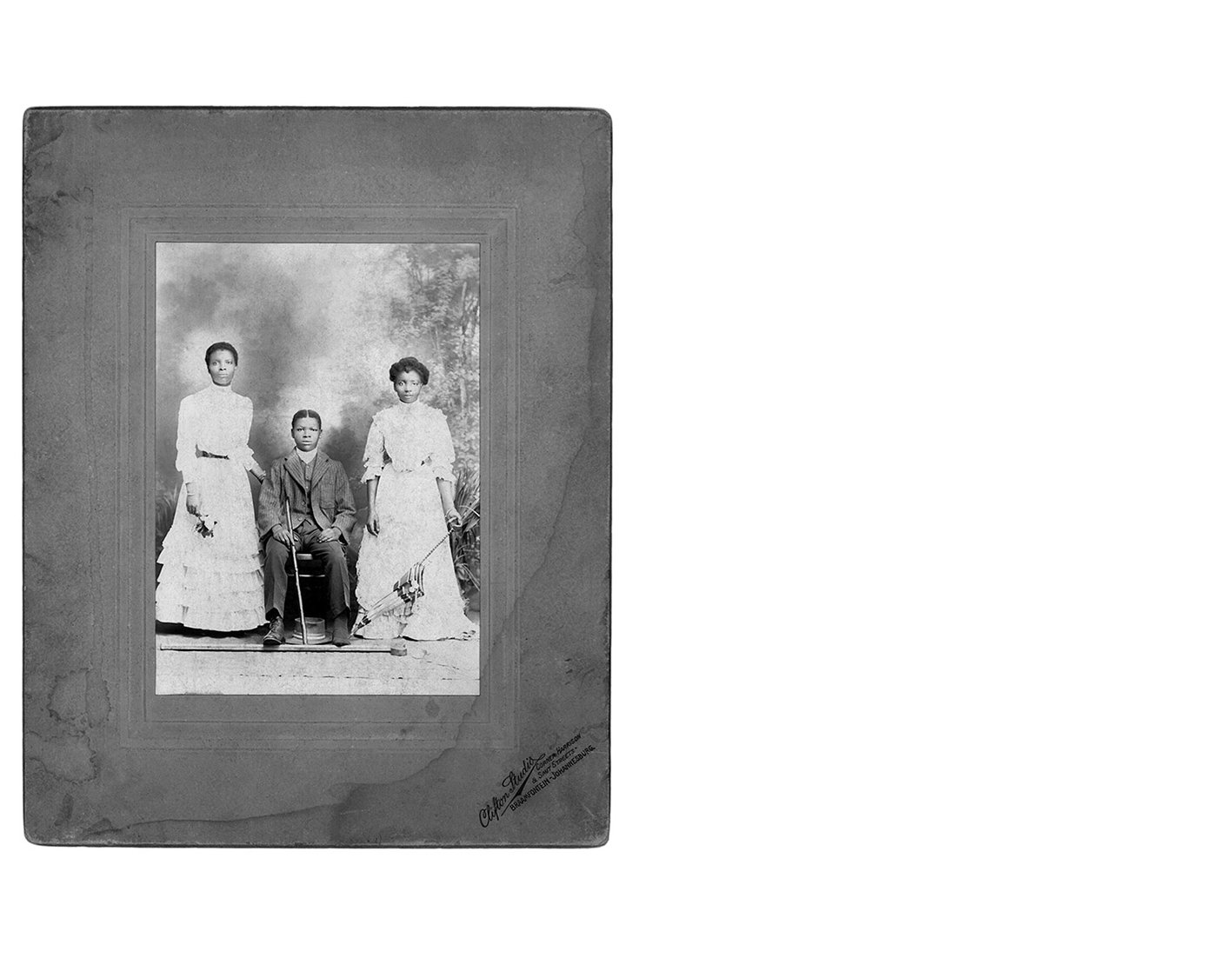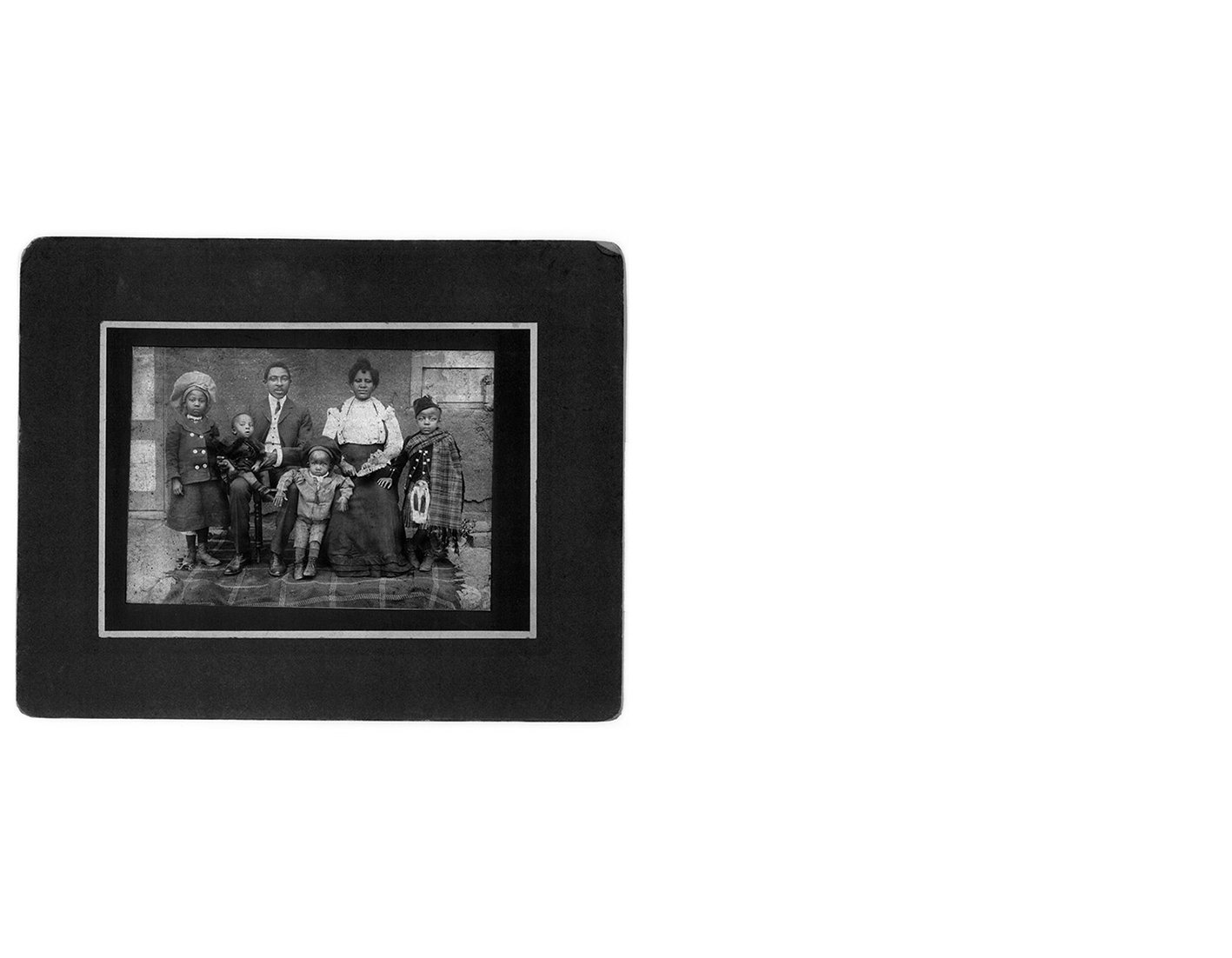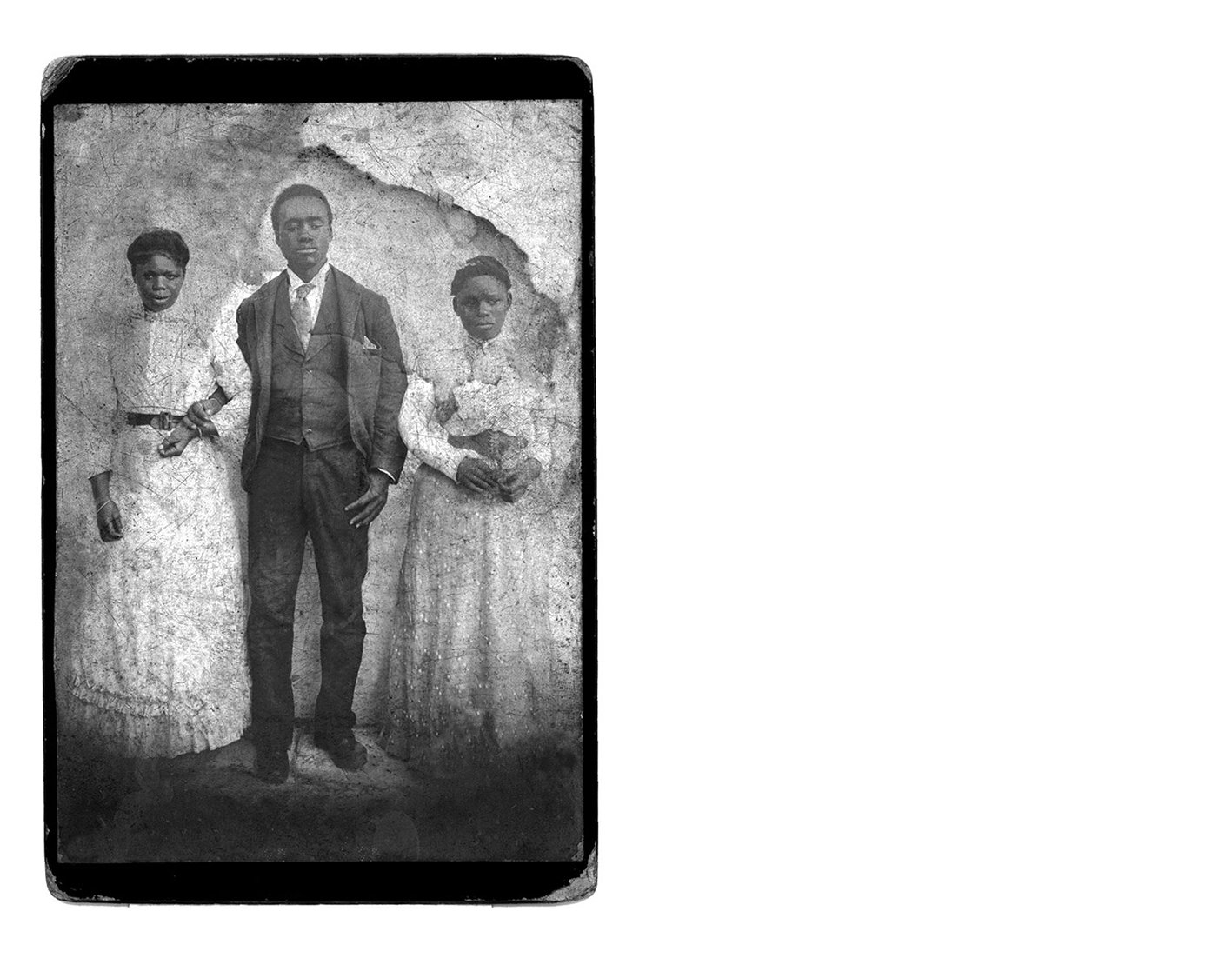Black Photo Album
The Black Photo Album/ Look at me: 1890 - 1950 80 black and white slide projection/ 1997
“… with the so-called civilized workers, almost without exception their civilization was only skin deep.”
O. Pirow, quoting South African Prime Minister J. B. M. Hertzog
These are images that urban black working- and middle-class families had commissioned, requested, or tacitly sanctioned. They are left behind by dead relatives, where they sometimes hang on obscure parlor walls in the townships. In some families they are coveted as treasures, displacing totems in discursive narratives about identity, lineage, and personality.
And because, to some people, photographs contain the ‘shadow’ (essence) of the subject, they are carefully guarded from the ill will of witches and enemies. In other families they are being destroyed as ‘rubbish’ during spring ‘cleans’ because of interruptions, discontinuities or disaffection with the subject or the narratives encapsulated in the image. Most often they lie hidden to rot through neglect in kists, cupboards, cardboard boxes, and plastic bags.
If the images are not unique, the individuals in them are. Painterly in style, most of them are evocative of artifices of Victorian photography. Some of them may be fiction, a creation of the artist insofar as the setting, the props, the clothing, or the pose are concerned. Nonetheless there is no evidence of coercion. When we look at these images we believe them, for they tell us a little about how these people imagined themselves. We see these images in the terms determined by the subjects themselves, for they have made them their own. They belong and circulate in the domain of the private. That is the position they occupied in the realm of the visual in the nineteenth century. It was never their intention to be hung in galleries as works of art.
The significance of the images lies outside of their frames, i.e. in the realm of the political. They were made in a period when the South African state was being entrenched and policies were being articulated toward a people the government designated ‘Natives.’ It was an era mesmerized by the newly discovered life sciences, such as anthropology, informed by social Darwinism.
A time which spawned all kinds of ‘experts’ (so dearly loved by politicians), who could be conjured up to provide ‘expert knowledge’ on any number of issues including matters ‘race.’ Race thinking was given scientific authority in this period and was used to inform state policy on ‘the Native Question.’
Officially, black people were frequently depicted in the same visual language as the flora and fauna, represented as if in their natural habitat for the collector of natural history. Invariably they were relegated to the lower orders of the species, especially on those occasions when they were depicted as belonging to the ‘great family of man.’
Designated Natives: a discrete group who were considered in a sense citizens, but not altogether citizens. The images so made have formed a part in the schemes of authoritative knowledge on the Natives, serving no small part in the subjection of those populations to imperial power. Images informed by this prevailing ideology have been enshrined in public museums, galleries, libraries, and archives of South Africa. In contrast, the images in this display portray Africans in a very different manner.
Yet all too often these images run the risk of being dismissed or ignored as evidence of pathologies of bourgeois delusions. However, it should be pointed out that, beginning at the turn of the twentieth century and even earlier, there were black people who spurned, questioned, or challenged the government’s racist policies. Many of those integrationists were people who owned property or those who had acquired Christian mission education, and they considered themselves ‘civilized.’ These people, taking their model from colonial officials and settlers, especially the English, lived in manner and dress very similar to those of European immigrants. The images depicted here reflect their sensibilities, aspirations and their self-image.
1 (Ashforth, Adam) Politics of Official Discourse in Twentieth Century South Africa Clarendon Press, Oxford 1990
Refrain
The Black Photo Album / Look at Me: 1890–1950 is drawn from an ongoing research project. The project seeks to create an archive of images that black working- and middle-class families commissioned during the period 1890 to 1950 and the stories about the subjects of the photographs. Those of you with even a cursory knowledge of history will realize the significance of this period. While the world went to war twice during this time, South Africa was busy articulating, entrenching, and legitimating a racist political system that the United Nations later proclaimed, “a crime against humanity!” In keeping with the theme of this analysis, I chose mostly those images that were made in the 1890s to 1900s and a few from the 1910s. A lot of research is still being done to place these images in a more comprehensive context.
The pictures are shown here courtesy of ten families, namely: Dubula of White City Jabavu,
Soweto-Gauteng; Khame of Naledi, Soweto-Gauteng; Mngomezulu of Ledig, Rustenburg- North West Province; Moatshe of Mohlakeng, Randfontein-Gauteng; Modibedi of Mapetla, Soweto-Gauteng; Motsoatsoe of Orlando East, Soweto-Gauteng; Msomi of Mofolo Central, Soweto-Gauteng; Smith of Rocklands, Bloemfontein-Orange Free State; Xorile of Orlando West, Soweto-Gauteng; and Ramela of Orlando East, Soweto-Gauteng.
To create the images presented here, the original photographs were scanned, enhanced, and digitally retouched using Adobe Photoshop software. These digital images were output via an imagesetter and transferred onto 200-lines-per-inch screen negatives, from which contact prints were then produced through a normal photographic printing process.
Santu Mofokeng
Exhibitions: The Black Photo Album / Look at Me: 1890 - 1950
1995
Distorting Mirror / Townships Imagined Worker’s Library, Johannesburg, South Africa
1996
Third International Photographic Biennale Tenerife, Canary Islands, Spain
The Black Photo Album / Look at Me Standard Bank National Arts Festival, Grahamstown, South Africa
1997
Trade Routes: History and Geography—2nd Johannesburg Biennale Johannesburg, South Africa
Fin de Siècle à Johannesburg Le Lieu unique, Nantes, France
1998
Black Photo Album / Look At Me Nederlands Foto Instituut, Rotterdam, Netherlands
3es Rencontres de la Photographie Africaine Bamako, Mali
Demokratins Bilder Bildmuseet, Umeå University, Sweden
1999
Journal des Galeries Photo Fnac, Montparnasse, France
2001-02
The Short Century: Independence and Liberation Movements in Africa 1945-1994
Museum Villa Stuck, Munich, Germany; Museum of Contemporary Art, Chicago, USA; MoMA PS1, Long Island City, USA
2002
Survivre à l’apartheid Maison Européenne de la Photographie, Paris, France
Dislocación, Imagen & Identidad. Sudáfrica. Circulo de Bellas Artes, Madrid, Spain; Sala Rekalde, Bilbao, Spain
2004
Santu Mofokeng David Krut Projects, New York, USA
2005
Making Waves—a selection of works from the SABC art collection Johannesburg, South Africa
2009
Imaginar_Historiar XVI Jornadas de Estudio de la Imagen, Madrid, Spain
2010
Santu Mofokeng: Remaining Past Minchar Art Institute, Tel Aviv, Israel
Darkroom: Photography and New Media in South Africa since 1950 Virginia Museum of Fine Arts, Virginia, USA
Contemporary African Photography from The Walther Collection—Events of the Self: Portraiture and Social Identity The Walther Collection, Neu-Ulm, Germany
2011
(RE)CONSTRUÇÕES, Arte Contemporânea da África Do Sul Rio de Janeiro, Brazil
2011-12
Chasing Shadows: Santu Mofokeng, Thirty Years of Photographic Essays
Jeu de Paume, Paris, France; Kunsthalle Bern, Bern, Switzerland; Bergen Kunsthall, Bergen, Norway; Wits Art Museum, Johannesburg, South Africa
2012
Distance and Desire: Encounters with the African Archive, Part I: “Santu Mofokeng and A.M. Duggan-Cronin” The Walther Collection, New York, USA
2012-13
Narrativas domésticas: más allá del álbum familiar Diputación de Huesca, Spain Poetry and Dream Tate Modern, London, United Kingdom
2013
Ai Weiwei, Romuald Karmakar, Santu Mofokeng, Dayanita Singh. German
Pavilion 2013, 55th International Art Exhibition—La Biennale di Venezia Venice, Italy
African Photography from The Walther Collection—Distance and Desire: Encounters with the African Archive The Walther Collection, Neu-Ulm, Germany
Black Photo Album/Look at Me: 1890-1950 FNB Joburg Art Fair, South Africa
2016
The Taipei Biennial Taipei Fine Arts Museum, Taiwan
2016-17
South Africa The Art of a Nation British Museum, London, United Kingdom
2017-18
The Shadow Archive: An Investigation into Vernacular Portrait Photography The Walther Collection, Project Space, New York, United States
2018
Apologia della Storia - The Historian’s Craft Fondazione ICA Milano, Milano, Italy
2020
African Cosmologies: Photography, Time, and the Other Foto Fest, Houston, United States
2021
Events of the social: Portraiture and Collective Agency African photography from The Walther Collection PHoto España, Madrid, Spain
2022
Aus Südafrika: Santu Mofokeng, William Kentridge, Banele Khoza Kunsthaus Göttingen, Germany
Shifting Dialogues: Photography from The Walther Collection Kunstsammlung Nordrhein-Westfalen, K21, Düsseldorf, Germany
2023
Trace - Formations of Likeness - Photography and Video from the Walther Collection Haus der Kunst, Munich, Germany
Selected Publications: The Black Photo Album / Look at Me: 1890 - 1950
Vuka SA, April 1996
Text: Marilyn Martin
Foundation of Education, Science and Technology, Pretoria, 1996
Nka: Journal of Contemporary African Art, Number 4
Editor: Okwui Enwezor
Essay: Santu Mofokeng
Okwui Enwezor, Spring 1996
Trade Routes: History and Geography—2nd Johannesburg Biennale
Editors: Matthew DeBord, Rory Bester
Essay: Octavio Zaya
Greater Johannesburg Metro Council, South Africa / The Prince Claus Fund, The Netherlands, 1997
Reframing the Black Subject: Ideology and Fantasy in Contemporary South African Representation
Text: Okwui Enwezor
Third Text: Third World Perspectives on Contemporary
Art & Culture, 1997
Grand Street 64: Memory
Editor: Jean Stein
Essays: Santu Mofokeng and Okwui Enwezor
Grand Street Press, New York, 1998
Anthology Revue Noire of African & Indian Ocean Photography
Editors: Pascal Martin Saint Léon & N’Goné Fall Essay: Santu Mofokeng
Revue Noire, Paris, 1999
Journal des Galeries photo: mars—avril 1999
Editor: Laura Serani
Text: Santu Mofokeng
Magasins Fnac, Paris, 1999
The Short Century: Independence and Liberation Movements in Africa 1945-1994
Editor: Okwui Enwezor
Essay: Lauri Firstenberg
Prestel Publishing, Munich, 2001
Dislocación, Imagen & Identidad. Sudáfrica
Curator: Daniela Tilkin
La Fábrica, Madrid, 2002
Chimurenga Magazine
Editor: Ntone Edjabe
Chimurenga, Cape Town, 2002
Hans Ulrich Obrist, Interviews, Volume 1
Editor: Thomas Boutoux
Edizioni Charta, Milan, 2003
Making Waves—a selection of works from the SABC art collection
Authors: Koulla Xinisteris and Graham Neame
SABC, Johannesburg, 2005
Messages and Meaning—The MTN Art Collection
Editor: Philippa Hobbs
Essay: Clive Kellner
David Krut Publishing, Johannesburg, 2006
Photography and Africa
Author: Erin Haney
Reaktion Books Ltd, London, 2010
Contemporary African Photography from The Walther Collection—Events of the Self: Portraiture and Social Identity
Editor: Okwui Enwezor
Essay: Santu Mofokeng
The Walther Collection / Steidl, Germany, 2010
(RE)CONSTRUÇÕES, Arte Contemporânea da África Do Sul
Editor: Daniella Géo
Texts: Daniella Géo, David Koloane, Guilherme Bueno
Niterói Museum of Contemporary Art, Rio de Janeiro, 2011
Chasing Shadows: Santu Mofokeng,
Thirty Years of Photographic Essays
Editor: Corinne Diserens
Essays: Adam Ashforth, Okwui Enwezor, Patricia Hayes, Sarat Maharaj, Ivan Vladislavic and Sabine Vogel
Prestel Verlag, Munich—London—New York, 2011
EXIT 45: NUEVO DOCUMENTALISMO
Editor: Carolina Garcia
Essay: Santu Mofokeng
Cataclismo, Madrid, 2012
UNFIXED: Photography and Postcolonial Perspectives in Contemporary Art
Editors: Sara Blokland and Asmara Pelupessy
Essay: Kobena Mercer
Jap Sam Books, Heijningen, UNFIXED Projects, Amsterdam, 2012
Distance and Desire: Encounters with the African Archive, Part I: “Santu Mofokeng and
A.M. Duggan-Cronin”
Editor: Tamar Garb
Essay: Kerryn Greenberg
The Walther Collection, New York, September 2012
African Photography from The Walther Collection— Distance and Desire: Encounters with the African Archive
Editor: Tamar Garb
Essays: Tamar Garb, Jennifer Bajorek
The Walther Collection / Steidl, Göttingen, 2013
Narrativas domésticas: más allá del álbum familiar
Author: Nuria Enguita Mayo
Diputación de Huesca, Spain, 2013
Ai Weiwei, Romuald Karmakar, Santu Mofokeng, Dayanita Singh. German Pavilion 2013
Editor: Susanne Gaensheimer
Essays: Achille Mbembe, Santu Mofokeng
Die Gestalten Verlag, Berlin, 2013
